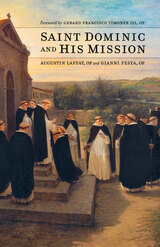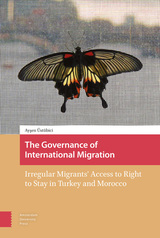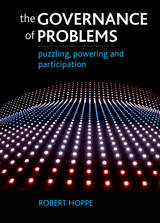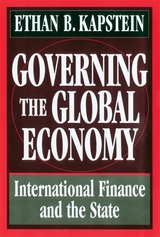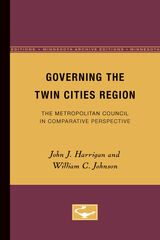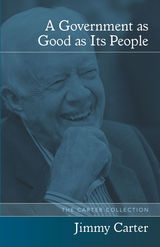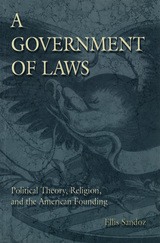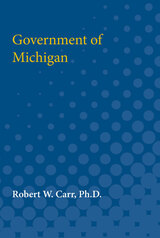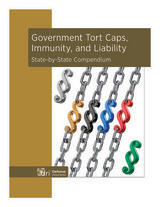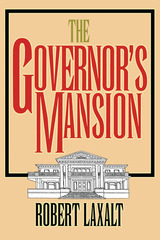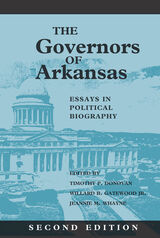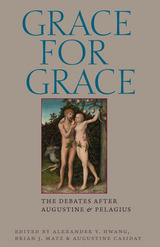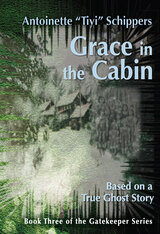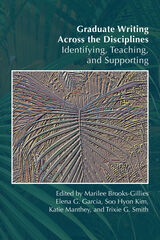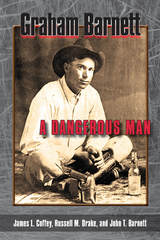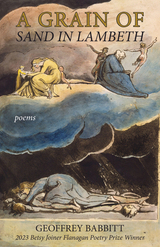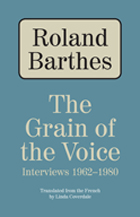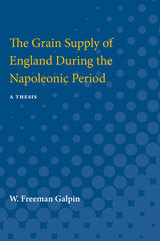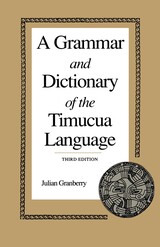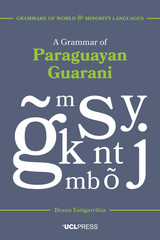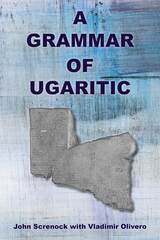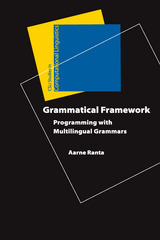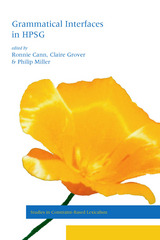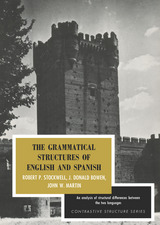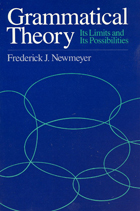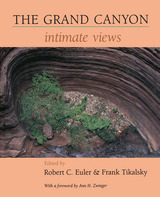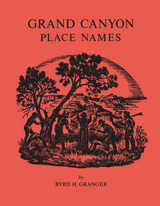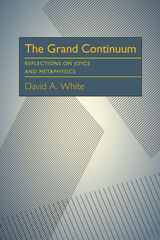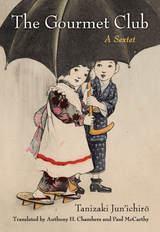 The Gourmet Club: A Sextet
Tanizaki Jun'ichiro; Translated by Anthony H. Chambers and Paul McCarthy
University of Michigan Press, 2017 The decadent tales in this collection span 45 years in the extraordinary career of Japan’s master storyteller, Tanizaki Jun’ichiro¯ (1886–1965), the author of Naomi, A Cat, a Man, and Two Women, and The Makioka Sisters. Made accessible in English by the expertise of translators Anthony H. Chambers and Paul McCarthy, the stories in The Gourmet Club vividly explore an array of human passions. In “The Children,” three mischievous friends play sadomasochistic games in a mysterious Western-style mansion. The sybaritic narrator of “The Secret” experiments with cross-dressing as he savors the delights of duplicity. “The Two Acolytes” evokes the conflicting attractions of spiritual fulfillment and worldly pleasure in medieval Kyoto. In the title story, the seductive tastes, aromas, and textures of outlandish Chinese dishes blend with those of the seductive hands that proffer them to blindfolded gourmets. In “Mr. Bluemound,” Tanizaki, who wrote for a film studio in the early 1920s, considers the relationship between a flesh-and-blood actress and her image fixed on celluloid, which one memorably degenerate admirer is obsessed with. And, finally, “Manganese Dioxide Dreams” offers a tantalizing insight into the author’s mind as he weaves together the musings of an old man very like Tanizaki himself-Chinese and Japanese cuisine, a French murder movie, Chinese history, and the contents of a toilet bowl. These beautifully translated stories will intrigue and entertain readers who are new to Tanizaki, as well as those who have already explored the bizarre world of his imagination.
 Govan Mbeki
Colin Bundy
Ohio University Press, 2012 Govan Mbeki (1910–2001) was a core leader of the African National Congress, the Communist Party, and the armed wing of the ANC during the struggle against apartheid. Known as a hard-liner, Mbeki was a prolific writer and combined in a rare way the attributes of intellectual and activist, political theorist and practitioner. Sentenced to life in prison in 1964 along with Nelson Mandela and others, he was sent to the notorious Robben Island prison, where he continued to write even as tension grew between himself, Mandela, and other leaders over the future of the national liberation movement. As one of the greatest leaders of the antiapartheid movement, and the father of Thabo Mbeki, president of South Africa from 1999 to 2008, the elder Mbeki holds a unique position in South African politics and history. This biography by noted historian Colin Bundy goes beyond the narrative details of his long life: it analyzes his thinking, expressed in his writings over fifty years. Bundy helps establish what is distinctive about Mbeki: as African nationalist and as committed Marxist—and more than any other leader of the liberation movement—he sought to link theory and practice, ideas and action. Drawing on exclusive interviews Bundy did with Mbeki, careful analysis of his writings, and the range of scholarship about his life, this biography is personal, reflective, thoroughly researched, and eminently readable.
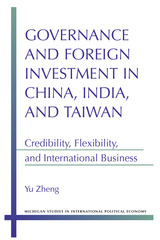 Governance and Foreign Investment in China, India, and Taiwan: Credibility, Flexibility, and International Business
Yu Zheng
University of Michigan Press, 2014 Yu Zheng challenges the idea that democracy is the prerequisite for developing countries to attract foreign direct investment (FDI) and promote economic growth. He examines the relationship between political institutions and FDI through the use of cross-national analysis and case studies of three rapidly growing Asian economies with a focus on the role of microinstitutional “special economic zones” (SEZ). China’s authoritarian system allows for bold, radical economic reform, but China has attracted FDI largely because of its increasingly credible investment environment as well as its central and local governments’ efforts to overcome constraints on investment. India’s democratic institutions provide more political assurance to foreign investors, but its market became conducive to FDI only when the government adopted more flexible investment policies. Taiwan’s democratic transition shifted its balance of policy credibility and flexibility, which was essential for the nation’s economic takeoff and sustained growth. Zheng concludes that a more accurate understanding of the relationship between political institutions and FDI comes from careful analysis of institutional arrangements that entail a trade-off between credibility and flexibility of governance.
 Governance and Performance: New Perspectives
Carolyn J. Heinrich and Laurence E. Lynn Jr., Editors
Georgetown University Press, 2000 Drawing on recent advances in the social sciences, this volume shows how rigorous, theory-based empirical research can help improve the management of public policies and programs—and how better governance can lead to better performance. These original essays demonstrate how better data and improved statistical techniques have allowed researchers to construct more complex models of governance processes and thereby assess the effects of many variables on policy and program outcomes. They present useful research results that illuminate such issues as automatic grade advancement in public schools, management of federally-funded job-training programs, reducing welfare caseloads, and management of welfare-to-work programs. Illustrating a range of theoretical and methodological possibilities, this book shows how more sophisticated research in public management can help improve government performance.
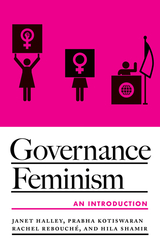 Governance Feminism: An Introduction
Janet Halley
University of Minnesota Press, 2018 Describing and assessing feminist inroads into the state
Feminists walk the halls of power. Governance Feminism: An Introduction shows how some feminists and feminist ideas—but by no means all—have entered into state and state-like power in recent years. Being a feminist can qualify you for a job in the United Nations, the World Bank, the International Criminal Court, the local prosecutor’s office, or the child welfare bureaucracy. Feminists have built institutions and participate in governance. The authors argue that governance feminism is institutionally diverse and globally distributed. It emerges from grassroots activism as well as statutes and treaties, as crime control and as immanent bureaucracy. Conflicts among feminists—global North and South; left, center, and right—emerge as struggles over governance. This volume collects examples from the United States, Israel, India, and from transnational human rights law. Governance feminism poses new challenges for feminists: How shall we assess our successes and failures? What responsibility do we shoulder for the outcomes of our work? For the compromises and strange bedfellows we took on along the way? Can feminism foster a critique of its own successes? This volume offers a pathway to critical engagement with these pressing and significant questions.
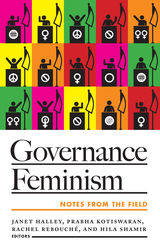 Governance Feminism: Notes from the Field
Janet Halley
University of Minnesota Press, 2019 An interdisciplinary, multifaceted look at feminist engagements with governance across the global North and global South
Governance Feminism: Notes from the Field brings together nineteen chapters from leading feminist scholars and activists to critically describe and assess contemporary feminist engagements with state and state-like power. Gathering examples from North America, South America, Europe, Asia, and the Middle East, it complements and expands on the companion volume Governance Feminism: An Introduction. Its chapters argue that governance feminism (GF) is institutionally diverse and globally distributed—emerging from traditional sites of state power as well as from various forms of governance and operating at the grassroots level, in the private sector, in civil society, and in international relations.
The book begins by confronting the key role that crime and punishment play in GFeminist projects. Here, contributors explore the ideological and political conditions under which this branch of GF became so robust and rethink the carceral turn. Other chapters speak to another face of GFeminism: feminists finding, in mundane and seemingly unspectacular bureaucratic tools, leverage to bring about change in policy and governance practices. Several contributions highlight the political, strategic, and ethical challenges that feminists and LGBT activists must negotiate to play on the governmental field. The book concludes with a focus on feminist interventions in postcolonial legal and political orders, looking at new policy spaces opened up by conflict, postconflict, and occupation. Providing a clear, cross-cutting, critical lens through which to map developments in feminist governance around the world, Governance Feminism: Notes from the Field makes sense of the costs and benefits of current feminist realities to reimagine feminist futures.
Contributors: Libby Adler, Northeastern U; Aziza Ahmed, Northeastern U; Elizabeth Bernstein, Barnard College; Amy J. Cohen, Ohio State U; Karen Engle, U of Texas at Austin; Jacob Gersen, Harvard U; Leigh Goodmark, U of Maryland; Aeyal Gross, Tel Aviv U; Aya Gruber, U of Colorado, Boulder; Janet Halley, Harvard U; Rema Hammami, Birzeit U, Palestine; Vanja Hamzić, U of London; Isabel Cristina Jaramillo-Sierra; Prabha Kotiswaran, King’s College London; Maleiha Malik, King’s College London; Vasuki Nesiah, New York U; Dianne Otto, Melbourne Law School; Helen Reece; Darren Rosenblum, Pace U; Jeannie Suk Gersen, Harvard U; Mariana Valverde, U of Toronto.
 Governance in Dark Times: Practical Philosophy for Public Service
Camilla Stivers
Georgetown University Press, 2008 With the rush of calamitous events in recent years—the September 11 terror attacks, the Iraq imbroglio, and hurricanes Katrina and Rita—Americans feel themselves to be living in dark times. Trust in one another and in the government is at low ebb. People in public service face profound challenges to the meaning and efficacy of their work. Where can a public servant turn for a public philosophy to sustain practice? Inspired by Hannah Arendt and several other philosophers, Governance in Dark Times is the first book to explore the philosophical and value underpinnings needed to guide public servants in these times. Featuring down-to-earth discussions of such issues as terrorism, torture, and homeland security, it suggests ways for people in government to think more deeply, judge more wisely, and act more meaningfully. Camilla Stivers argues that the most urgent requirement in dark times is re-kindling what Arendt called "the light of the public," and offers practical steps for public servants to create spaces for citizen dialogue and engagement in public life. Ideas like "governance of the common ground" and "public service as social hope" will spark discussion and encourage renewed dedication to the work of governing. Grounded in the author's more than thirty years of teaching and administrative practice, Governance in Dark Times urges public servants in clear, jargon-free prose to reflect, to understand the world we live in, and to act responsibly, both individually and with fellow citizens.
 Governance in the Americas: Decentralization, Democracy, and Subnational Government in Brazil, Mexico, and the USA
Robert R. Wilson
University of Notre Dame Press, 2008
Governance in the Americas, a multidisciplinary volume, offers important new insights about decentralization, federalism, and democratic change in the three largest federal nations in the Americas: Brazil, Mexico, and the United States. Originating in a major research project conducted by teams in each of the three countries, this study contributes significantly to our understanding of how representative and participatory democracy is being constructed at state and local levels in the recently emerged democracies of Brazil and Mexico, and is being recast and sustained in the United States. The contributors evaluate the performance of subnational governments, as these societies become more genuinely decentralized, and as new actors and managerial routines create and implement public policy. The authors challenge the criticism of “exceptionalism” in the United States, seeking instead to understand the points of convergence and divergence among the three countries as each seeks to improve the effectiveness and public accountability of its policy-making processes.
“Throughout the world, subnational levels of government are actively absorbing new responsibilities and resources; they are simultaneously under pressure to be more responsive and democratic. But where have these changes come from? How are they affecting the governance of political systems? Will citizens be better off as subnational governments assume a greater role in making decisions and managing public policies and services? This important volume, exploring decentralization and democratization at the subnational level in Mexico, Brazil, and the United States, provides deeply informative responses to these questions. It is a well-crafted ‘must’ for students of decentralization and governance.” —Merilee S. Grindle, Director, David Rockefeller Center for Latin American Studies, Harvard University
“This book is ambitious in scope, synthesizing political patterns in three of the hemisphere’s largest countries and most complex economies, discussing a multitude of subnational actors and institutions in each of these countries, and covering broad stretches of time in each country.” —Kent Eaton, University of California, Santa Cruz
“The 21st century has brought a new interest in studying the relationship between structures of government and democracy. This book, focusing on three countries in the Americas, is a thorough and important example of the substantive consequences of recent decisions related to centralization and decentralization. It should be on the bookshelves of students of federalism and intergovernmental relations around the globe.” —Beryl A. Radin, American University
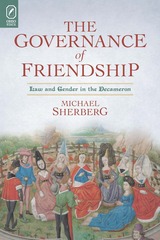 The Governance of Friendship: Law and Gender in the Decameron
Michael Sherberg
Ohio State University Press, 2011 The Governance of Friendship: Law and Gender in the DECAMERON by Michael Sherberg addresses two related and heretofore unexamined problems in the pages of the Decameron: its theory of friendship and the legal theory embedded in it. Sherberg shows how Aristotle’s Ethics as well as Thomas Aquinas’s Summa Theologica inform these two discourses, at the intersection of which Boccaccio locates the question of gender relations which is one of the book’s central concerns.
Through a series of close readings at all three levels of the text—the author’s statements, the frame narrative, and the stories themselves—Sherberg shows how Boccaccio exposes and explores gender tensions rooted in a notion of the patriarchal household, which finds its own rationale in the natural-law postulate of the inferiority of women. Relying on the writings of the great twentieth-century legal theorist Hans Kelsen, Sherberg demonstrates how through the complex architecture of the Decameron Boccaccio dismantles the logic of natural law, exposing it instead as a rhetoric used by men to justify their control of women.
The Governance of Friendship aims well to advance our understanding of Boccaccio as an intellectual: not only steeped in the key texts of his time, but also at the forefront of critical thinking about such issues as law and gender which will play out over the coming centuries and beyond.
The Governance of International Migration: Irregular Migrants' Access to Right to Stay in Turkey and Morocco
Aysen Üstübici
Amsterdam University Press, 2018 As concern about immigration has grown within Europe in recent years, the European Union has brought pressure to bear on countries that are allegedly not sufficiently governing irregular migration with and within their borders. This book looks at that issue in Turkey and Morocco, showing how it affects migrants in these territories, and how migrant illegality has been produced by law, practiced and negotiated by the state, other civil society actors, and by migrants themselves. Aysen Üstübici focuses on a number of different aspects of migrant illegality, such as experiences of deportation, participation in economic life, and access to health care and education, in order to reveal migrants' strategies and the various ways they seek to legitimise their stay.
 Governance of Islam in Pakistan: An Institutional Study of the Council of Islamic Ideology
Sarah Holz
Sussex Academic Press, 2023 A careful study of government regulation of Islam in Pakistan that reconsiders the role of the Council of Islamic Ideology in shaping Pakistani politics.
From debates about banning the veil in Europe to civic re-education programs for Muslim citizens in China, modern states increasingly seek to regulate Islamic expression, practice, and discourse. This book provides a systematic account of how interactions between public and private bodies direct the regulation and standardization of Islam in Pakistan, one of the largest Muslim-majority states in the world, by examining the institutional development of the Council of Islamic Ideology, a constitutional body tasked with issuing advice to the executive branch and legislature on the compatibility of laws with Islam. Drawing from rarely studied archival material and interviews with Council members and government staff, Sarah Holz studies the negotiation of religious expression, practice, and discourse through the framework of governance. Contrary to the common view of such councils as mere rubber stamps in the process of policymaking, Holz argues that the Council is an active player in the governance of Islam. Governance of Islam in Pakistan offers a novel contribution to South Asian and Near and Middle East studies.
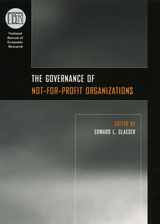 The Governance of Not-for-Profit Organizations
Edited by Edward L. Glaeser
University of Chicago Press, 2003 Not-for-profit organizations play a critical role in the American economy. In health care, education, culture, and religion, we trust not-for-profit firms to serve the interests of their donors, customers, employees, and society at large. We know that such firms don't try to maximize profits, but what do they maximize?
This book attempts to answer that question, assembling leading experts on the economics of the not-for-profit sector to examine the problems of the health care industry, art museums, universities, and even the medieval church. Contributors look at a number of different aspects of not-for-profit operations, from the problems of fundraising, endowments, and governance to specific issues like hospital advertising.
The picture that emerges is complex and surprising. In some cases, not-for-profit firms appear to work extremely well: competition for workers, customers, and donors leads not-for-profit organizations to function as efficiently as any for-profit firm. In other contexts, large endowments and weak governance allow elite workers to maximize their own interests, rather than those of their donors, customers, or society at large.
Taken together, these papers greatly advance our knowledge of the dynamics and operations of not-for-profit organizations, revealing the under-explored systems of pressures and challenges that shape their governance.
 The Governance of Privacy: Privacy as Process: The Need for Resilient Governance
Hans de Bruijn
Amsterdam University Press, 2022 We can hardly underestimate the importance of privacy in our data-driven world. Privacy breaches are not just about disclosing information. Personal data is used to profile and manipulate us - sometimes on such a large scale that it affects society as a whole. What can governments do to protect our privacy?
In The Governance of Privacy Hans de Bruijn first analyses the complexity of the governance challenge, using the metaphor of a journey. At the start, users have strong incentives to share data. Harvested data continue the journey that might lead to a privacy breach, but not necessarily - it can also lead to highly valued services. That is why both preparedness at the start of the journey and resilience during the journey are crucial to privacy protection.
The book then explores three strategies to deal with governments, the market, and society. Governments can use the power of the law; they can exploit the power of the market by stimulating companies to compete on privacy; and they can empower society, strengthening its resilience in a data-driven world.
The Governance of Problems: Puzzling, Powering and Participation
Robert Hoppe
Bristol University Press, 2011 Contemporary democracies need to develop a better governance of problems, as all too often, policy is a sophisticated answer to the wrong problem. This book offers a compelling new approach to public policy-making as problem processing, bringing together aspects of puzzling, powering and participation, relating them in interesting and different ways to cultural theory, to issues about networks, to models of democracy and modes of citizen participation. Part of a growing body of work in policy analysis literature, the book is clearly written and accessibly presented, making this an ideal text for academics and postgraduate students.
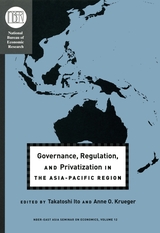 Governance, Regulation, and Privatization in the Asia-Pacific Region
Edited by Takatoshi Ito and Anne O. Krueger
University of Chicago Press, 2004 Over the last twenty-five years, there has been an acceleration in the move from government regulation towards privatization. Governance, Regulation, and Privatization in the Asia-Pacific Region is the first thoroughgoing account of the relative success of the different approaches to privatization as undertaken in Korea, China, Australia, and Japan.
In most contexts, privatization is expected to yield greater efficiency and cost effectiveness while avoiding the corruption and bloated budgets of government regulation or monopoly control. But broad-scale privatization, if ill designed, has also yielded its share of difficulties in East Asia. Privatization sometimes has created a vacuum in corporate governance for some of the region's most important industries and in some cases merely reinstated the monopoly-like configurations. The papers presented in this book discuss the experiences of privatization in several industries, including railroad and telecom, corporate governance problems, accounting issues, and challenges for the future in East Asian countries.
The first section is theoretical in nature and proposes boundaries among government protection, market freedom, and shareholder expectations. The second part is constituted by country case studies, beginning with an analysis of both the Korean financial crisis that followed its 1997 law to privatize large, public sector corporations and the new ways Korean corporations finance themselves. Following is an evaluation of China's approach to privatization, with an in-depth look at the financial transitions of companies slated for initial public offering.
Providing provocative examples of the methods of privatization in the Asia-Pacific region specifically, these papers will be of huge import to any economist or policymaker interested in transposing those successes for their own region.
 Governing Abroad: Coalition Politics and Foreign Policy in Europe
Sibel Oktay
University of Michigan Press, 2022 From Austria to New Zealand, coalition governments often pave the road to foreign policy. In Western Europe, nearly 90 percent of postwar governments include two or more political parties. Israel, the Middle East’s only consolidated democracy according to many, has never experienced single-party rule in its history. Even the United Kingdom, known for its long streak of single-party rule, now navigates multiparty cabinets. Coalitions are everywhere, but we still have little understanding of how they act in foreign affairs. History shows that coalitions can sometime engage in powerful international commitments such as participating in military operations, but at other times, they postpone their decisions, water down their policy positions, or promise to do less than they otherwise would. What explains these differences in behavior? Governing Abroad unpacks the little-known world of coalition governments to find out. Oktay argues that the specific constellation of parties in government explains why some coalitions can make more assertive foreign policy decisions than others. Building on the rich literature in political science on coalitions, legislatures, and voting behavior, the book weaves together sophisticated statistical analyses of foreign policy events across thirty European countries alongside in-depth case studies from Denmark, the Netherlands, and Finland. It brings political parties back into the study of foreign policy, demonstrating that the size of the coalition, the ideological proximity of the governing parties, and their relationship with the parliamentary opposition together influence the government’s ability to act in the international arena. This book challenges our existing perceptions about the constraints and weaknesses of coalition governments. It sheds new light on the conditions that allow them to act decisively abroad.
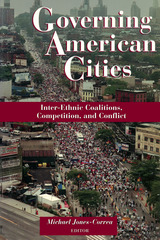 Governing American Cities: Inter-Ethnic Coalitions, Competition, and Conflict
Michael Jones-Correa
Russell Sage Foundation, 2001 The new immigrants who have poured into the United States over the past thirty years are rapidly changing the political landscape of American cities. Like their predecessors at the turn of the century, recent immigrants have settled overwhelmingly in a few large urban areas, where they receive their first sustained experience with government in this country, including its role in policing, housing, health care, education, and the job market. Governing American Cities brings together the best research from both established and rising scholars to examine the changing demographics of America's cities, the experience of these new immigrants, and their impact on urban politics. Building on the experiences of such large ports of entry as Los Angeles, New York, Miami, Houston, Chicago, and Washington D.C., Governing American Cities addresses important questions about the incorporation of the newest immigrants into American political life. Are the new arrivals joining existing political coalitions or forming new ones? Where competition exists among new and old ethnic and racial groups, what are its characteristics and how can it be harnessed to meet the needs of each group? How do the answers to these questions vary across cities and regions? In one chapter, Peter Kwong uses New York's Chinatown to demonstrate how divisions within immigrant communities can cripple efforts to mobilize immigrants politically. Sociologist Guillermo Grenier uses the relationship between blacks and Latinos in Cuban-American dominated Miami to examine the nature of competition in a city largely controlled by a single ethnic group. And Matthew McKeever takes the 1997 mayoral race in Houston as an example of the importance of inter-ethnic relations in forging a successful political consensus. Other contributors compare the response of cities with different institutional set-ups; some cities have turned to the private sector to help incorporate the new arrivals, while others rely on traditional political channels. Governing American Cities crosses geographic and disciplinary borders to provide an illuminating review of the complex political negotiations taking place between new immigrants and previous residents as cities adjust to the newest ethnic succession. A solution-oriented book, the authors use concrete case studies to help formulate suggestions and strategies, and to highlight the importance of reframing urban issues away from the zero-sum battles of the past.
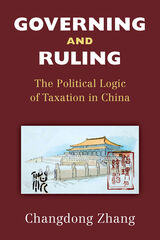 Governing and Ruling: The Political Logic of Taxation in China
Changdong Zhang
University of Michigan Press, 2021 Rapid social economic changes, the transition from a planned economy to a market economy, or even economic liberalization can lead to political instability and the collapse of authoritarian regimes. Despite experiencing all of these unprecedented changes in the past forty years, China under the Chinese Communist Party’s leadership has so far successfully transformed and improved both its governance capacity and its ruling capacity. Governing and Ruling: The Political Logic of Taxation in China addresses this regime resilience puzzle by examining the political logic of its taxation system, especially the ways in which taxation helps China handle three governance problems: maneuvering social control, improving agent discipline, and eliciting cooperation. Changdong Zhang argues that a taxation system plays an important role in sustaining authoritarian rule, in China and elsewhere, by combining co-optation and repression functions. The book collects valuable firsthand and secondhand data; studies China’s taxation system, intergovernmental fiscal relationships, composition of fiscal revenue sources, and tax administration; and discusses how each dimension influences the three governance problems.
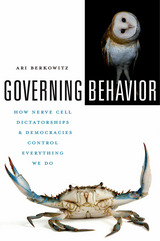 Governing Behavior: How Nerve Cell Dictatorships and Democracies Control Everything We Do
Ari Berkowitz
Harvard University Press, 2016 From simple reflexes to complex choreographies of movement, all animal behavior is governed by a nervous system. But what kind of government is it—a dictatorship or a democracy?
Nervous systems consist of circuits of interconnected nerve cells (neurons) that transmit and receive information via electrical signals. Every moment, each neuron adds up stimulating and inhibiting inputs from many other neurons to determine whether to send an electrical signal to its recipients. Some circuits are dominated by a single “dictator” neuron that gathers information from many sources and then issues commands, such as the Mauthner neuron that triggers escape in fish. In other more “democratic” circuits, such as those mediating eye movements in monkeys, the outcome is determined by a tally of “votes” from a large population of neurons. Rhythmic movements like breathing and locomotion are generated by “government programs” within the central nervous system, but modified by a soup of chemicals and by free market–like feedback from sensory neurons. Nervous systems also use sophisticated surveillance of the surrounding environment and keep track of their own decisions in order to avoid internal conflicts. Nervous systems are not restricted to using one set of procedures at a time. They have evolved over long periods to control behaviors in whichever ways are most effective, and they essentially combine multiple forms of government simultaneously.
Engaging and accessible, Governing Behavior explains the variety of structures and strategies that control behavior, while providing an overview of thought-provoking debates and cutting-edge research in neurobiology.
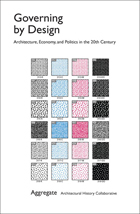 Governing by Design: Architecture, Economy, and Politics in the Twentieth Century
Aggregate
University of Pittsburgh Press, 2012
Governing by Design offers a unique perspective on twentieth-century architectural history. It disputes the primacy placed on individuals in the design and planning process and instead looks to the larger influences of politics, culture, economics, and globalization to uncover the roots of how our built environment evolves.
In these chapters, historians offer their analysis on design as a vehicle for power and as a mediator of social currents. Power is defined through a variety of forms: modernization, obsolescence, technology, capital, ergonomics, biopolitics, and others. The chapters explore the diffusion of power through the establishment of norms and networks that frame human conduct, action, identity, and design. They follow design as it functions through the body, in the home, and at the state and international level.
Overall, Aggregate views the intersection of architecture with the human need for what Foucault termed “governmentality”—societal rules, structures, repetition, and protocols—as a way to provide security and tame risk. Here, the conjunction of power and the power of design reinforces governmentality and infuses a sense of social permanence despite the exceedingly fluid nature of societies and the disintegration of cultural memory in the modern era.
 Governing Divided Societies: Habsburg Austria’s Democratic Legacy and the Czechoslovak First Republic
Philip J. Howe
Central European University Press, 2025 The authors of this volume challenge conventional notions about Habsburg and Czechoslovak politics, arguing that they were more democratic than they often appear. At combining political science and history, the authors’ guiding principle and means of analysis is the consociational model of democracy. This theory, linked best to Arend Lijphart, asserts that consociationalism guarantees minorities a say in government and helps preserve democracy in societies that experience deep ideological, cultural, or ethnic divisions. It enables the main segments to be isolated organizationally from each other, thus avoiding conflict, and affording the leaders to make compromises for the good of the whole. Consociationalism has proven its worth as a model for describing contemporary democracies and diagnosing their ills. By exploring the institutions and practices of the Habsburg Monarchy before 1918 and the Czechoslovak First Republic, Howe, Lorman, and Miller prove the value of the consociational theory at analyzing the past. They hold that a multitude of parties, frequent cabinet changes, and reliance on circles of experts do not necessarily signal flawed democracies, when, in fact, they are features of consociationalism. This book is a call to specialists to view current politics not just in terms of majoritarian democracy but rather by the standard of the consociational democracies.
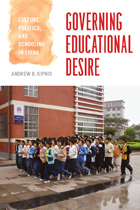 Governing Educational Desire: Culture, Politics, and Schooling in China
Andrew B. Kipnis
University of Chicago Press, 2011 Parents in China greatly value higher education for their children, but the intensity and effects of their desire to achieve this goal have largely gone unexamined—until now. Governing Educational Desire explores the cultural, political, and economic origins of Chinese desire for a college education as well as its vast consequences, which include household and national economic priorities, birthrates, ethnic relations, and patterns of governance.
Where does this desire come from? Andrew B. Kipnis approaches this question in four different ways. First, he investigates the role of local context by focusing on family and community dynamics in one Chinese county, Zouping. Then, he widens his scope to examine the provincial and national governmental policies that affect educational desire. Next, he explores how contemporary governing practices were shaped by the Confucian examination system, uncovering the historical forces at work in the present. Finally, he looks for the universal in the local, considering the ways aspects of educational desire in Zouping spread throughout China and beyond. In doing so, Kipnis provides not only an illuminating analysis of education in China but also a thought-provoking reflection on what educational desire can tell us about the relationship between culture and government.
 Governing Fortune: Casino Gambling in America
Edward A. Morse and Ernest P. Goss
University of Michigan Press, 2009 Written by a lawyer and an economist, Governing Fortune summarizes the legal framework supporting the gaming industry and reviews the costs and benefits of casinos by showing how tax base and job growth vary widely with site-specific factors. The book sets forth an innovative proposal for the licensing of gamblers as a means to balance the liberty interests of individuals against the social costs generated from problem gambling behavior. Morse and Goss offer both regional and sector comparisons of the gaming industry and accessible data about every aspect of the gaming environment, including the impact of gambling on economic and social environments.
"Goss and Morse provide an outstandingly sound economic understanding of the function and place of casinos in American society, including essential heretofore unavailable grounding in the legal issues that the book accomplishes remarkably effectively. Moreover, this wealth of economic and legal information is transmitted in an engaging and readable manner. Scholarly, thoughtfully collected and authoritative, the book is of interest to any learner of the gambling industry, including students, civic activists, legislators, and scholars."
— Earl Grinols, Baylor University
"In this book, Morse and Goss make important contributions to our understanding of the negative outcomes of the expansion of gambling in America."
— Jon Bruning, Nebraska Attorney General
Edward A. Morse is Professor of Law and holder of the McGrath North Mullin & Kratz Endowed Chair in Business Law at Creighton University School of Law. Ernest P. Goss is Professor of Economics and MacAllister Chair at Creighton University and was a 2004 scholar-in-residence with the Congressional Budget Office.
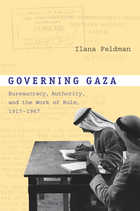 Governing Gaza: Bureaucracy, Authority, and the Work of Rule, 1917–1967
Ilana Feldman
Duke University Press, 2008 Marred by political tumult and violent conflict since the early twentieth century, Gaza has been subject to a multiplicity of rulers. Still not part of a sovereign state, it would seem too exceptional to be a revealing site for a study of government. Ilana Feldman proves otherwise. She demonstrates that a focus on the Gaza Strip uncovers a great deal about how government actually works, not only in that small geographical space but more generally. Gaza’s experience shows how important bureaucracy is for the survival of government. Feldman analyzes civil service in Gaza under the British Mandate (1917–48) and the Egyptian Administration (1948–67). In the process, she sheds light on how governing authority is produced and reproduced; how government persists, even under conditions that seem untenable; and how government affects and is affected by the people and places it governs. Drawing on archival research in Gaza, Cairo, Jerusalem, and London, as well as two years of ethnographic research with retired civil servants in Gaza, Feldman identifies two distinct, and in some ways contradictory, governing practices. She illuminates mechanisms of “reiterative authority” derived from the minutiae of daily bureaucratic practice, such as the repetitions of filing procedures, the accumulation of documents, and the habits of civil servants. Looking at the provision of services, she highlights the practice of “tactical government,” a deliberately restricted mode of rule that makes limited claims about governmental capacity, shifting in response to crisis and operating without long-term planning. This practice made it possible for government to proceed without claiming legitimacy: by holding the question of legitimacy in abeyance. Feldman shows that Gaza’s governments were able to manage under, though not to control, the difficult conditions in Gaza by deploying both the regularity of everyday bureaucracy and the exceptionality of tactical practice.
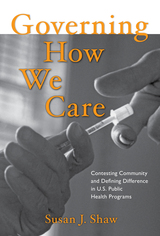 Governing How We Care: Contesting Community and Defining Difference in U.S. Public Health Programs
Susan J. Shaw
Temple University Press, 2012 As local governments and organizations assume more responsibility for ensuring the public health, identity politics play an increasing yet largely unexamined role in public and policy attitudes toward local problems. In Governing How We Care, medical anthropologist Susan Shaw examines the relationship between government and citizens using case studies of needle exchange and Welfare-to-Work programs to illustrate the meanings of cultural difference, ethnicity, and inequality in health care.
Drawing on ethnographic research conducted over six years in a small New England city, Shaw presents critical perspectives on public health intervention efforts. She looks at online developments in health care and makes important correlations between poverty and health care in the urban United States. Shaw also highlights the new concepts of community and forms of identity that emerge in our efforts to provide effective health care. Governing How We Care shows how government-sponsored community health and health care programs operate in an age of neoliberalism.
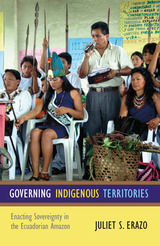 Governing Indigenous Territories: Enacting Sovereignty in the Ecuadorian Amazon
Juliet S. Erazo
Duke University Press, 2013 Governing Indigenous Territories illuminates a paradox of modern indigenous lives. In recent decades, native peoples from Alaska to Cameroon have sought and gained legal title to significant areas of land, not as individuals or families but as large, collective organizations. Obtaining these collective titles represents an enormous accomplishment; it also creates dramatic changes. Once an indigenous territory is legally established, other governments and organizations expect it to act as a unified political entity, making decisions on behalf of its population and managing those living within its borders. A territorial government must mediate between outsiders and a not-always-united population within a context of constantly shifting global development priorities. The people of Rukullakta, a large indigenous territory in Ecuador, have struggled to enact sovereignty since the late 1960s. Drawing broadly applicable lessons from their experiences of self-rule, Juliet S. Erazo shows how collective titling produces new expectations, obligations, and subjectivities within indigenous territories.
 Governing Maya Communities and Lands in Belize: Indigenous Rights, Markets, and Sovereignties
Laurie Kroshus Medina
Rutgers University Press, 2024 Confronting a debt crisis, the Belizean government has strategized to maximize revenues from lands designated as state property, privatizing lands for cash crop production and granting concessions for timber and oil extraction. Meanwhile, conservation NGOs have lobbied to establish protected areas on these lands to address a global biodiversity crisis. They promoted ecotourism as a market-based mechanism to fund both conservation and debt repayment; ecotourism also became a mechanism for governing lands and people—even state actors themselves—through the market. Mopan and Q’eqchi’ Maya communities, dispossessed of lands and livelihoods through these efforts, pursued claims for Indigenous rights to their traditional lands through Inter-American and Belizean judicial systems. This book examines the interplay of conflicting forms of governance that emerged as these strategies intersected: state performances of sovereignty over lands and people, neoliberal rule through the market, and Indigenous rights-claiming, which challenged both market logics and practices of sovereignty.
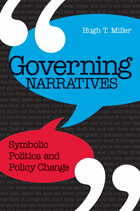 Governing Narratives: Symbolic Politics and Policy Change
Hugh T. Miller
University of Alabama Press, 2012 By highlighting the degree to which meaning making in public policy is more a cultural struggle than a rational and analytical project, Governing Narratives brings public administration back into a political context. In Governing Narratives, Hugh T. Miller takes a narrative approach in conceptualizing the politics of public policy. In this approach, signs and ideographs—that is, constellations of images, feelings, values, and conceptualization—are woven into policy narratives through the use of story lines. For example, the ideograph “acid rain” is part of an environmental narrative that links dead trees to industrial air pollution. The struggle for meaning capture is a political struggle, most in evidence during times of change or when status quo practices are questioned.
Public policy is often considered to be the end result of empirical studies, quantitative analyses, and objective evaluation. But the empirical norms of science and rationality that have informed public policy research have also hidden from view those vexing aspects of public policy discourse outside of methodological rigor.
Phrases such as “three strikes and you’re out” or “flood of immigrants” or “don’t ask, don’t tell” or “crack baby” or “the death tax” have come to play crucial roles in public policy, not because of the reality they are purported to reflect, but because the meanings, emotions, and imagery connoted by these symbolizations resonate in our culture.
Social practices, the very material of social order and cultural stability, are inextricably linked to the policy discourse that accompanies social change. Eventually a winning narrative dominates and becomes institutionalized into practice and implemented via public administration. Policy is symbiotically associated with these winning narratives. Practices might change again, but this inevitably entails renewed political contestation. The competition among symbolizations does not imply that the best narrative wins, only that a narrative has won for the time being. However, unsettling the established narrative is a difficult political task, particularly when the narrative has evolved into habitual institutionalized practice.
Governing Narratives convincingly links public policy to the discourse and rhetoric of deliberative politics.
Governing New York City: Politics in the Metropolis
Wallace Sayre
Russell Sage Foundation, 1960 This widely acclaimed study of political power in a metropolitan community portrays the political system in its entirety and in balance—and retains much of the drama, the excitement, and the special style of New York City. It discusses the stakes and rules of the city's politics, and the individuals, groups, and official agencies influencing government action.
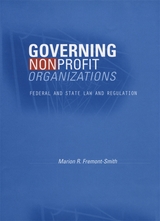 Governing Nonprofit Organizations: Federal and State Law and Regulation
Marion R. Fremont-Smith
Harvard University Press, 2008 The nonprofit sector is a vital component of our society and is allowed the greatest freedom to operate. The public understandably assumes that since nonprofit organizations are established to do good, the people who run nonprofits are altruistic, and the laws governing nonprofits have reflected this assumption. But as Marion Fremont-Smith argues, the rules that govern how nonprofits operate are inadequate, and the regulatory mechanisms designed to enforce the rules need improvement.
Despite repeated instances of negligent management, self-interest at the expense of the charity, and outright fraud, nonprofits continue to receive minimal government regulation. In this time of increased demand for corporate accountability, the need to strengthen regulation of nonprofits is obvious. Fremont-Smith addresses this need from a historical, legal, and organizational perspective. She combines summaries and analysis of the substantive legal rules governing the behavior of charitable officers, directors, and trustees with descriptions of the federal and state regulatory schemes designed to enforce these rules. Her unique and exhaustive historical survey of the law of nonprofit organizations provides a foundation for her analysis of the effectiveness of current law and proposals for its improvement.
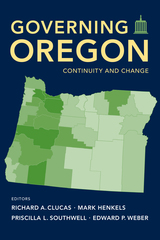 Governing Oregon: Continuity and Change
Richard Clucas
Oregon State University Press, 2018 At the end of the twentieth century, the state government of Oregon was routinely entangled in intense partisan conflict, with opposing sides waging bitter battles in elections, the legislature, and the courts. Many of the most important state laws -- such as Measure 5, which capped property taxes -- were decided through the initiative process rather than by lawmakers in Salem.
As the twenty-first century began, this political dynamic began to shift. Partisan conflict in the capitol grew less rancorous, legislative gridlock eased, and ballot initiatives lost their central role in defining Oregon politics. Less visible changes reshaped issues from agricultural policy to tribal government. This shifting dynamic coincided with significant transformations in Oregon’s economy and cultural life.
The state’s economy sustained severe blows twice in the early 2000s, but by 2014, Oregon boasted one of the fastest-growing economies in the nation. Along with economic expansion, Oregon’s population grew in both size and diversity. Despite these powerful forces of change, other aspects of Oregon political life remained entrenched, including the deep urban-rural divide and the state’s problematic fiscal system.
With contributions from 27 leading experts and political insiders, Governing Oregon: Continuity and Change offers insight into the people, political practices, governing institutions, and public policies of Oregon. It will be of tremendous value to political scientists, public servants, and engaged citizens alike.
Contributors:
Warda Ajaz is a PhD candidate in the School of Public Policy at Oregon State University.
Jeannine Beatrice is Chief of Staff with the Oregon Department of Human Services (DHS).
David Bernell is an Associate Professor of Political Science in the School of Public Policy at Oregon State University.
Joe Bowersox is the Dempsey Endowed Chair of Environmental Policy and Politics in the Department of Environmental and Earth Science at Willamette University.
Alexandra Buylova is a PhD candidate in the School of Public Policy at Oregon State University.
Paul De Muniz retired as Chief Justice of the Oregon Supreme Court in 2012 after serving for twelve years on the court. De Muniz currently teaches at Willamette University College of Law as a Distinguished Jurist in Residence.
Mark Edwards is Professor of Sociology in the School of Public Policy at Oregon State University.
Leanne Giordono is a PhD candidate in the School of Public Policy at Oregon State University and a National Science Foundation Graduate Research Fellow.
Daniel Gray is a Master of Public Policy (MPP) student in the School of Public Policy at Oregon State University.
Sajjad Haider is a PhD candidate at the School of Management, Lanzhou University (China), and a visiting research scholar at the Mark O. Hatfield School of Government, Portland State University.
Jordan Hensley earned a Master of Public Policy (MPP) degree from the School of Public Policy at Oregon State University.
Allison L. Hurst is an Associate Professor of Sociology in the School of Public Policy at Oregon State University.
Abdullah Husain is a PhD candidate in Environmental Sciences at Oregon State University.
Phil Keisling is Director of the Center for Public Service at Portland State University’s Mark O. Hatfield School of Government. He was Oregon Secretary of State from 1991–1999 and a Member of the Oregon House of Representatives from 1989–1991.
Chris Koski is Associate Professor of Environmental Studies and Chair of the Political Science Department at Reed College.
Justin Martin owns and operates, Perseverance Strategies, Inc., a government relations and public affairs firm.
Melissa Buis Michaux is Associate Professor of Politics at Willamette University.
Douglas Morgan is Professor Emeritus of Public Administration and Director of the Executive MPA Program in the Hatfield School of Government at Portland State University.
Sanne A. M. Rijkhoff is a former adjunct assistant professor of political science at Portland State University. She is currently an Eyes High Postdoctoral Associate at the University of Calgary.
Ethan Seltzer is an Emeritus Professor in the Toulan School of Urban Studies and Planning at Portland State University.
Brent S. Steel is Professor and the Director of the Graduate Program in the School of Public Policy at Oregon State University.
Casey L. Taylor is a Postdoctoral Research Associate in the Department of Political Science at Idaho State University.
Rebecca Warner is Professor of Sociology in the School of Public Policy at Oregon State University.
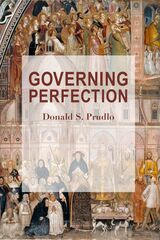 Governing Perfection
Donald S. Prudlo
St. Augustine's Press, 2023 "In the beginning, God administrated." For as Donald Prudlo observes, "There can be no achievement without administration." In this book he seeks to restore the idea that while administration is necessary even in the institutional Church, holiness is not only possible for those charged with governance, but is a fulfillment and type of Christus Rector omnium, or "Christ, Ruler of all.
Scrutinizing the relevant thought of Aristotle, Machiavelli, Thomas Aquinas, and Nietzsche, among others, Prudlo pursues the notion of order in governance and confronts both the bloat of bureaucracy and the "intoxicating nature of power." How can men and women who strive to live out humility and holiness likewise establish and participate in the structures that wield the powers of governance? "For the followers of Christ does not such a combination seem doomed from the outset?" Prudlo advances a thorough investigation of saints of the Christian tradition, whose responses to the problems inherent in authority and administration are living examples of the reality of grace building upon nature.
Of particular interest is Prudlo's historical presentation of the concept of Romanitas, a style of governance inherited from ancient Rome. Four early popes are given close attention for their respective administrations: Damasus I, Leo I, Gelasius I, and Gregory I. Emphasis is also given to the specific administrative genius that emerges from the monastic orders, including the 'Pachomian solution' and the Benedictine Rule. Prudlo gives the reader a portrait of Leo IX's reinvigoration of the ancient practice of 'synodality,' and the centrality of the papacy to internal ecclesial reform. In the context of an inquiry into monastic and papal administrations, readers encounter the beginnings of the Roman Curia as well, and are confronted with the difficulty of inserting new forms of apostolic itinerant preaching into the institutional life of the Church.
This study is an important contribution to the history of the papacy, ecclesiology and its relevance to legal ordering, and administration within governance as affected by multiple legal and cultural traditions. It is a masterful presentation that provides both the framework and reflection needed to inspire true perfection the in administrative forum. The relevance and force of Prudlo's Governing Perfection makes it a choice follow-up to his recent translation of Bartholomew of the Martyr's classic, Stimulus Pastorum: A Charge to Pastors (2022).
2025 Catholic Media Awards Honorable Mention winner
 Governing Pleasures: Pornography and Social Change in England, 1815-1914
Sigel, Lisa Z.
Rutgers University Press, 2002 Governing Pleasures is a historical account of the production, distribution, and consumption of pornography in Great Britain from the early nineteenth century to the turn of the twentieth. Lisa Z. Sigel examines how pornography changed over time as a cultural and symbolic object in British society, and asks: What was considered pornographic? Who looked at pornography and read it? What sorts of messages did this medium transmit to both men and women? What was its thematic content, who controlled it, and how did these messages affect sexual and social dynamics?In contrast to recent ahistorical feminist assertions that pornography necessarily teaches men how to oppress women, Sigel views the use of pornography through the lens of historical and social change. In a careful analysis, she illustrates the cultural complexities of the medium and links Victorian pornography to other arenas such as language, science, consumerism, and politics. Most importantly, the author asserts that pornography offered a way for people to make sense of sexuality and its relationship to their world.Governing Pleasures is a greatly needed examination of a neglected topic. Access to public and private collections of pornography has enabled the author to provide vivid illustrations to bolster her arguments.
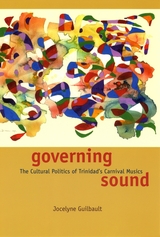 Governing Sound: The Cultural Politics of Trinidad's Carnival Musics
Jocelyne Guilbault
University of Chicago Press, 2007 Calypso music is an integral part of Trinidad’s national identity. When, for instance, Franklin D. Roosevelt asked the great Trinidadian musician Roaring Lion where he was from, Lion famously replied “the land of calypso.” But in a nation as diverse as Trinidad, why is it that calypso has emerged as the emblematic music?
In Governing Sound, Jocelyne Guilbault examines the conditions that have enabled calypso to be valorized, contested, and targeted as a field of cultural politics in Trinidad. The prominence of calypso, Guilbault argues, is uniquely enmeshed in projects of governing and in competing imaginations of nation, race, and diaspora. During the colonial regime, the period of national independence, and recent decades of neoliberal transformation, calypso and its musical offshoots have enabled new cultural formations while simultaneously excluding specific social expressions, political articulations, and artistic traditions. Drawing on over a decade of ethnographic work, Guilbault maps the musical journeys of Trinidad’s most prominent musicians and arrangers and explains the distinct ways their musical sensibilities became audibly entangled with modes of governing, audience demands, and market incentives.
Generously illustrated and complete with an accompanying CD, Governing Sound constitutes the most comprehensive study to date of Trinidad’s carnival musics.
 Governing the Digital Society: Platforms, Artificial Intelligence, and Public Values
José van Dijck
Amsterdam University Press, 2025 Digital technologies have rapidly become integral to communities and societies, bringing both significant benefits and serious concerns. Issues such as misinformation, disinformation, online polarization, discrimination, and widening inequalities have prompted a critical and urgent debate: Can digital societies still be effectively governed? This book brings together insights from various disciplines to address the pressing question: “How can we develop and apply principles of (good) governance in digital societies that are organized democracies?”
Governing the Digital Societypresents a range of governance approaches, focusing on online platforms, artificial intelligence, and the public values that underpin these technologies. The authors position themselves at the forefront of their disciplines, offering perspectives from law, critical data studies, urban studies, science and technology studies, computational linguistics, and the political economy of media. Expert interviews provide additional insights into ongoing efforts to tackle the challenges of governing digital societies. The book demonstrates that governance is not just a technical or legal process but a complex societal one, embedding norms, values, and morality into our institutions and daily lives.
 Governing the End: The Making of Climate Change Loss and Damage
Lisa Vanhala
University of Chicago Press, 2025 A searing account of how the international community is trying—and failing—to address the worst effects of climate change and the differential burdens borne by rich and poor countries. Climate change is increasingly accepted as a global emergency creating irrevocable losses for the planet. Yet, each country experiences these losses differently, and reaching even inadequate political agreements is fraught with contestation. Governing the End untangles the complex relationship between deteriorating environmental conditions, high politics, and everyday diplomatic practices, focusing on the United Nations’ agreement to address “loss and damage” and subsequent battles over implementation. Lisa Vanhala looks at the differing assumptions and strategic framings that poor and rich countries bring to bear and asks why some norms emerge and diffuse while others fail to do so. Governing the End is based on ethnographic observation of eight years of UN meetings and negotiations and more than one hundred and fifty interviews with diplomats, policymakers, UN secretariat staff, experts, and activists. It explores explicit political contestation, as well as the more clandestine politics that have stymied implementation and substantially reduced the scope of compensation to poor countries. In doing so, Governing the End elucidates the successes and failures of international climate governance, revealing the importance of how ideas are constructed and then institutionally embodied.
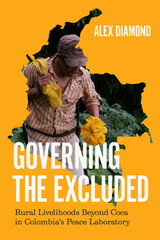 Governing the Excluded: Rural Livelihoods Beyond Coca in Colombia's Peace Laboratory
Alex Diamond
University of Chicago Press, 2026 An on-the-ground description of Colombia’s peace process as lived by the rural populations most affected by it.
The Colombian village of Briceño might, at first glimpse, look like many communities in the rural Global South. Many of the people living there rely on small-scale farming, even as a newly constructed hydroelectric dam threatens traditional livelihoods. Yet after decades where Briceño suffered from a bloody conflict, the village has more recently become central to the nation’s hopes for peace. In Governing the Excluded, sociologist Alex Diamond shares a closer look at Briceño and offers unique insight not only into the contemporary Colombian state but to how people across the Global South are struggling to maintain rural livelihoods amid economic dispossession.
Governing the Excluded describes a landmark peace process between the Colombian government and the radical FARC guerrillas from the perspective of Colombian farmers, drawing links between economic transformation, drug economies, and armed conflict. Exclusion from global markets for traditional crops like coffee first pushed farmers to grow coca, the raw material for cocaine. This ushered in an era of violent conflict for control of the illicit economy, while farmers continued to be priced out of legal markets. In exchange for peace and state protection, farmers ultimately agreed to sacrifice profitable coca. But with its disappearance, they now find themselves dependent on the state: for machinery to maintain the roads they need to get legal harvests to market, municipal jobs that are the only decent work available, and for public resources to subsidize food crops with razor-thin profit margins. Ongoing economic struggles in the legal sector make the state’s newfound authority tenuous, as some villagers replant coca, abandon the village for uncertain urban futures, or join a rearmed guerrilla group.
Informed by deep ethnographic research and firsthand stories from Briceño residents, Governing the Excluded shows that when it comes to the forces driving dispossession—be they international corporate megaprojects, global food prices, or national initiatives to replace coca cultivation—state authority goes only so far as its ability to sustain local livelihoods.
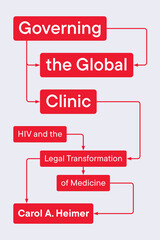 Governing the Global Clinic: HIV and the Legal Transformation of Medicine
Carol A. Heimer
University of Chicago Press, 2025 A deep examination of how new, legalistic norms affected the trajectory of global HIV care and altered the practice of medicine. HIV emerged in the world at a time when medicine and healthcare were undergoing two major transformations: globalization and a turn toward legally inflected, rule-based ways of doing things. It accelerated both trends. While pestilence and disease are generally considered the domain of biological sciences and medicine, social arrangements—and law in particular—are also crucial. Drawing on years of research in HIV clinics in the United States, Thailand, South Africa, and Uganda, Governing the Global Clinic examines how growing norms of legalized accountability have altered the work of healthcare systems and how the effects of legalization vary across different national contexts. A key feature of legalism is universalistic language, but, in practice, rules are usually imported from richer countries (especially the United States) to poorer ones that have less adequate infrastructure and fewer resources with which to implement them. Challenging readers to reconsider the impulse to use law to organize and govern social life, Governing the Global Clinic poses difficult questions: When do rules solve problems, and when do they create new problems? When do rules become decoupled from ethics, and when do they lead to deeper moral commitments? When do rules reduce inequality? And when do they reflect, reproduce, and even amplify inequality?
Governing the Global Economy: International Finance and the State
Ethan Kapstein
Harvard University Press, 1994 No area has become more global in its operations, more volatile, and thus more difficult to monitor and control than international banking. In this book, the international banker and political economist Ethan Kapstein explores the actions that governments have taken to cope with the economic and political consequences associated with the globalization of international finance.
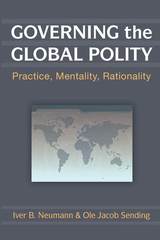 Governing the Global Polity: Practice, Mentality, Rationality
Iver B. Neumann and Ole Jacob Sending
University of Michigan Press, 2010 "There have been many attempts to adapt Foucault's arguments to the study of international relations, but this powerful and provocative book is the most sustained, and arguably the most successful in showing how the governmentality approach can be adapted to the analysis of global politics."
---Barry Hindess, Research School of Social Sciences, The Australian National University A highly welcome and original contribution to contemporary debates on the shape and future of the international system and on the possibility of reconfiguring IR theory as social theory."
---Mathias Albert, Bielefeld University, Germany "Iver Neumann and Ole Jacob Sending have put meat on the bones of Michel Foucault's notion of governmentality, fulfilling the hopes of long-famished students and scholars of global governance. Through their focus on specific case studies, the authors have provided a much-needed contribution to the international relations literature, one that is sure to become a staple of courses and seminars throughout the world."
---Ronnie D. Lipschutz, University of California, Santa Cruz What does globalization mean for the principle of state sovereignty and for the power and functioning of states? Whereas realists assert the continued importance of states, constructivists contend that various political entities as well as the logic of globalization itself undermine state sovereignty. Drawing on the state formation literature and on social theory, particularly the works of Weber and Foucault, Iver B. Neumann and Ole Jacob Sending question the terms of the realist-constructionist debate. Through detailed case studies, they demonstrate that states use nongovernmental organizations and international organizations indirectly to enforce social order and, ultimately, to increase their own power. At the same time, global politics is dominated by a liberal political rationality that states ignore at their peril. While states remain as strong as ever, they operate within a global polity of new hierarchies among states and between states and other actors. Iver B. Neumann is Director of Research at the Norwegian Institute of International Affairs and Professor of Russian Studies at the University of Oslo. Ole Jacob Sending is Senior Researcher at the Norwegian Institute of International Affairs, where he heads the Research Programme on Global Governance and International Organizations. Cover art credit: © iStockphoto.com/Will Evans Also available as an e-book.
 Governing the New Europe
Jack Hayward and Edward C. Page, eds.
Duke University Press, 1995 Governing the New Europe provides a comprehensive and scholarly account of the changing political map of Europe as it emerges from the Cold War. Exploring the variations of liberal democracy and market economy among the European states, as well as current trends in these directions, the contributors to this volume, all leading authorities in European politics, consider whether a common political model has begun to emerge out of historic European diversity. Beginning with a discussion of the political, economic, and cultural development of Europe from a historical perspective, the focus of the book shifts to an examination of the changing forms of European democracy and the move from public ownership and planning to privatization and deregulated competition. Further essays analyze the challenge to national party systems and electoral performance from emerging social movements and organized interest groups. Political and bureaucratic structures are also examined as is the new European constitutionalism reflected in the increasingly significant role of the judiciary. Lastly, attention is turned to several major themes in European politics: the changing foundations of foreign and security policy, the function of industrial champion firms, and the retreat from the welfare state. Primarily comparative in its scope, Governing the New Europe does devote particular attention to specific major states as well as to the importance of the European Union to the political life of member and non-member countries. Neither exaggerating the common features of the patterns that have emerged in contemporary Europe nor capitulating to the complexity of enduring differences and instabilities between states, Governing the New Europe will become one of the standard texts in its field. Contributors. Jack Hayward, Jolyon Howorth, Herbert Kitschelt, Marie Lavigne, Tom Mackie, Michael Mezey, Edward C. Page, Richard Parry, Richard Rose, Anthony Smith, Alec Stone
Governing the Twin Cities Region: The Metropolitan Council in Comparative Perspective
John Harrigan
University of Minnesota Press, 1978
Governing the Twin Cities Region was first published in 1978.This account of the development and analysis of the current powers and policies of the Metropolitan Council of the Twin Cities of Minneapolis and St. Paul is particularly useful as a text for courses in urban politics and state and local government. It is valuable also for urban specialists in public and private agencies across the country and of interest to concerned citizens, especially in the Twin Cities and Upper Midwest region. The authors compare the Twin Cities’ experience in metropolitan reform with that of other regions, discuss in detail the policy-making process, the substance of the policies, and the politics of implementation, and and evaluate the accomplishments of the Council.
 Governing the Wild: Ecotours of Power
Stephanie Rutherford
University of Minnesota Press, 2011 Take four emblematic American scenes: the Hall of Biodiversity at the American Museum of Natural History in New York; Disney’s Animal Kingdom theme park in Orlando; an ecotour of Yellowstone and Grand Teton National Parks; the film An Inconvenient Truth. Other than expressing a common interest in the environment, they seem quite dissimilar. And yet, as Governing the Wild makes clear, these sites are all manifestations of green governmentality, each seeking to define and regulate our understanding, experience, and treatment of nature. Stephanie Rutherford shows how the museum presents a scientized assessment of global nature under threat; the Animal Kingdom demonstrates that a corporation can successfully organize a biopolitical project; the ecotour, operating as a school for a natural aesthetic sensibility, provides a visual grammar of pristine national nature; and the film offers a toehold on a moral way of encountering nature. But one very powerful force unites the disparate “truths” of nature produced through these sites, and that, Rutherford tells us, is their debt to nature’s commodification. Rutherford’s analysis reveals how each site integrates nature, power, and profit to make the buying and selling of nature critical to our understanding and rescuing of it. The combination, she argues, renders other ways of encountering nature—particularly more radically environmental ways—unthinkable.
 Governing the Wind Energy Commons: Renewable Energy and Community Development
Keith A. Taylor
West Virginia University Press, 2019 Wind energy is often framed as a factor in rural economic development, an element of the emerging “green economy” destined to upset the dominant greenhouse- gas-emitting energy industry and deliver conscious capitalism to host communities. The bulk of wind energy firms, however, are subsidiaries of the same fossil fuel companies that wrought havoc in shale-gas and coal-mining towns from rural Appalachia to the Great Plains. On its own, wind energy development does not automatically translate into community development. In Governing the Wind Energy Commons, Keith Taylor asks whether revenue generated by wind power can be put to community well-being rather than corporate profit. He looks to the promising example of rural electric cooperatives, owned and governed by the 42 million Americans they serve, which generate $40 billion in annual revenue. Through case studies of a North Dakota wind energy cooperative and an investor-owned wind farm in Illinois, Taylor examines how regulatory and social forces are shaping this emerging energy sector. He draws on interviews with local residents to assess strategies for tipping the balance of power away from absentee-owned utilities.
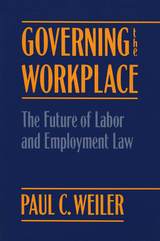 Governing the Workplace: The Future of Labor and Employment Law
Paul C. Weiler
Harvard University Press, 1990 During the past thirty years, the American workplace has undergone fundamental changes in the composition of its workforce, its technology, its financial structure, and its competitive position. These social and economic transformations have been paralleled by equally profound changes in the legal framework of the employment relationship. The National Labor Relations Act has proved incapable of protecting the long-established right of employees to union representation against growing resistance by employers. And to fill the gap created by the decline of unions, the legislatures and courts have been busy creating and enforcing many new individual employee rights.
Governing the Workplace addresses this new world of work. Its main concern is with the question of who will represent the interests of workers in major decisions about their lives: how and when they will be hired, fired, and retired, and how they will be treated when they are on the job. The book examines in vivid detail many real-life problems, ranging from wrongful dismissal and mandatory drug testing to pay equity and occupational safety, to employee involvement on the shop floor and in the corporate boardroom. Should workers be represented by a lawyer in the courtroom, by a government official in charge of an administrative program, by the employer’s personnel manager, by the union leader engaged in collective bargaining with the employer, or by the employees themselves participating in a committee that exercises real influence inside the firm? After undertaking a systematic appraisal of each of these options, leading labor lawyer Paul Weiler develops a blueprint for the reconstruction of the law of the workplace, especially designed to give American workers more effective representation.
 Governing Trade Unions in Sweden
Leif Lewin
Harvard University Press, 1980 Because the world has long seen Sweden as a pioneer of democratic socialism, the success or failure of social experiments there has had momentous impact on the development of similar programs elsewhere. Now, in this penetrating inquiry undertaken by one of Sweden's leading political scientists, the problems and practices of Swedish trade unions are fully revealed.
Leif Lewin is interested in finding answers to several central questions: How “democratic” are Sweden's unions? How are they governed? How have they avoided the institutional inequities that plague some American unions? What sacrifices have Swedish unions had to make in order to solve their problems?
Lewin has gone directly to the people concerned, receiving from some 3,000 union members and leaders the information that forms the basis of his study. But his book is more than an empirical analysis of trade union democracy. It is also a strikingly successful example for all social scientists who have struggled to apply a hypothetical model of “democracy” to the ambiguous, often turbulent world around them. Above all, Lewin shows how the democratic ideal of individual intellectual and moral enrichment can be approached through participation in collective decision making. Thoughtful and balanced, his book addresses many of the problems that are just now being faced by social planners, economists, and union organizers everywhere.
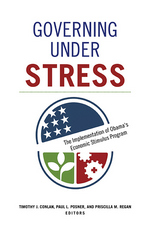 Governing under Stress: The Implementation of Obama's Economic Stimulus Program
Timothy J. Conlan, Paul L. Posner, and Priscilla M. Regan, Editors
Georgetown University Press, 2017 The underappreciated but surprisingly successful implementation of the American Recovery and Reinvestment Act (ARRA) helped rescue the economy during the Great Recession and represented one of the most important achievements of the Obama presidency. It tested all levels of government with urgent time frames and extensive accountability requirements. While ARRA passed most tests with comparatively little mismanagement or fraud, negative public and media perceptions of the initiative deprived the president of political credit. Drawing on more than two hundred interviews and nationwide field research, Governing under Stress examines a range of ARRA stimulus programs to analyze the fraught politics, complex implementation, and impact of the legislation. Essays from public administration scholars use ARRA to study how to implement large federal programs in our modern era of indirect, networked governance. Throughout, the contributors present potent insights into the most pressing challenges facing public policy and management, and they uncover important lessons about policy instruments and networks, the effects of transparency and accountability, and the successes and failures of different types of government intervention.
Governing Visions of the Real: The National Film Unit and Griersonian Documentary Film in Aotearoa/New Zealand
Lars Weckbecker
Intellect Books, 2015 Governing Visions of the Real traces the emergence, development, and techniques of Griersonian documentary—named for pioneering Scottish filmmaker John Grierson—in New Zealand throughout the first half of the twentieth century. Paying close attention to the productions of the National Film Unit in the 1940s and ’50s, Lars Weckbecker follows the shifting practices and governmentality of documentary’s “visions of the real” as New Zealand and its population—particularly workers and its indigenous population—came to be envisioned through NFU film for an ensemble of political, pedagogic, and propagandistic purposes.
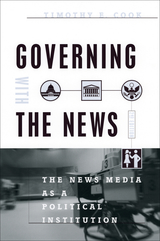 Governing With the News, Second Edition: The News Media as a Political Institution
Timothy E. Cook
University of Chicago Press, 2005 The ideal of a neutral, objective press has proven in recent years to be just that—an ideal. In Governing with the News, Timothy E. Cook goes far beyond the single claim that the press is not impartial to argue that the news media are in fact a political institution integral to the day-to-day operations of our government. This updated edition includes a new afterword by the author, which pays close attention to two key developments in the twenty-first century: the accelerating fragmentation of the mass media and the continuing decline of Americans' confidence in the press.
"Provocative and often wise. . . . Cook, who has a complex understanding of the relationship between governing and the news, provides a fascinating account of the origins of this complicity."—James Bennet, Washington Monthly
"[Governing with the News] addresses central issues of media impact and power in fresh, illuminating ways. . . . Cook mines a wealth of historical and organizational literature to assert that the news media are a distinct political institution in our democratic system."—Robert Schmuhl, Commonweal
 Governing with the News: The News Media as a Political Institution
Timothy E. Cook
University of Chicago Press, 1998 The ideal of a neutral, objective press has proven in recent years to be just that—an ideal. But while everyone talks about the political biases and influences of the news, no one has figured out whether and how the news media exert power. In Governing with the News, Timothy E. Cook goes far beyond the single claim that the press is not impartial to argue that the news media are in fact a political institution integral to the day-to-day operations of the three branches of our government.
The formation of the press as a political institution began in the early days of the republic when newspapers were sponsored by political parties; the relationship is now so central that press offices are found wherever one turns. Cook demonstrates not only how the media are structured as an institution that exercises collective power but also how the role of the media has become institutionalized within the political process, affecting policy and instigating, rather than merely reflecting, political actions. Cook's analysis is a powerful and fascinating guide to our age when newsmaking and governing are inseparable.
"This is a wonderful analysis of a highly important topic. Tim Cook is resoundingly right that we need to look at the media as political institutions and their operatives as political actors."—David R. Mayhew, author of Divided We Govern
"This meticulously researched and well reasoned work proposes to take seriously a thesis which flies in the face of both journalistic lore and political myth. Governing with the News is an innovative contribution to our understanding of media."—W. Lance Bennett, author of News: The Politics of Illusion
"This book should be read by journalists . . . by mass communication faculty teaching courses in media structure or effects and journalism faculty as a supplemental text to courses in media history and media management."—Benjamin J. Burns, Journalism & Mass Communication Quarterly
Government and Community: England, 1450–1509
J. R. Lander
Harvard University Press, 1980 The transformations and settled policies that made England a fortunate and peaceful country by 1509 are set forth in careful and patterned detail by J. R. Lander. The long disputes and wars that raged between Yorkists and Lancastrians —struggles that denied both noble houses the kingdom and laid open the path to Tudor hegemony—are described against a socio-economic and legal-administrative background of new dimensions. This much needed, comprehensive history of the era commonly known as “The War of the Roses” sustains a powerful new interpretation with great readability.
 Government and Politics in Hungary
András Körösényi
Central European University Press, 1999 Based on unprecedented access to information, Government and Politics in Hungary provides not only a historical overview but also an analysis of the main political actors, constitution, electoral system, parliament and political parties of Hungary.This timely and detailed analysis contains a wealth of important data which serves two major objectives. The first is to survey the most important institutions of the political and governmental systems and the cultural and behavioural characteristics of Hungarian politics. The second, is to provide the reader with a clear understanding of the two-way relationship between cultural-behavioural and constitutional-institutional levels of politics in Hungary. The book challenges many stereotypes of post-communist political literature and reveals why Hungarian politics does not fit into many of the generalizations and 'pigeon holes' of contemporary political science.
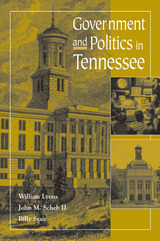 Government and Politics in Tennessee
William Lyons
University of Tennessee Press, 2001
Most Americans are more aware of the workings of the federal government than of their own state government. But these “laboratories of democracy” constitute perhaps the most creative and successful component of the American political experiment. Like each of the states, Tennessee state government has a distinct history and a political culture that reflects that history.
This book places Tennessee’s modern political institutions in the context of the history and personalities that formed them. They pay special attention to the period after 1978, when three governors left a lasting impression on the direction and culture of the state government. Separate chapters examine the legislative, executive, and judicial branches, explaining how and why Tennessee’s political culture differs from other states. The book also explores the ways in which education, health care, corrections, and economic development define much of the government agenda. Additional chapters on the media, political campaigns, and local government provide a backdrop that elucidates more fully how the state government functions.
The authors profile many of the personalities who have shaped the state’s political agenda. Among these are longtime Senate Democratic Speaker John Wilder; his close ally, Senate Republican Leader Ben Atchley; House Speaker Jimmy Naifeh, son of a Lebanese immigrant; and Bill Snodgrass, who served as State Comptroller for forty-seven years. The book explains how each of these individuals related to three Tennessee governors, Republicans Lamar Alexander and Don Sundquist and Democrat Ned McWherter, whose administrations presided over the state’s greatest period of growth and prosperity.
Illustrated with photographs and tables, and featuring anecdotal sidebars that illuminate key issues, this book will become the standard text on Tennessee state government and politics for years to come.
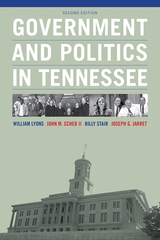 Government and Politics in Tennessee
William Lyons
University of Tennessee Press, 2017 Most Americans are more aware of the workings of the federal government than of their own state governments. But these “laboratories of democracy” constitute perhaps the most creative components of the American political experiment.
This book serves as a guide for students of government and provides a historical context for understanding the forces at work in the state’s political system. Among the states, Tennessee’s unique blend of legislative and executive powers is, in some respects, far more a product of personality than political ideology. This second edition describes these often colorful leaders and the issues they grappled with, including education, health care, corrections, economic development, and other key factors. A full analysis of government institutions embodied in the legislative, executive, and judicial branches is supplemented by added attention to county government and public administration.
Fully up to date, this edition also provides key chapters on the media, political campaigns, and the rising dominance of the Republican Party in recent decades. In addition, it focuses on how a new generation of politicians—among them, Governor Bill Haslam, House Speaker Beth Harwell, and Knoxville Mayor Madeline Rogero—have emerged to carry on the legacy of state leadership.
William Lyons is the chief policy officer for the City of Knoxville and a professor emeritus of Political Science at the University of Tennessee, Knoxville.
John M. Scheb II is a professor of political science at the University of Tennessee, Knoxville, and a faculty fellow of the Howard H. Baker, Jr., Center for Public Policy.
Billy Stair served for eighteen years in the legislative and executive branches of state government, including eight years as senior policy advisor to the governor.
Joseph G. Jarrett is a lecturer in the Department of Political Science at the University of Tennessee, Knoxville, and has been practicing public sector law for over two decades. He served as Knox County’s law director from 2008-2012.
 The Government and Politics of the European Union
Neill Nugent
Duke University Press The leading text in its field, The Government and Politics of the European Union offers a clear and comprehensive explanation of the historical development and ongoing evolution of the European Union (EU). As in previous editions, this sixth edition presents an account and analysis of the origins of the Union, the key treaties, the main institutions and political actors, and the EU’s policies and policy processes. The book, in short, explains where the EU has come from, what it now does, and how it does it. There have been many developments within the European Union since the last edition of this volume. In May 2004, the EU increased in size from fifteen to twenty-five member states, and, in so doing, became a pan-European, rather than Western European, organization. The following month, national leaders reached agreement on the contents of the long-discussed and exhaustively negotiated Constitutional Treaty only to see the fruits of their labors rejected in 2005 by voters in France and the Netherlands. These are only the most obvious manifestations of a constantly evolving integration process addressed throughout the book. Every chapter has been extensively revised since the last edition. The Government and Politics of the European Union also includes reflections on the conceptual and theoretical tools used to analyze the integration process and the EU, as well as on the factors likely to influence the Union’s future development.
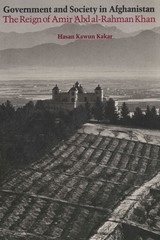 Government and Society in Afghanistan: The Reign of Amir ‘Abd al-Rahman Khan
By Hasan Kawun Kakar
University of Texas Press, 1979 This is an authoritative study of the administrative, social, and economic structure of Afghanistan during a decisive stage in its history. The period covered—the reign of the "Iron" Amir Rahman Khan—was in many ways the beginning of modern Afghanistan as a cohesive nation. Although Afghanistan had emerged as an entity in 1747, it was actually under the Amir that its borders were established, its internal unification completed, and the modern concept of nationhood implanted. Kakar approaches this complex process by taking into consideration both the internal and the external forces that influenced its development. Thus, modernization, centralization, and nationalization are seen as both defensive reactions to European imperialism and necessary preconditions to capital formation and, consequently, industrialization. The first part of the book covers the government of the Amir, from the personality of the ruler down to the operation of his new bureaucrats at the local level. Here Kakar presents a comprehensive treatment of the Afghan system of taxation and local government. The second part views these economic and social institutions from the perspective of the major segments of the populace—nomads, townsmen, tribes, women, slaves, landowners, mullahs, merchants, and so forth.
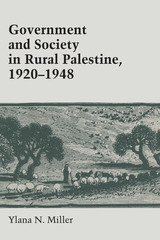 Government and Society in Rural Palestine, 1920-1948
By Ylana N. Miller
University of Texas Press, 1985 In 1947, Arabs made up two-thirds of the population of Palestine, and they owned most of its cultivable land. Why then, did they "lose" their homes and land to a relatively small Jewish community just emerging from the shocks of World War II? Did the Palestinians "lose" their homeland because they were backward, primitive, and reactionary? Or was Israel the product of persistent victimization of Palestinian Arabs by an imperialist power which supported Zionist colonization? Did the Palestinians sell each other out? Or were they helpless sufferers in the face of a sophisticated enemy with endless resources? Too often discussions of Palestine are couched in such rhetorical language, based on the assumption that either Jews or Arabs are morally to blame for historical realities. This study seeks to go beyond attributions of responsibility to investigate the concrete conditions which determined and limited Palestinian Arab actions between 1920 and 1948. It was during that period, while Great Britain governed the area under a League of Nations mandate, that Palestine both emerged and disappeared as a modern political entity. Many studies of Palestinian Arab nationalism have looked to Zionism as the primary agent of change in the region. Miller assumes the impact of Jewish settlement but goes beyond these earlier studies to explore the way in which policies of the Palestine government affected the daily lives of villagers—the majority of the population—and their understanding of the changes occurring around them. In this way, what emerges is a detailed analysis of the influence, for good or ill, that government policy had on village community life. Based largely on archival sources never before used, this work allows the reader to gain a deeper appreciation of the internal life of the rural community, which had previously received relatively little attention. Understanding the experiences of Palestinians before 1948 helps us to comprehend immeasurably better the continuity of movements for Palestinian statehood as well as the continuing tensions and problems on the West Bank today.
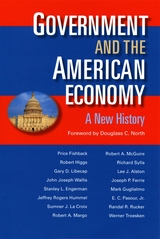 Government and the American Economy: A New History
Price V. Fishback et al.
University of Chicago Press, 2007 The American economy has provided a level of well-being that has consistently ranked at or near the top of the international ladder. A key source of this success has been widespread participation in political and economic processes. In The Government and the American Economy, leading economic historians chronicle the significance of America’s open-access society and the roles played by government in its unrivaled success story.
America’s democratic experiment, the authors show, allowed individuals and interest groups to shape the structure and policies of government, which, in turn, have fostered economic success and innovation by emphasizing private property rights, the rule of law, and protections of individual freedom. In response to new demands for infrastructure, America’s federal structure hastened development by promoting the primacy of states, cities, and national governments. More recently, the economic reach of American government expanded dramatically as the populace accepted stronger limits on its economic freedoms in exchange for the increased security provided by regulation, an expanded welfare state, and a stronger national defense.
A Government as Good as Its People
Jimmy Carter
University of Arkansas Press, 1996 A Government as Good as Its People, first published in 1977, presents sixty-two of the most notable public statements made by President Carter on his way to the White House. Formal speeches, news conferences, informal remarks made at gatherings, interviews, and excerpts from debates give a vivid glimpse into the issues of the time and the deeply held convictions of Jimmy Carter.
 Government by Contract: Outsourcing and American Democracy
Jody Freeman
Harvard University Press, 2009 The dramatic growth of government over the course of the twentieth century since the New Deal prompts concern among libertarians and conservatives and also among those who worry about government’s costs, efficiency, and quality of service. These concerns, combined with rising confidence in private markets, motivate the widespread shift of federal and state government work to private organizations. This shift typically alters only who performs the work, not who pays or is ultimately responsible for it. “Government by contract” now includes military intelligence, environmental monitoring, prison management, and interrogation of terrorism suspects.
Outsourcing government work raises questions of accountability. What role should costs, quality, and democratic oversight play in contracting out government work? What tools do citizens and consumers need to evaluate the effectiveness of government contracts? How can the work be structured for optimal performance as well as compliance with public values?
Government by Contract explains the phenomenon and scope of government outsourcing and sets an agenda for future research attentive to workforce capacities as well as legal, economic, and political concerns.
 Government by Mourning: Death and Political Integration in Japan, 1603-1912
Atsuko Hirai
Harvard University Press, 2013 From the early seventeenth to the mid-nineteenth century, the Tokugawa shogunate enacted and enforced myriad laws and ordinances to control nearly every aspect of Japanese life, including observance of a person’s death. In particular, the shoguns Tsunayoshi and Yoshimune issued strict decrees on mourning and abstention that dictated compliance throughout the land and survived the political upheaval of the Meiji Restoration to persist well into the twentieth century.
Atsuko Hirai reveals the pivotal relationship between these shogunal edicts and the legitimacy of Tokugawa rule. By highlighting the role of narimono chojirei (injunctions against playing musical instruments) within their broader context, she shows how this class of legislation played an important integrative part in Japanese society not only through its comprehensive implementation, especially for national mourning of major political figures, but also by its codification of the religious beliefs and customs that the Japanese people had cherished for innumerable generations.
Government Control of the Press in Modern China, 1900-1949
Lee-hsia Hsu Ting
Harvard University Press, 1974 This study traces the development of publication laws and regulations, describes the many censorship cases, and discusses the various aspects of government control of the press in China. The period covered extends from 1900, when China was clamoring for a constitutional government, to 1949, when the People’s Republic of China was established. Special emphasis is placed on the suppression of so-called dangerous publications during the years when China was under the rule of the Kuomintang.
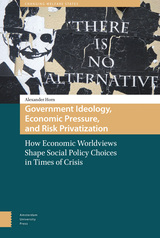 Government Ideology, Economic Pressure, and Risk Privatization: How Economic Worldviews Shape Social Policy Choices in Times of Crisis
Alexander Horn
Amsterdam University Press, 2017 From the 1980s on, a privatization of labor market-related risks has occurred in the OECD. Governments have cut the generosity of social programs and tightened eligibility rules, particularly for the unemployed. Government Ideology, Economic Pressure, and Risk Privatization: How Economic Worldviews Shape Social Policy Choices in Times of Crisis analyses these curtailments for eighteen countries over the course of four decades and provides an encompassing comparative assessment of the interactive impact of government ideology and economic pressure. It demonstrates that the economic worldviews of governments are the most important factor in explaining why cuts are implemented or not. While ideas of non-intervention in the market underlie cuts in generosity, ideas of equality and fairness are at the heart of stricter eligibility criteria. This book also shows that the impact of the economic pressures often held responsible for the marginalization of politics and government ideology is in fact conditional on the specific ideological configuration.
 A Government Ill Executed: The Decline of the Federal Service and How to Reverse It
Paul C. Light
Harvard University Press, 2008 The federal government is having increasing difficulty faithfully executing the laws, which is what Alexander Hamilton called “the true test” of a good government. This book diagnoses the symptoms, explains their general causes, and proposes ways to improve the effectiveness of the federal government. Employing Hamilton’s seven measures of an energetic federal service, Paul Light shows how the government is wanting in each measure.
After assessing the federal report card, Light offers a comprehensive agenda for reform, including new laws limiting the number of political appointees, reducing the layers of government management, reducing the size of government as its Baby Boom employees retire, revitalizing the federal career, and reducing the heavy outsourcing of federal work. Although there are many ways to fix each of the seven problems with government, only a comprehensive agenda will bring the kind of reform needed to reverse the overall erosion of the capacity to faithfully execute all the laws.
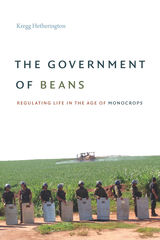 The Government of Beans: Regulating Life in the Age of Monocrops
Kregg Hetherington
Duke University Press, 2020 The Government of Beans is about the rough edges of environmental regulation, where tenuous state power and blunt governmental instruments encounter ecological destruction and social injustice. At the turn of the twenty-first century, Paraguay was undergoing dramatic economic, political, and environmental change due to a boom in the global demand for soybeans. Although the country's massive new soy monocrop brought wealth, it also brought deforestation, biodiversity loss, rising inequality, and violence. Kregg Hetherington traces well-meaning attempts by bureaucrats and activists to regulate the destructive force of monocrops that resulted in the discovery that the tools of modern government are at best inadequate to deal with the complex harms of modern agriculture and at worst exacerbate them. The book simultaneously tells a local story of people, plants, and government; a regional story of the rise and fall of Latin America's new left; and a story of the Anthropocene writ large, about the long-term, paradoxical consequences of destroying ecosystems in the name of human welfare.
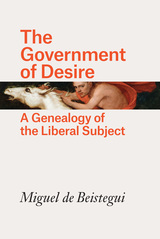 The Government of Desire: A Genealogy of the Liberal Subject
Miguel de Beistegui
University of Chicago Press, 2018 Liberalism, Miguel de Beistegui argues in The Government of Desire, is best described as a technique of government directed towards the self, with desire as its central mechanism. Whether as economic interest, sexual drive, or the basic longing for recognition, desire is accepted as a core component of our modern self-identities, and something we ought to cultivate. But this has not been true in all times and all places. For centuries, as far back as late antiquity and early Christianity, philosophers believed that desire was an impulse that needed to be suppressed in order for the good life, whether personal or collective, ethical or political, to flourish. Though we now take it for granted, desire as a constitutive dimension of human nature and a positive force required a radical transformation, which coincided with the emergence of liberalism.
By critically exploring Foucault’s claim that Western civilization is a civilization of desire, de Beistegui crafts a provocative and original genealogy of this shift in thinking. He shows how the relationship between identity, desire, and government has been harnessed and transformed in the modern world, shaping our relations with others and ourselves, and establishing desire as an essential driving force for the constitution of a new and better social order. But is it? The Government of Desire argues that this is precisely what a contemporary politics of resistance must seek to overcome. By questioning the supposed universality of a politics based on recognition and the economic satisfaction of desire, de Beistegui raises the crucial question of how we can manage to be less governed today, and explores contemporary forms of counter-conduct.
Drawing on a host of thinkers from philosophy, political theory, and psychoanalysis, and concluding with a call for a sovereign and anarchic form of desire, The Government of Desire is a groundbreaking account of our freedom and unfreedom, of what makes us both governed and ungovernable.
A Government of Laws: Political Theory, Religion, and the American Founding
Ellis Sandoz
University of Missouri Press, 2001 In A Government of Laws, which includes a new preface, Ellis Sandoz re-evaluates the traditional understanding of the philosophic and intellectual background of the American founding. Through an exhaustive assessment of Renaissance, medieval, and ancient political philosophy, he shows that the founding fathers were consciously and explicitly seeking to create a political order that would meet the demands of human nature and society. This rigorous and searching analysis of the sources of political and constitutional theory generates an original and provocative approach to American thought and experience.
Government of Michigan
Robert W. Carr, Ph.D.
University of Michigan Press, 1990 Government of Michigan, by Robert W. Carr, explains concisely and clearly the workings of our state's government. Written for the high school student, the easily understood text explains how the state government operates and how it differs from the federal government. Government of Michigan can also be useful to the adult reader interested in knowing more about our state's agencies and their services. The book includes an account of the typical day in the life of a state senator, illustrative material to help with explanations, the freedoms and protections under state law, and discussions of the laws and policies that have changed since the adoption of the 1964 Michigan Constitution.
 The Government of Mistrust: Illegibility and Bureaucratic Power in Socialist Vietnam
Ken MacLean
University of Wisconsin Press, 2013 Focusing on the creation and misuse of government documents in Vietnam since the 1920s, The Government of Mistrust reveals how profoundly the dynamics of bureaucracy have affected Vietnamese efforts to build a socialist society. In examining the flurries of paperwork and directives that moved back and forth between high- and low-level officials, Ken MacLean underscores a paradox: in trying to gather accurate information about the realities of life in rural areas, and thus better govern from Hanoi, the Vietnamese central government employed strategies that actually made the state increasingly illegible to itself. MacLean exposes a falsified world existing largely on paper. As high-level officials attempted to execute centralized planning via decrees, procedures, questionnaires, and audits, low-level officials and peasants used their own strategies to solve local problems. To obtain hoped-for aid from the central government, locals overstated their needs and underreported the resources they actually possessed. Higher-ups attempted to re-establish centralized control and legibility by creating yet more bureaucratic procedures. Amidst the resulting mistrust and ambiguity, many low-level officials were able to engage in strategic action and tactical maneuvering that have shaped socialism in Vietnam in surprising ways.
The Government of Nature
Afaa Michael Weaver
University of Pittsburgh Press, 2013 This is the second volume of a trilogy (the first was The Plum Flower Dance) in which Weaver analyzes his life, striving to become the ideal poet. In The Government of Nature, Afaa Michael Weaver explores the trauma of his childhood—including sexual abuse—using a "cartography and thematic structure drawn from Chinese spiritualism." Weaver is a practitioner of Daoism, and this collection deals directly with the abuse in the context of Daoist renderings of nature as metaphor for the human body.
Government of the Shadows: Parapolitics and Criminal Sovereignty
Eric Wilson
Pluto Press, 2009 Government of the Shadows analyses the concept of clandestine government. It explores how covert political activity and transnational organised crime are linked -- and how they ultimately work to the advantage of state and corporate power.
The book shows that legitimate government is now routinely accompanied by extra-governmental covert operations. Using a variety of case studies, from the mafia in Italy to programmes for food and reconstruction in Iraq, the contributors illustrate that para-political structures are not 'deviant', but central to the operation of global governments.
The creation of this truly parallel world-economy, the source of huge political and economic potential, entices states to undertake new forms of regulation, either through their own intelligence agencies, or through the more shadowy world of criminal cartels.
 The Government of Victorian London, 1855–1889: The Metropolitan Board of Works, the Vestries, and the City Corporation
David Owen
Harvard University Press, 1982 Of all the major cities of Britain, London, the world metropolis, was the last to acquire a modern municipal government. Its antiquated administrative system led to repeated crises as the population doubled within a few decades and reached more than two million in the 1840s. Essential services such as sanitation, water supply, street paving and lighting, relief of the poor, and maintenance of the peace were managed by the vestries of ninety-odd parishes or precincts plus divers ad hoc authorities or commissions. In 1855, with the establishment of the Metropolitan Board of Works, the groundwork began to be laid for a rational municipal government.
David Owen tells in absorbing detail the story of the operations of the Metropolitan Board of Works, its political and other problems, and its limited but significant accomplishments—including the laying down of 83 miles of sewers and the building of the Thames Embankments—before it was replaced in 1889 by the London County Council. His account, based on extensive archival research, is balanced, judicious, lucid, often witty, and always urbane.
 Government Policy and the Distribution of Income in Peru, 1963–1973
Richard C. Webb
Harvard University Press, 1977 The redistribution of income has been a key element in Peruvian governmental policy. Both the Belaunde and Velasco regimes professed a deep concern with economic injustice, and they have been regarded as models of peaceful progress toward social justice. Despite its good intentions, Richard Webb shows, the government has had little impact on the rigid imbalance of wealth in Peru. The rich have continued to get richer faster than the poor have got less poor. Inequality has grown, and those most in need of improvement have benefited least. The tax structure has actually become more regressive. with taxes raised most on middle-income groups and least on the very rich.
Overall, the Peruvian government's economic policy has been mildly progressive, but not progressive enough to have an appreciable effect on the widespread poverty. What is needed, Webb argues, are movements of capital from the modern sector of the economy to the traditional sector to create new jobs for the poor. "Finally, substantial redistribution seems to require changes in attitude. The elimination of poverty must precede a concern for equity per se, and the needs of the very poor must acquire the status of rights rather than claims to compassion."
 The Government Taketh Away: The Politics of Pain in the United States and Canada
Leslie A. Pal and R. Kent Weaver, Editors
Georgetown University Press, 2003 Democratic government is about making choices. Sometimes those choices involve the distribution of benefits. At other times they involve the imposition of some type of loss—a program cut, increased taxes, or new regulatory standards. Citizens will resist such impositions if they can, or will try to punish governments at election time. The dynamics of loss imposition are therefore a universal—if unpleasant—element of democratic governance. The Government Taketh Away examines the repercussions of unpopular government decisions in Canada and the United States, the two great democratic nations of North America. Pal, Weaver, and their contributors compare the capacities of the U.S. presidential system and the Canadian Westminster system to impose different types of losses: symbolic losses (gun control and abortion), geographically concentrated losses (military base closings and nuclear waste disposal), geographically dispersed losses (cuts to pensions and to health care), and losses imposed on business (telecommunications deregulation and tobacco control). Theory holds that Westminster-style systems should, all things being equal, have a comparative advantage in loss imposition because they concentrate power and authority, though this can make it easier to pin blame on politicians too. The empirical findings of the cases in this book paint a more complex picture. Westminster systems do appear to have some robust abilities to impose losses, and US institutions provide more opportunities for loss-avoiders to resist government policy in some sectors. But in most sectors, outcomes in the two countries are strikingly similar. The Government Taketh Away is essential for the scholar and students of public policy or comparative policy. It is also an important book for the average citizen who wants to know more about the complexities of living in a democratic society where the government can give-but how it can also, sometimes painfully, "taketh away."
Government Tort Caps, Immunity, and Liability: State by State Compendium
Jonathan M. Bernstein
DRI, 2014 The purpose of this compendium, sponsored by the DRI Governmental Liability Committee, is to provide an assessment of tort cap liability, immunities, and liability standards that apply to state and local governments. A table that breaks down these categories by state is included. The compendium is a desk reference for assessing liability and exposure and refers to the statutes that apply for these areas for each state and the District of Columbia.
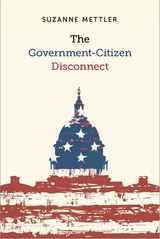 The Government-Citizen Disconnect
Suzanne Mettler
Russell Sage Foundation, 2018 Americans’ relationship to the federal government is paradoxical. Polls show that public opinion regarding the government has plummeted to all-time lows, with only one in five saying they trust the government or believe that it operates in their interest. Yet, at the same time, more Americans than ever benefit from some form of government social provision. Political scientist Suzanne Mettler calls this growing gulf between people’s perceptions of government and the actual role it plays in their lives the "government-citizen disconnect." In The Government-Citizen Disconnect, she explores the rise of this phenomenon and its implications for policymaking and politics.
Drawing from original survey data which probed Americans’ experiences of 21 federal social policies -- such as food stamps, Social Security, Medicaid, and the home mortgage interest deduction -- Mettler shows that 96 percent of adults have received benefits from at least one of them, and that the average person has utilized five. Overall usage rates transcend social, economic, and political divisions, and most Americans report positive experiences of their policy experiences. However, the fact that they have benefited from these policies has little positive effect on people’s attitudes toward government. Mettler finds that shared identities and group affiliations, as well as ideological forces, are more powerful and consistent influences. In particular, those who oppose welfare tend to extrapolate their unfavorable views of it to government in general. Deep antipathy toward the government has emerged as the result of a conservative movement that has waged a war on social welfare policies for over forty years, even as economic inequality and benefit use have increased.
Mettler finds that voting patterns exacerbate the government-citizen disconnect, as those holding positive views of federal programs and supporting expanded benefits have lower rates of political participation than those holding more hostile views of the government. As a result, the loudest political voice belongs to those who have benefited from policies but who give government little credit for their economic well-being, seeing their success more as a matter of their own deservingness. This contributes to the election of politicians who advocate cutting federal social programs. According to Mettler, the government-citizen disconnect frays the bonds of representative government and democracy.
The Government-Citizen Disconnect illuminates a paradox that increasingly shapes American politics. Mettler's examination of hostility toward government at a time when most Americans will at some point rely on the social benefits it provides helps us better understand the roots of today's fractious political climate.
 A Governor and His Image in Baroque Brazil: The Funereal Eulogy of Afonso Furtado de Castro do Rio de Mendonca
Juan Sierra
University of Minnesota Press, 1979 A Governor and His Image in Baroque Brazil was first published in 1979. Minnesota Archive Editions uses digital technology to make long-unavailable books once again accessible, and are published unaltered from the original University of Minnesota Press editions.This seventeenth-century manuscript describes the life and death of Afonso Furtado, governor of Brazil from 1671 to 1675. The obscure author, Juan Lopes Sierra, was an eyewitness to many of the governor’s activities and was clearly a great admirer of Furtado, whom he calls in his text “Our Hero.” The manuscript is a useful cultural and historical document focusing on the governor’s administration and, especially, on his direction of military campaigns into the heart of Brazil to subdue hostile Indians and search for mineral wealth. The author’s descriptions of religious life in the capital city of Salvador and of the elaborate funeral arrangements for the governor reveal the attitudes and aspirations of the Brazilian colonial elite. Most important, perhaps, the document covers on of the least studied periods in Brazilian history, the years between the great century of sugar and the half-century of gold. Lopes Sierra wrote in Spanish, though his subject was Portuguese Brazil, and his manuscript is peppered with Portuguese/Spanish coinages and classical allusions. Ruth Jones has mastered the difficult task of translation and Stuart Schwartz provides a historical context and notes to the translation. The book is a publication from the James Ford Bell Library of the University of Minnesota.
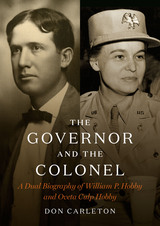 The Governor and the Colonel: A Dual Biography of William P. Hobby and Oveta Culp Hobby
By Don Carleton
University of Texas Press, 2020 William P. “Will” Hobby Sr. and Oveta Culp Hobby were one of the most influential couples in Texas history. Both were major public figures, with Will serving as governor of Texas and Oveta as the first commander of the Women’s Army Corps and later as the second woman to serve in a presidential cabinet. Together, they built a pioneering media empire centered on the Houston Post and their broadcast properties, and they played a significant role in the transformation of Houston into the fourth largest city in the United States. Don Carleton’s dual biography details their personal and professional relationship—defined by a shared dedication to public service—and the important roles they each played in local, state, and national events throughout the twentieth century. This deeply researched book not only details this historically significant partnership, but also explores the close relationships between the Hobbys and key figures in twentieth-century history, from Texas legends such as LBJ, Sam Rayburn, and Jesse Jones, to national icons, including the Roosevelts, President Eisenhower, and the Rockefellers. Carleton's chronicle reveals the undeniable impact of the Hobbys on journalistic and political history in the United States.
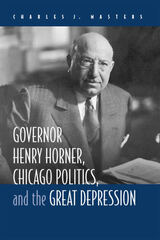 Governor Henry Horner, Chicago Politics, and the Great Depression
Charles J. Masters
Southern Illinois University Press, 2007 Many have never heard of Governor Henry Horner of Illinois, yet his story is remarkable. Governor Henry Horner, Chicago Politics, and the Great Depression focuses on Horner’s career in law and politics from 1915 to 1940, while examining the economic and political dynamics of Illinois during the darkest period in American history. This principled governor managed to maintain his political integrity in a climate where honesty was a liability, says author Charles J. Masters, but the few historians who include Horner in their narratives offer contradictory and dismissive characterizations of him. Masters corrects the public record and reintroduces Horner to political lore as a man who brazenly fought both the Chicago Democratic machine that worked to plot his downfall and Roosevelt’s White House to steadfastly do right by the people of Illinois.
In this first book-length treatment of Horner in over thirty-five years, Masters traces the politician’s career, the history and politics of Chicago, and the effects of the Great Depression in Illinois. The volume details Horner’s life as a lawyer, probate judge, and two-term Democratic governor of Illinois. Horner’s relationships with President Franklin D. Roosevelt and such political players as Michael “Hinky Dink” Kenna, “Bathhouse” John Coughlin, and Chicago mayors Carter Harrison, Anton Cermak, and Ed Kelly are set against a backdrop of assassination, political sniping, court-packing schemes, Prohibition, and the New Deal.
Governor Henry Horner, Chicago Politics, and the Great Depression examines the governor’s management of the political and economic challenges of the state when millions of Americans were jobless, homeless, and hungry. The severely divergent economic and political positions of the state’s northern industrial and southern agrarian interests made the period even darker. Masters shows how Horner stemmed foreclosures, dealt with bank closings, placated unpaid teachers, soothed massive labor unrest, fed the hungry, and confronted the ever-present threat of revolution. While Hitler’s Germany was spreading Nazism throughout Europe, some Americans were questioning the fundamental order of their own political system, suggesting that socialism, communism, or Nazism could offer a better way. Masters addresses how Horner, Illinois’ first Jewish governor, dealt with these challenges to the U.S. political system.
A story long absent from the historical record, GovernorHenry Horner, Chicago Politics, and the Great Depression offers a portrait of the man, his style of governance, his successes, and his failures. The volume, with eight illustrations, effectively reevaluates Horner’s historical reputation and role in Illinois politics in the midst of the worst economic depression in our nation’s history.
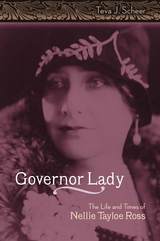 Governor Lady: The Life and Times of Nellie Tayloe Ross
Teva J. Scheer
University of Missouri Press, 2005 Governor Lady is the fascinating story of one of the most famous political women of her generation. Nellie Tayloe Ross was elected governor of Wyoming in 1924—just four years after American women won the vote—and she went on to be nominated for U.S. vice president in 1928, named vice chairman of the Democratic National Committee the same year, and appointed the first female director of the Mint in 1932. Ross launched her career when her husband, William Bradford Ross, the preceding governor, died, leaving her widowed with four sons and no means of supporting them. She was an ironic choice to be such a pioneer in women’s rights, since she claimed her entire life that she had no interest in feminism. Nevertheless, she believed in equal opportunity and advancement in merit irrespective of gender—core feminist values. The dichotomy between Ross’s career and life choices, and her stated priorities of wife and mother, is a critical contradiction, making her an intriguing woman. Exhaustively researched and powerfully written, Governor Lady chronicles the challenges and barriers that a woman with no job experience, higher education, or training faced on the way to becoming a confident and effective public administrator. In addition to the discrimination and resentment she faced from some of her male associates, she also aroused the enmity of Eleanor Roosevelt, whom she displaced at the DNC. Born exactly one hundred years after the signing of the Declaration of Independence, Ross lived to celebrate the nation’s bicentennial, so her long and remarkable life precisely spanned the second U.S. century. She was reared in the Victorian era, when upper- and middle-class women were expected to be domestic, decorative, and submissive, but she died as the women’s movement was creating a multitude of opportunities for young women of the 1970s. Nellie’s story will be of great interest to anyone curious about women’s history and biography. The contemporary American career woman will especially identify with Ross’s struggle to balance her career, family, and active personal life.
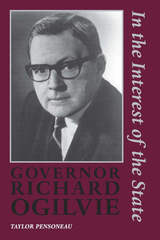 Governor Richard Ogilvie: In the Interest of the State
Taylor Pensoneau
Southern Illinois University Press, 2009 Although serious scandal erupted in Illinois Governor Richard Ogilvie’s administration— eight hundred thousand dollars mysteriously appearing in Secretary of State Paul Powell’s shoe boxes and other hiding places, the downfall of two Supreme Court justices for questionable stock dealings, corruption surrounding the Illinois State Fair— Ogilvie’s accomplishments, as Taylor Pensoneau demonstrates, rank him among the best governors in Illinois history.
Perhaps the most important of Ogilvie’s accomplishments during his single term in office (1969–1973) was the passage of the state’s first income tax in 1969. Supporting the income tax took political courage on the part of the new governor, but in doing so he saved the financially crippled state from economic disaster. He also looked far into the future; at a time when few politicians expressed concern with the environment, Ogilvie created an exemplary and hard-hitting antipollution program. He was in office during the Illinois Constitutional Convention in 1970 and was instrumental in the widespread restructuring of Illinois government.
Viewing Ogilvie as a pivotal figure in Illinois politics during a time of great social and political turmoil, Pensoneau provides a complete political biography. He sheds light on Ogilvie’s military heroics, his political career, and the Illinois elections of 1968, 1970, and 1972.
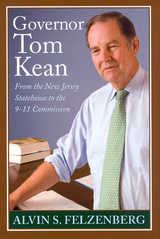 Governor Tom Kean: From the New Jersey Statehouse to the 911 Commission
Felzenberg, Alvin S
Rutgers University Press, 2006 Long before Bill Clinton spoke of "triangulation," a term that referred to a centrist governing style, prior to Tony Blair repositioning the British Labor Party midway between Thatcher conservatism and militant trade unionism, and far ahead of George W. Bush referring to his agenda as "compassionate conservatism," there was Tom Kean. From the moment of his election to the New Jersey state assembly in 1967, through his guidance of the 9/11 Commission nearly three decades later, Kean consistently displayed a knack for bipartisan leadership.
In this first political biography of one of the nation's most popular and successful governors, Alvin S. Felzenberg tells the story of a remarkable career that culminated in an unexpected and crucial contribution to the country-chairmanship of the 9/11 Commission. Felzenberg describes how, early in his political career, Kean worked to transform New Jersey's legislature in the aftermath of court rulings that mandated redistricting in accordance with the "one man, one vote" principle. He discusses Kean's efforts to relieve the urban crisis that followed in the wake of the 1967 Newark riots. He relates how Kean was able to use the New Jersey governorship-purportedly the strongest in the country-to transform a so-called "rust belt" state into a leader in education, environmental responsibility, and economic growth.
Kean's successes in these and other areas caused leaders outside New Jersey to follow in his path. Together with his fellow governors, Kean forged a national consensus on domestic policy between Democratic congresses and Republican presidents, in the process winning for himself a leadership role in his own party. Kean's story serves as an uncommon case of how a Republican loyal to the historic roots and principles of his party can not only win election in a "blue state" but effectively govern it.
Starting from the example the governor set on the state level, Felzenberg's account traces Kean's career to positions of trusted authority on the national stage. After several years of advising presidents, Kean was appointed chairman of the 9/11 Commission. In this role, he made the bipartisan, Congressionally mandated commission one of the most successful in American history.
Drawing on interviews with Kean as well as with state and national leaders, including former presidents Gerald Ford and Bill Clinton and former New York City mayor Ed Koch, Felzenberg not only provides a marvelous biography, but also offers a unique look at American politics during the last four decades of the twentieth century.
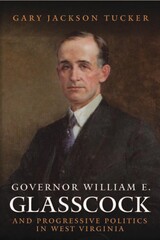 GOVERNOR WILLIAM GLASSCOCK AND PROGRESSIVE POLITICS IN WEST VIRGINIA
Gary Jackson Tucker
West Virginia University Press, 2008 From 1909 to 1913, Governor William Glasscock served the state of West Virginia as an ardent progressive and reformer. In his inaugural address he proclaimed government "the machinery invoked and devised by man for his benefit and protection” and good government the guarantor of the happiness, prosperity, success, and welfare of the people. Governor William Glasscock and Progressive Politics in West Virginia recounts the life and work of West Virginia’s thirteenth governor. Born during the Civil War, Glasscock witnessed a country torn by sectional, fratricidal war become a powerful industrial nation by the turn of the twentieth century. Author Gary Jackson Tucker demonstrates how Glasscock, along with others during the Progressive Era, railed against large and powerful political and economic machines to enact legislation protecting free and fair elections, just taxation, regulation of public utilities, and workmen’s compensation laws. Never hesitating to use the power of the state to stand firm against racism and mob rule, and placing his own personal safety in jeopardy, Glasscock won the praise and admiration of average people. Glasscock’s four years in office took his own health and financial security from him, but left behind a better government—a good government—for the people of West Virginia.
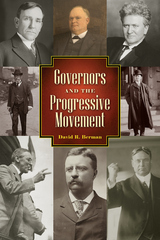 Governors and the Progressive Movement
David R. Berman
University Press of Colorado, 2019 Governors and the Progressive Movement is the first comprehensive overview of the Progressive movement’s unfolding at the state level, covering every state in existence at the time through the words and actions of state governors. It explores the personalities, ideas, and activities of this period’s governors, including lesser-known but important ones who deserve far more attention than they have previously been given.
During this time of greedy corporations, political bosses, corrupt legislators, and conflict along racial, class, labor/management, urban/rural, and state/local lines, debates raged over the role of government and issues involving corporate power, racism, voting rights, and gender equality—issues that still characterize American politics. Author David R. Berman describes the different roles each governor played in the unfolding of reform around these concerns in their states. He details their diverse leadership qualities, governing styles, and accomplishments, as well as the sharp regional differences in their outlooks and performance, and finds that while they were often disposed toward reform, governors held differing views on issues—and how to resolve them.
Governors and the Progressive Movement examines a time of major changes in US history using relatively rare and unexplored collections of letters, newspaper articles, and government records written by and for minority group members, labor activists, and those on both the far right and far left. By analyzing the governors of the era, Berman presents an interesting perspective on the birth and implementation of controversial reforms that have acted as cornerstones for many current political issues. This book will be of interest to students and scholars of US history, political science, public policy, and administration.
 The Governor's Hounds: The Texas State Police, 1870–1873
By Barry A. Crouch and Donaly E. Brice
University of Texas Press, 2011 In the tumultuous years following the Civil War, violence and lawlessness plagued the state of Texas, often overwhelming the ability of local law enforcement to maintain order. In response, Reconstruction-era governor Edmund J. Davis created a statewide police force that could be mobilized whenever and wherever local authorities were unable or unwilling to control lawlessness. During its three years (1870–1873) of existence, however, the Texas State Police was reviled as an arm of the Radical Republican party and widely condemned for being oppressive, arrogant, staffed with criminals and African Americans, and expensive to maintain, as well as for enforcing the new and unpopular laws that protected the rights of freed slaves. Drawing extensively on the wealth of previously untouched records in the Texas State Archives, as well as other contemporary sources, Barry A. Crouch and Donaly E. Brice here offer the first major objective assessment of the Texas State Police and its role in maintaining law and order in Reconstruction Texas. Examining the activities of the force throughout its tenure and across the state, the authors find that the Texas State Police actually did much to solve the problem of violence in a largely lawless state. While acknowledging that much of the criticism the agency received was merited, the authors make a convincing case that the state police performed many of the same duties that the Texas Rangers later assumed and fulfilled the same need for a mobile, statewide law enforcement agency.
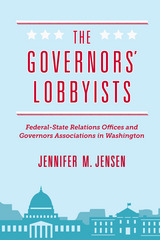 The Governors' Lobbyists: Federal-State Relations Offices and Governors Associations in Washington
Jennifer M. Jensen
University of Michigan Press, 2016 Today, approximately half of all American states have lobbying offices in Washington, DC, where governors are also represented by their own national, partisan, and regional associations. Jennifer M. Jensen’s The Governors’ Lobbyists draws on quantitative data, archival research, and more than 100 in-depth interviews to detail the political development of this constellation of advocacy organizations since the early 20th century and investigate the current role of the governors’ lobbyists in the U.S. federal system. First, Jensen analyzes the critical ways in which state offices and governors’ associations promote their interests and, thus, complement other political safeguards of federalism. Next, she considers why, given their apparent power, governors engage lobbyists to serve as advocates and why governors have created both individual state offices and several associations for this advocacy work. Finally, using interest group theory to analyze both material and political costs and benefits, Jensen addresses the question of interest group variation: why, given the fairly clear material benefit a state draws from having a lobbying office in Washington, doesn’t every state have one? This assessment of lobbying efforts by state governments and governors reveals much about role and relative power of states within the U.S. federal system.
Governor's Mansion, The
Robert Laxalt
University of Nevada Press, 1997 In the dramatic third volume of Robert Laxalt’s trilogy, Leon—the eldest son of immigrant parents—becomes the governor of Nevada during the 1960s. An able lawyer in his own right, he is a neophyte when it comes to dealing with the political ploys of the entrenched officeholders who dominate in Nevada. Leon faces the crisis of his budding political career when he is caught between J. Edgar Hoover’s FBI, bent on cleaning out the Mafia, and his own need to protect the autonomy of his native state. An unexpected ally appears when the only man rich enough to solve the governor’s dilemma comes to Nevada—reclusive billionaire Howard Hughes.
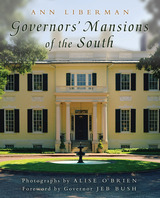 Governors' Mansions of the South
Ann Liberman & Photos by Alise O'Brien
University of Missouri Press, 2008
From the Greek Revival architecture found in Mississippi to the Queen Anne style of North Carolina, governors’ mansions in the American South convey a passion for antiquity, as well as a regional elegance. Ann Liberman, author of Governors’ Mansions of the Midwest, spent much of her life in Texas and admires the remarkable architecture of the antebellum South—a respect that she now brings to her newest book.
Governors’ Mansions of the South is devoted to the eleven states of the old Confederacy, plus Kentucky and West Virginia, and offers a brick-and-mortar reflection of the region’s rich history. It includes the country’s oldest governor’s mansion in continuous use, in Virginia, plus two built as recently as the 1960s, in Louisiana and Georgia. These mansions reflect an architectural cohesiveness found throughout the South, as Georgian, Federal, and Greek Revival styles imbue antebellum houses with a classical aura, while others built in the first quarter of the twentieth century reflect the monumental eclectic styles of the Beaux Arts era.
Liberman provides readers with a room-by-room guided tour of each of the buildings as she comments on their architecture, symbolism, and lore. She places the mansions in historical context, describing how their locations were chosen, how they were designed and decorated, and how they have been preserved, lost, or transformed over the years. While focusing primarily on the buildings themselves, she also highlights those governors and their wives who played significant roles in the mansions’ maintenance or renovation. Alise O’Brien’s accompanying color photographs capture the lavish interiors and furnishings as well as the dignified exteriors and landscapes.
“Living in the Governor’s Mansion is a remarkable honor,” writes former governor of Florida Jeb Bush in his foreword, “but it is also a constant, humbling reminder that the people who occupy the mansions are, indeed, the public’s servants.” For site visitors or architecture buffs, Governors’ Mansions of the South is an enlightening introduction to these historic executive homes, reminding us that, however opulent, they provide a personal connection between the public and its government—and connect past generations to the present.
The Governors of Arkansas: Essays in Political Biography
Jr. Gatewood
University of Arkansas Press, 1995 Updated to include a biography of the three latest governors, one of whom is United States president Bill Clinton, this new edition includes fascinating individual profiles of the state's forty-three consecutive leaders since 1836. From Conway to Tucker, the biographical sketches are filled with valuable personal and political data detailing each governor's origin, family, education, occupation, and accomplishments and failures while in and out of office. By examining the issues confronting Arkansas's governors, the contributors have provided a provocative portrait of the state's political leadership and have explored a whole range of social and economic questions.
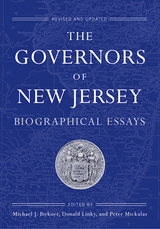 The Governors of New Jersey: Biographical Essays
Birkner, Michael J
Rutgers University Press, 2014 Rogues, aristocrats, and a future U.S. president. These and other governors are portrayed in this revised and updated edition of the classic reference work on the chief executives of New Jersey. Editors Michael J. Birkner, Donald Linky, and Peter Mickulas present new essays on the governors of the last three decades—Brendan T. Byrne, Thomas Kean, James Florio, Christine Todd Whitman, Donald DiFrancesco, James McGreevey, Richard Codey, and Jon Corzine. The essays included in the original edition are amended, edited, and corrected as necessary in light of new and relevant scholarship. The authors of each governor’s life story represent a roster of such notable scholars as Larry Gerlach, Stanley Katz, Arthur Link, and Clement Price, as well as many other experts on New Jersey history and politics. As a result, this revised edition is a thorough and current reference work on the New Jersey governorship—one of the strongest in the nation.
Also of Interest:
New Jersey Politics and Government
The Suburbs Come of Age
Fourth Edition
Barbara G. Salmore with Stephen A. Salmore
978-0-8135-6139-4 paper $34.95
A volume in the Rivergate Regionals Collection
Me, Governor?
My Life in the Rough-and-Tumble World of New Jersey Politics
Richard J. Codey
978-0-8135-5045-9 cloth $24.95
The Life and Times of Richard J. Hughes
The Politics of Civility
John B. Wefing
978-0-8135-4641-4 cloth $32.50
Governor Tom Kean
From the New Jersey Statehouse to the 911 Commission
Alvin S. Felzenberg
978-0-8135-3799-3 cloth $29.95
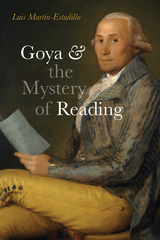 Goya and the Mystery of Reading
Luis Martín-Estudillo
Vanderbilt University Press, 2023 Spanish artist Francisco de Goya (1746–1828) lived through an era of profound societal change. One of the transformations that he engaged passionately was the unprecedented growth both in the number of readers and in the quantity and diversity of texts available. He documented and questioned this reading revolution in some of his most captivating paintings, prints, and drawings.
Goya and the Mystery of Reading explores the critical impact this transition had on the work of an artist who aimed not to copy the world around him, but to see it anew—to read it. Goya's creations offer a sustained reflection on the implications of reading, which he depicted as an ambiguous, often mysterious activity: one which could lead to knowledge or ecstasy, to self-fulfillment or self-destruction, to piety or perdition. At the same time, he used reading to elicit new possibilities of interpretation. This book reveals for the first time the historical, intellectual, and artistic underpinnings of reading as one of the pillars of his art.
This book is the recipient of the 2023 Norman L. and Roselea J. Goldberg Prize from Vanderbilt University Press for the best book in the area of art or medicine.
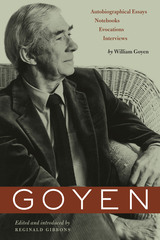 Goyen: Autobiographical Essays, Notebooks, Evocations, Interviews
By William Goyen
University of Texas Press, 2007 William Goyen (1915-1983) was an American original, acclaimed nationally and internationally, and one of the most important writers ever to be associated with the regional culture and literary history of Texas. Called "one of the great American writers of short fiction" by the New York Times Book Review, Goyen also authored the novels The House of Breath, In a Farther Country, Come, the Restorer, and Arcadio, as well as plays, poetry, and nonfiction. His literary works manifest an intimate intensity of feeling and an inimitable tone of voice, reflecting Goyen's lifelong desire to create art that was at once a spiritual quest for universal truths and an evocation of the rhythms of speech and storytelling of his native East Texas. This volume contains all of the uncollected autobiographical writings of William Goyen, including essays previously published in American periodicals and literary journals; interviews published in Paris Review, TriQuarterly, and the French magazine Masques; and previously unpublished materials drawn from Goyen's papers in the Harry Ransom Humanities Research Center at the University of Texas at Austin. The writings span Goyen's entire adult life, from youthful journals to autobiographical sketches to his long sketch for an autobiographical book, Six Women, which profiles women whom Goyen felt had influenced him deeply: Frieda Lawrence, Dorothy Brett, Mabel Dodge Luhan, Margo Jones, Millicent Rogers, and Katherine Anne Porter. The volume also contains late essays on growing up in Houston, writing from life, and illness and recovery. While most of William Goyen's work was autobiographical, writing a traditional autobiography proved to be inimical to his artistic sensibility and style. Thus, the pieces collected in Goyen constitute the most complete autobiography that we will ever have from this highly regarded writer.
 The Grabbing Hand: Government Pathologies and Their Cures
Andrei Shleifer and Robert W. Vishny
Harvard University Press, 1998 In many countries, public sector institutions impose heavy burdens on economic life: heavy and arbitrary taxes retard investment, regulations enrich corrupt bureaucrats, state firms consume national wealth, and the most talented people turn to rent-seeking rather than productive activities. As a consequence of such predatory policies--described in this book as the grabbing hand of the state--entrepreneurship lingers and economies stagnate.
The authors of this collection of essays describe many of these pathologies of a grabbing hand government, and examine their consequences for growth. The essays share a common viewpoint that political control of economic life is central to the many government failures that we observe. Fortunately, a correct diagnosis suggests the cures, including the best strategies of fighting corruption, privatization of state firms, and institutional building in the former socialist economies. Depoliticization of economic life emerges as the crucial theme of the appropriate reforms. The book describes the experiences with the grabbing hand government and its reform in medieval Europe, developing countries, transition economies, as well as today's United States.
Grace
John Hodgen
University of Pittsburgh Press, 2006
Winner of the 2005 Donald Hall Prize in Poetry.
Grace is John Hodgen’s third book of poetry. He is a poet of extreme contrasts, offering us the dregs of despair, yet instantly recalling hope in the beauty of nature or in a moment in time when all is right, when we realize grace. In “For the Leapers” the narrator relates, “We will fall past the angels, / we will fall from such height, / our tears will lift up from our eyes. / We will fall straight through hell. / And then we will rise.” Hodgen’s poems roam through history, religion, man-made disasters, baseball, pop culture, and Wal-Marts, on paths that come full circle with remarkable completeness, maturity, and dexterity.
Grace: A Novel
Jane Roberts Wood
University of North Texas Press, 2001
Grace: A Play
Craig Wright
Northwestern University Press, 2012 The difference between belief and knowledge and the consequences of mistaking one for the other are at the heart of Craig Wright’s play Grace. An evangelical Christian couple, Sara and Steve, leave a dreary life in Minnesota for sunny Florida and the hope of fast money from turning abandoned hotels into a chain of gospel-themed inns. Their new neighbor, Sam, is struggling to emerge from the trauma of a car accident that killed his fiancée and left him badly maimed. And the building’s pest exterminator, Karl, is still tormented by a dark childhood episode. As their stories converge, Wright’s characters find themselves face-to-face with the most eternally vexing questions—the nature of faith, the meaning of suffering, and the possibility of redemption. Acidly funny and relentlessly searching, Grace is a trenchant work from an immensely gifted playwright.
Grace Above All
Jane St. Anthony
University of Minnesota Press, 2015 Thirteen-year-old Grace is not looking forward to her summer vacation. She’ll have to fend for herself and take care of her siblings while her mom smokes the day away in the back bedroom of the cabin. But when an unexpected companion shows up in the middle of a crisis, she gains hope that maybe the summer won’t be a disaster after all. In Grace Above All, readers will experience a young summer romance and join Grace in gaining a newfound appreciation of family.
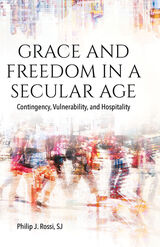 Grace and Freedom in a Secular Age: Contingency, Vulnerability, and Hospitality
Philip J. Rossi
Catholic University of America Press, 2022 In the course of a long and distinguished academic and civic career, the Canadian philosopher Charles Taylor has been, for articulate atheists and learned believers alike, an incisive, insightful, gracious, and challenging conversation partner on issues that arise at the intersection and interaction of religion, society, and culture.
Grace and Freedom in a Secular Age offers a concise exposition of key ideas – contingency, otherness, freedom, vulnerability and mutuality – that inform his probing analyses of the dynamics of religious belief and religious denial in the pervasive contemporary culture he calls a “a secular age,” within which religious belief and practice have, for many, become just an option. Those ideas provide the basis from which Rossi argues that, despite a clear-eyed recognition of the deep fractures of meaning and the pervasive fragmentation of once stable societal connections that a secular age has brought in its wake, Taylor also sees and affirms strong grounds for hope in a healing of our broken and fractured world and for the possibilities—and the importance of—active human participation in that healing. Taylor points to signs indicative of potent re-compositions and renewals taking place in religious belief and practice from its interaction with the dynamics of secular culture, particularly ones that make possible radical enactments of deeper human solidarity and mutuality, of which the one most often potent is the reconciliation of enemies. In pointing out these signs, Taylor suggests a richly expansive reading of the Christian doctrine of Creation, as it marks the radical contingency of all that is upon a freely bestowed divine self-giving: Creation is the ongoing enactment of the divine hospitality of the Triune God.
 The Grace and the Severity of the Ideal: John Dewey and the Transcendent
Victor Kestenbaum
University of Chicago Press, 2002 In this highly original book, Victor Kestenbaum calls into question the oft-repeated assumption that John Dewey's pragmatism has no place for the transcendent. Kestenbaum demonstrates that, far from ignoring the transcendent ideal, Dewey's works—on education, ethics, art, and religion—are in fact shaped by the tension between the natural and the transcendent.
Kestenbaum argues that to Dewey, the pragmatic struggle for ideal meaning occurs at the frontier of the visible and the invisible, the tangible and the intangible. Penetrating analyses of Dewey's early and later writings, as well as comparisons with the works of Hans-Georg Gadamer, Michael Oakeshott, and Wallace Stevens, shed new light on why Dewey regarded the human being's relationship to the ideal as "the most far-reaching question" of philosophy. For Dewey, the pragmatic struggle for the good life required a willingness "to surrender the actual experienced good for a possible ideal good." Dewey's pragmatism helps us to understand the place of the transcendent ideal in a world of action and practice.
 Grace Engine
Joshua Burton
University of Wisconsin Press, 2023 “Words carry the dead like henchmen,” in Joshua Burton’s extraordinary debut volume, Grace Engine. These spare and powerful poems are like pallbearers, like eulogists, like survivors, like battered souls hoping and dreaming for a future that may never be. Grappling head-on with the history of lynchings, mental illness, and the endurance of black bodies and psyches against impossible odds, Burton writes, “I spent so many years being afraid to be black, that now / I am only afraid of silence, / / or the silence that it brings.” Burton experiments with spaces, absences, and forms in navigating the tensions between shame and accountability, guilt and forgiveness, to understand how one finds the ability to cope under the worst of conditions. With patience and ferocity, he delves into generational and familial trauma to question whether black strength is inherent to blackness and to build a mechanism to survive and heal. I love all the dead,
both at the moment they unwed
themselves of shame
and before that.
—Excerpt from “Grace Engine”
Grace for Grace
Alexander Y. Hwang
Catholic University of America Press, 2014 The contributors to Grace for Grace focus on the debates on grace and free will inspired by Augustine's later teachings on grace and the various reactions to it. In both popular and scholarly literature, the conflict has been traditionally referred to as the "Semi-Pelagian Controversy." For several decades, scholars have distanced themselves from that overly-simplistic and inaccurate portrayal. This book intends to solidify a disparate movement of scholarly thought and offer a secure basis for renewed study of the persons, texts, and events of this critical period in the reception of Augustine in the Early Middle Ages. This volume brings together new perspectives, based on fresh study of a wealth of primary sources, from an international team of scholars to explore the intra-church debates over grace and free will, after Augustine and Pelagius.
 Grace for Grace: Stories
Steve De Jarnatt
Acre Books, 2020 Grace for Grace brings celebrated cult filmmaker Steve De Jarnatt’s distinctive voice and cinematic vision to the page. Lush inner lives, idiosyncratic syntax, and sweeping scale characterize these wildly imaginative stories, which present characters in search of meaning and belonging, and often, at the same time, redemption and revenge.
“Rubiaux Rising” (a Best American Short Stories selection) is a tale of triumph amid calamity during Hurricane Katrina, while “Her Great Blue” a surreal interspecies love story. “Mulligan” reveals the private pain of parents traveling across the country to give away their children, and “Wraiths in a Swelter” is both a ghost story and a confessional memoir—following a deliriously exhausted EMT through a deadly Chicago heat wave.
Many of the stories in Grace for Grace are set against the backdrop of natural or manmade catastrophes. These disasters test the characters’ limits as they confront sudden changes and extremes, discovering through their unexpected resourcefulness and endurance something beyond suffering. . . something that approaches the sublime.
Grace in the Cabin: Based on a True Ghost Story
Antoinette "Tiyi" Schippers
Parkhurst Brothers, Inc., 2025 Grace in the Cabin is based on a decades-long haunting of a secluded fishing lodge in the northern Wisconsin woods. The story begins with multiple terrifying paranormal events that the author, a spirit medium, and her family experienced.
Through her mediumship, the spirits reveal to the author the events that sparked the haunting, ultimately leading to resolution and freedom for both the living and the dead.
 Grace Notes
Heidi Hart
University of Utah Press, 2004
"Ever since I was 10 years old, I’d felt myself yearning to 'go astray.' For me, that didn’t mean drinking and cavorting with boys; it meant being myself without fear."—from the book
What happens when a trained singer who grew up in a "house of vowels" finds that her voice is not her own? What happens when a woman loses the Mormon faith of her childhood and abandons the rituals she’s always known? What does a woman, already married for thirteen years by her early thirties, do when she realizes she has been "lying for years?" How does one sing, with grace, from the heart?
In the spirit of Mary Catherine Bateson’s Composing a Life and Kathleen Norris’s Cloister Walk, Heidi Hart’s luminous memoir retraces her search for an opening to her heart’s path. She finds that the religious life of her Latter-day Saint family—which includes a revered General Authority—robs her of her voice and her spirit. When she discovers Catharine, a mute, Quaker ancestor, Hart begins a vital journey—a journey blessed by her devout and devoted husband; a journey that leads her as she studies Zuni mythology, Jewish tradition, Benedictine monastic ritual, Emily Dickinson, and Saint Hildegard of Bingen—a journey that leads her to a place that feels like home: the company of Friends, the Quaker community of Salt Lake City.
With grace and lyricism, Hart shares the private, personal wisdom she has earned in her community of friends, a community that embraces silences and dissonance, a place where she can't keep from singing.
 Grace Notes for a Year: Stories of Hope, Humor and Hubris from the World of Classical Music
Norman Gilliland
University of Wisconsin Press, 2003 This irresistible collection of stories is perfect for anyone interested in a fresh perspective on what it means to be a human being who creates art. Grace Notes for a Year sheds light on the fragile and perilous process of inspiration, composition, and performance required to create classical music, whether the final product is a masterpiece or a mess. Each page of the book corresponds to a different day of the year and features a true story about a famous figure in musical history. These delightful anecdotes—inspirational, informative, and often hilarious—disprove the myth of the artist as untouchable. Instead, Norman Gilliland exposes in them human vulnerability we can all relate to. From Beethoven to Wagner, these artists suffered from poverty, spent lazy days in bed, had scandalous love affairs, and often failed in their creative endeavors as often as they succeeded.
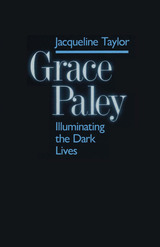 Grace Paley: Illuminating Dark Lives
By Jacqueline Taylor
University of Texas Press, 1990 Grace Paley is a "writer's writer," admired by both scholars and the reading public for her originality and unique voice. In this first book-length study of her work, Jacqueline Taylor explores the source of Paley's originality, locating it in the way Paley transforms language to create strongly woman-centered stories. Drawing on interviews with the author, as well as the stories themselves, Taylor emphasizes Paley's awareness that women's voices have been muted and their stories ignored or left untold in our culture's male-oriented dominant discourse. She watches Paley in the process of reshaping language at both the semantic and narrative levels to make it express women's perceptions and experiences. In Paley's stories, it becomes possible to ignore traditional heroic and dramatic themes and instead talk about women and children in such everyday settings as the playground, the kitchen, and the grocery store. Some of the specific techniques Paley uses to accomplish this include identifying and repudiating sexist language in the dominant discourse and redefining ordinary words from the perspective of women. At the narrative level, Taylor reveals how she draws on women's oral traditions to tell open-ended stories that resist rigid beginning-middle-and-end structuring. This transformed language enables Paley to construct a social world where woman-centered meanings can flourish. In her nontraditional stories, no single narrator or version of events dominates. Anyone can be a storyteller and no one has the last word.
 Grace Period: A Novel
Gerald W. Haslam
University of Nevada Press, 2006 A masterpiece by one of the West’s best-loved authorsJust when Sacramento journalist Marty Martinez thinks his life can’t get any worse, it does. His beloved son has died of AIDS, his wife has divorced him and joined a cult, and his daughter blames him for the disintegration of their family. Then a chance medical examination reveals that he has prostate cancer. Marty faces his new role as a cancer patient with awkward grit and desperation. He is a sympathetic, utterly convincing character seeking faith in a Catholic Church as troubled as he is. He brings increased intensity to his career as he investigates a far-reaching political scandal, reunites his family in unexpected ways, and finds love with a fellow cancer patient. Grace Period is a profound and sometimes hilarious novel about living with serious illness. Marty copes with fear and the painful, sometimes embarrassing, treatment of his disease, but instead of winding down his life he finds fresh purpose and a joyful new love. Haslam brilliantly depicts the complexities of everyday life and the intricate, sometimes tortured bonds of family and friendship. In Grace Period, Haslam shows us that existence at the precarious edge of life offers not only pain and loss but hope, a chance at redemption, love, and even happiness. Grace Period is his masterwork.
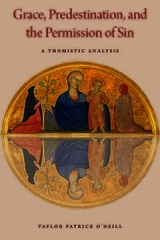 Grace, Predestination, and the Permission of Sin: A Thomistic Analysis
Taylor O'Neill
Catholic University of America Press, 2019 Grace, Predestination, and the Permission of Sin seeks to analyze a revisionist movement within Thomism in the 20th century over and against the traditional or classical Thomistic commentatorial treatment of physical premotion, grace, and the permission of sin, especially as these relate to the mysteries of predestination and reprobation. The over-arching critique leveled by the revisionists against the classic treatment is that Bañezian scholasticism had disregarded the dissymmetry between the line of good (God's causation of salutary acts) and the line of evil (God's permission of defect and sin). The teaching of St. Thomas is explored via intimate consideration of his texts. The thought of St. Thomas is then compared with the work of Domingo Bañez and the foremost 'Bañezian' of the 20th century, Reginald Garrigou-Lagrange. The work then shifts to a consideration of the major players of the revisionist treatment, including Francisco Marín-Sola, Jacques Maritain, and Bernard Lonergan. Jean-Herve Nicolas is also taken up as one who had held both accounts during his lifetime. The work analyzes and critiques the revisionist theories according to the fundamental tenets of the classical account. Upon final analysis, it seeks to show that the classical account sufficiently distances God's causal role in regard to free salutary acts and His non-causal role in regard to free sinful acts. Moreover, the revisionist account presents significant metaphysical problems and challenges major tenets of classical theism, such as the divine omnipotence, simplicity, and the exhaustive nature of divine providence. Finally, the implications of the traditional view are considered in light of the spiritual life. It is argued that the classical account is the only one which provides an adequate theological foundation for the Church's robust mystical and spiritual tradition, and in particular, the abandonment to divine providence.
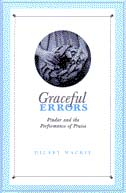 Graceful Errors: Pindar and the Performance of Praise
Hilary Mackie
University of Michigan Press, 2003 Returning home, a victor in the great Greek games of the fifth century B.C. could expect an exquisite choral performance in praise of his achievement?that is, if he had the foresight to hire Pindar. Self-conscious and tactful, yet proudly assertive, Pindar's odes delicately balanced praise against the risk of overstepping; evoked past heroes without overshadowing the present; and prayed for a future harmonizing human aspiration with divine aims.
Reading Pindar's poems with their public performance in mind, Hilary Mackie suggests that the poet was forced to tread a precarious path: weighing the interests of various groups of audience members against one another, balancing praise of the victorious athlete with praise of the deeds of mythic heroes, and catering at the same time to an uncertain future. Mackie's new approach illuminates apparent contradictions in the poet's pronouncements by bringing to the fore the variety of messages conveyed in his wishes and prayers. Her innovative examination of the moment-to-moment dynamic between Pindar and his audience shows that the poet's performance often contained one message for the victor and his family, and quite another for the gods.
Graceful Errors significantly changes our perspective on Pindar's work, providing a lucid appreciation of Pindaric poetry that takes into account the oral context of these poems' performance. It will be of interest not only to classicists but also to scholars and students interested in oral performance, the social function of poetry, and the role and status of poets in traditional cultures, whether ancient or modern.
Hilary Mackie is Associate Professor of Classics at Rice University.
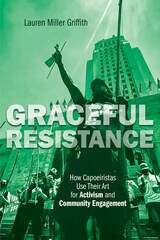 Graceful Resistance: How Capoeiristas Use Their Art for Activism and Community Engagement
Lauren Miller Griffith
University of Illinois Press, 2023 Capoeira began as a martial art developed by enslaved Afro-Brazilians. Today, the practice incorporates song, dance, acrobatics, and theatrical improvisation—and leads many participants into activism. Lauren Miller Griffith’s extensive participant observation with multiple capoeira groups informs her ethnography of capoeiristas--both individuals and groups--in the United States. Griffith follows practitioners beyond their physical training into social justice activities that illuminate capoeira’s strong connection to resistance and subversion. As both individuals and communities of capoeiristas, participants march against racial discrimination, celebrate Martin Luther King Jr. Day and Juneteenth, organize professional clothing drives for job seekers, and pursue economic and environmental justice in their neighborhoods. For these people, capoeira becomes a type of serious leisure that contributes to personal growth, a sense of belonging, and an overall sense of self, while also imposing duties and obligations. An innovative look at capoeira in America, Graceful Resistance reveals how the practicing of an art can catalyze action and transform communities.
 Graceland Cemetery: Chicago Stories, Symbols, and Secrets
Adam Selzer
University of Illinois Press, 2022 Chosen for the 2024 Illinois Reads Program by the Illinois Reading Council One of Chicago’s landmark attractions, Graceland Cemetery chronicles the city’s sprawling history through the stories of its people. Local historian and Graceland tour guide Adam Selzer presents ten walking tours covering almost the entirety of the cemetery grounds. While nodding to famous Graceland figures from Marshall Field to Ernie Banks to Ludwig Mies van der Rohe, Selzer also leads readers past the vaults, obelisks, and other markers that call attention to less recognized Chicagoans like: - Jessie Williams de Priest, the Black wife of a congressman whose 1929 invitation to a White House tea party set off a storm of controversy;
- Engineer and architect Fazlur Khan, the Bangladeshi American who revived the city's skyscraper culture;
- The still-mysterious Kate Warn (listed as Warn on her tombstone), the United States’ first female private detective.
Filled with photographs and including detailed maps of each tour route, Graceland Cemetery is an insider's guide to one of Chicago's great outdoor destinations for city lore and history.
Graceland: Going Home with Elvis
Karal Ann Marling
Harvard University Press, 1996 He wasn't articulate on the subject of himself, but when he created his dream house Elvis Presley spoke volumes. What the mansion says of Elvis, and what it says to--and of--the millions of fans who make the journey there each year, is what Graceland is about.
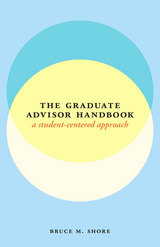 The Graduate Advisor Handbook: A Student-Centered Approach
Bruce M. Shore
University of Chicago Press, 2014 In the sink-or-swim world of academia, a great graduate advising can be a lifesaver. But with university budgets shrinking and free time evaporating, advisors often need a mentor themselves to learn how to best support their advisees. Bruce M. Shore, an award-winning advisor with more than forty years of advising experience, is just the coach that graduate advisors need. With The Graduate Advisor Handbook: A Student-Centered Approach, Shore demystifies the advisor-student relationship, providing tips and practical advice that will help both students and advisors thrive.
One of the first books to approach advising from the advisor’s point of view, the handbook highlights the importance of a partnership in which both parties need to be invested. Shore emphasizes the interpersonal relationships at the heart of advising and reveals how advisors can draw on their own strengths to create a rewarding rapport.
The Graduate Advisor Handbook moves chronologically through the advising process, from the first knock on the door to the last reference letter. Along the way it covers transparent communication, effective motivation, and cooperative troubleshooting. Its clear-eyed approach also tackles touchy subjects, including what to do when personal boundaries are crossed and how to deliver difficult news. Sample scripts help advisors find the right words for even the toughest situations.
With resources dwindling and student and advising loads increasing, graduate advisors need all the resources they can find to give their students the help they need. The Graduate Advisor Handbook has the cool-headed advice and comprehensive coverage that advisors need to make the advising relationship not just effective but also enjoyable.
 The Graduate School Mess: What Caused It and How We Can Fix It
Leonard Cassuto
Harvard University Press, 2015 It is no secret that American graduate education is in disarray. Graduate students take too long to complete their studies and face a dismal academic job market if they succeed. The Graduate School Mess gets to the root of these problems and offers concrete solutions for revitalizing graduate education in the humanities. Leonard Cassuto, professor and graduate education columnist for The Chronicle of Higher Education, argues that universities’ heavy emphasis on research comes at the expense of teaching. But teaching is where reforming graduate school must begin.
Cassuto says that graduate education must recover its mission of public service. Professors should revamp the graduate curriculum and broaden its narrow definition of success to allow students to create more fulfilling lives for themselves both inside and outside the academy. Cassuto frames the current situation foremost as a teaching problem: professors rarely prepare graduate students for the demands of the working worlds they will actually join. He gives practical advice about how faculty can teach and advise graduate students by committing to a student-centered approach.
In chapters that follow the career of the graduate student from admissions to the dissertation and placement, Cassuto considers how each stage of graduate education is shaped by unexamined assumptions and ancient prejudices that need to be critically confronted. Written with verve and infused with history, The Graduate School Mess returns our national conversation about graduate study in the humanities to first principles.
The Graduate Study of Education: Report of the Harvard Committee
Harvard University Graduate School of Education
Harvard University Press This report was completed by a special committee of the Harvard Faculty of Education appointed to consider how the graduate study of education should be viewed in the context of a strong independent university. Its focus is on Harvard but its concerns will be relevant elsewhere. Asserting that “education is as broad as all of culture,” the committee interprets the school of education “as the university proper, focused upon the field of education.” Specifically the report treats problems of priorities, program integration, improvement of teaching, and organization of research, and offers wide-ranging recommendations. Included are a history of the Graduate School of Education, a summary of the Faculty's initial actions, and new doctoral program directions.
Graduate Writing Across the Disciplines: Identifying, Teaching, and Supporting
Marilee Brooks-Gillies
University Press of Colorado, 2020 In Graduate Writing Across the Disciplines, the editors and their colleagues argue that graduate education must include a wide range of writing support designed to identify writers’ needs, teach writers through direct instruction, and support writers through programs such as writing centers, writing camps, and writing groups. The chapters in this collection demonstrate that attending to the needs of graduate writers requires multiple approaches and thoughtful attention to the distinctive contexts and resources of individual universities while remaining mindful of research on and across similar programs at other universities.
 The Graft Hybrid: Challenging Twentieth-Century Genetics
Matthew Holmes
University of Pittsburgh Press, 2023 The global triumph of Mendelian genetics in the twentieth century was not a foregone conclusion, thanks to the existence of graft hybrids. These chimeral plants and animals are created by grafting tissue from one organism to another with the goal of passing the newly hybridized genetic material on to their offspring. But prevailing genetic theory insisted that heredity was confined to the sex cells and there was no inheritance of characteristics acquired during an organism’s lifetime. Under sustained attacks from geneticists, scientific belief in the existence of graft hybrids slowly began to decline. Yet ordinary horticulturalists and breeders continued to believe in the power of grafting. Matthew Holmes tells the story of these organisms—which include multicolored chickens and black nightshades that grew tomatoes—and their enduring influence on twentieth-century biology. Their creators sought a goal as ambitious as the wildest dreams of genetic engineering today: to smash the barriers between species and freely exchange genes between organisms. The Graft Hybrid presents a greater understanding of the controversial history of graft hybrids, offering a crucial intervention in the history of genetics and the future of biological science.
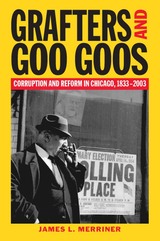 Grafters and Goo Goos: Corruption and Reform in Chicago
James L. Merriner
Southern Illinois University Press, 2008 Chicago’s reputation for corruption is the basis of local and national folklore and humor. Grafters and Goo Goos: Corruption and Reform in Chicago, 1833–2003 unfolds the city’s notorious history of corruption and the countervailing reform struggles that largely failed to clean it up. More than a regional history of crime in politics, this wide-ranging account of governmental malfeasances traces ongoing public corruption and reform to its nineteenth-century democratic roots. Former Chicago journalist James L. Merriner reveals the battles between corrupt politicos and ardent reformers to be expressions of conflicting class, ethnic, and religious values. From Chicago’s earliest years in the 1830s, the city welcomed dollar-chasing businessmen and politicians, swiftly followed by reformers who strived to clean up the attendant corruption. Reformers in Chicago were called “goo goos,” a derisive epithet short for “good-government types.” Grafters and Goo Goos contends a certain synergy defined the relationship between corruption and reform. Politicians and reformers often behaved similarly, their separate ambitions merging into a conjoined politics of interdependency wherein the line between heroes and villains grew increasingly faint. The real story, asserts Merriner, has less to do with right against wrong than it does with the ways the cultural backgrounds of politicians and reformers steered their own agendas, animating and defining each other by their opposition. Drawing on original and archival research, Merriner identifies constants in the struggle between corruption and reform amid a welter of changing social circumstances and customs—decades of alternating war and peace, hardships and prosperity. Three areas of reform and resistance are identified: structural reform of the political system to promote honesty and efficiency, social reform to provide justice to the lower classes, and moral reform to combat vice. “In the matter of corruption and reform, the constants might be stronger than the variables,” writes Merriner in the Preface. “The players, rules, and scorekeepers change, but not the essential game.” Complemented by eighteen illustrations, Grafters and Goo Goos is rife with shocking and amusing anecdotes and peppered with the personalities of famous muckrakers, bootleggers, mayors, and mobsters. While other studies have profiled infamous Chicago corruption cases and figures such as Al Capone and Richard J. Daley, this is the first to provide an overview appropriate for historians and general readers alike. In examining Chicago’s notorious saga of corruption and reform against a backdrop of social history, Merriner calls attention to our constant problems of both civic and national corruption and contributes to larger discussions about the American experiment of democratic self-government.
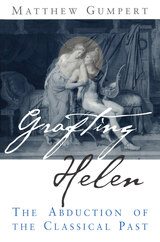 Grafting Helen: The Abduction of the Classical Past
Matthew Gumpert
University of Wisconsin Press, 2001 History is a love story: a tale of desire and jealousy, abandonment and fidelity, abduction and theft, rupture and reconciliation. This contention is central to Grafting Helen, Matthew Gumpert's original and dazzling meditation on Helen of Troy as a crucial anchor for much of Western thought and literature.
Grafting Helen looks at "classicism"—the privileged rhetorical language for describing cultural origins in the West—as a protracted form of cultural embezzlement. No coin in the realm has been more valuable, more circulated, more coveted, or more counterfeited than the one that bears the face of Helen of Troy. Gumpert uncovers Helen as the emblem for the past as something to be stolen, appropriated, imitated, extorted, and coveted once again.
Tracing the figure of Helen from its classical origins through the Middle Ages, the French Renaissance, and the modern era, Gumpert suggests that the relation of current Western culture to the past is not like the act of coveting; it is the act of coveting, he argues, for it relies on the same strategies, the same defenses, the same denials, and the same delusions.
 Grafts
Michael Marder
University of Minnesota Press, 2016 Grafting: do we ever do anything other than that? And are we ever free from vegetal influences when we engage in its operations? For the philosopher Michael Marder, our reflections on vegetal life have a fundamental importance in how we can reflect on our own conceptions of ethics, politics, and philosophy in general. Taking as his starting point the simple vegetal conception of grafting, Marder guides the reader through his concise and numerous reflections on what could be described as a vegetal philosophy. Grafts are transplants either of a shoot inserted into the trunk of another tree or, surgically, of skin (among other living tissues). They are delicate operations intended to preserve, improve, and modify both the grafted materials and the body that receives them. To graft is to create unlikely encounters, hybrid mixes, and novel surfaces. Moving across disciplinary lines, Grafts combines the lessons of plant science with the history of philosophy, semiotics, literary compositions, and political theory. Co-authoring some of the texts with other philosophers, plant scientists and artists, Marder allows their insights to be grafted onto his own, and vice versa. Weighing in on contemporary debates such as the ethics of biotechnology, dietary practices or political organization, Marder inserts an unmistakable vegetal perspective into topics of discussion where it normally wouldn’t be found. Transferring the living tissue of his own texts into another context, he helps them live better, more fully, than otherwise.
 Graham Greene's Fictions: The Virtues of Extremity
Cates Baldridge
University of Missouri Press, 2000
The first critical evaluation of Greene's novels since his death in 1991, Graham Greene's Fictions: The Virtues of Extremity is a reconsideration of the author's major literary achievements, as well as a recasting of his overall worldview. Hitherto, most criticism of Greene's fiction has forced him into the constricting category of the "Catholic novelist," consequently flattening the peaks and valleys of his uncompromising vision of life. Graham Greene's Fictions is Cates Baldridge's response to this critical disservice—an exploration that ignores the conventional preconceptions about Greene's fiction and reveals him to be one of the leading British novelists of the twentieth century.
More than a general assessment, Graham Greene's Fictions offers a fresh interpretation of familiar texts and attempts to discover within Greene's work a structure of thought that has not yet been seen with sufficient clarity. Each chapter focuses on a major aspect of Greene's vision as expressed through his novels. Greene's caustic attitude toward middle-class orthodoxies and his critiques of the three reigning ideologies of his time--Christianity, Marxism, and liberalism—are just two of the areas that Baldridge explores. Although five of Greene's novels are singled out for extensive evaluation—Brighton Rock, The Power and the Glory, The Heart of the Matter, The Comedians, and The Honorary Consul—what Baldridge attempts is nothing less than a comprehensive re-imagination of "Greeneland's" fictional topography.
Written for both the scholar and the general audience, this innovative study successfully captures the attention of all readers whether it is the first or the fifty-first work of Greene criticism one has read.
 Graham R.: Rosamund Marriot Watson, Woman of Letters
Linda K. Hughes
Ohio University Press, 2005 Rosamund Marriott Watson was a gifted poet, an erudite literary and art critic, and a daring beauty whose life illuminates fin-de-siècle London and the way in which literary reputations are made—and lost. A participant in aestheticism and decadence, she wrote six volumes of poems noted for their subtle cadence, diction, and uncanny effects. Linda K. Hughes unfolds a complex life in Graham R.: Rosamund Marriott Watson, Woman of Letters, tracing the poet’s development from accomplished ballads and sonnets, to avant-garde urban impressionism and New Woman poetry, to her anticipation of literary modernism. Despite an early first divorce, she won fame writing under a pseudonym, Graham R. Tomson. The influential Andrew Lang announced the arrival of a new poet he assumed to be a man. She was soon hosting a salon attended by Lang, Oscar Wilde, and other 1890s notables. Publishing to widespread praise as Graham R., she exemplified the complex cultural politics of her era. A woman with a man’s name and a scandalous past, she was also a graceful beauty who captivated Thomas Hardy and left an impression on his work. At the height of her success she fell in love with writer H. B. Marriott Watson and dared a second divorce. Graham R. combines the stories of a gifted poet, of London literary networks in the 1890s, and of a bold woman whose achievements and scandals turned on her unusual history of marriage and divorce. Her literary history and her uncommon experience reveal the limits and opportunities faced by an unconventional, ambitious, and talented woman at the turn of the century.
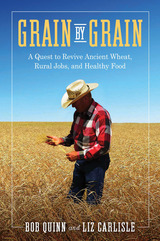 Grain by Grain: A Quest to Revive Ancient Wheat, Rural Jobs, and Healthy Food
Bob Quinn and Liz Carlisle
Island Press, 2019 "A compelling agricultural story skillfully told; environmentalists will eat it up." - Kirkus Reviews
When Bob Quinn was a kid, a stranger at a county fair gave him a few kernels of an unusual grain. Little did he know, that grain would change his life. Years later, after finishing a PhD in plant biochemistry and returning to his family’s farm in Montana, Bob started experimenting with organic wheat. In the beginning, his concern wasn’t health or the environment; he just wanted to make a decent living and some chance encounters led him to organics.
But as demand for organics grew, so too did Bob’s experiments. He discovered that through time-tested practices like cover cropping and crop rotation, he could produce successful yields—without pesticides. Regenerative organic farming allowed him to grow fruits and vegetables in cold, dry Montana, providing a source of local produce to families in his hometown. He even started producing his own renewable energy. And he learned that the grain he first tasted at the fair was actually a type of ancient wheat, one that was proven to lower inflammation rather than worsening it, as modern wheat does.
Ultimately, Bob’s forays with organics turned into a multimillion dollar heirloom grain company, Kamut International. In Grain by Grain, Quinn and cowriter Liz Carlisle, author of Lentil Underground, show how his story can become the story of American agriculture. We don’t have to accept stagnating rural communities, degraded soil, or poor health. By following Bob’s example, we can grow a healthy future, grain by grain.
Grain Growers' Cooperation in Western Canada
Harold S. Patton
Harvard University Press In the first three parts of this study, Harold Patton describes the various forms of cooperative organization evolved by Western grain growers in their successive struggles against the railway and line elevator companies; in the fourth part he examines the significant features of the movement and appraises the economic and social results of these cooperative enterprises. The study possesses an especially instructive value in view of the current discussion of farm-relief measures in the United States.
A Grain of Sand in Lambeth: Poems
Geoffrey Babbitt
University of Nevada Press, 2025 In A Grain of Sand in Lambeth, poetry becomes a lens through which to explore the complex, visionary world of William Blake. Drawing on Blake’s own rejection of tradition and his relentless quest to challenge the boundaries of art, Geoffrey Babbitt confronts the tensions between genius and convention, life and death, light and dark.
Each poem in this collection inhabits a moment of Blake’s life, offering a vivid glimpse into his unique perspective—a perspective that rejected the normative for the transformative power of imagination. From his visionary watercolors to his provocative views on oil painting, these poems draw readers into Blake’s world, where reality and the unseen converge in prismatic intensity.
A Grain of Sand in Lambeth is an invitation to experience the world through Blake’s eyes—a world where imagination reigns supreme and art is a living force.
The Grain of the Voice: Interviews 1962-1980
Roland Barthes
Northwestern University Press, 2009 This book brings together the great majority of Barthes’s interviews that originally appeared in French in Le Figaro Littéraire, Cahiers du Cinéma, France-Observateur, L'Express, and elsewhere. Barthes replied to questions—on the cinema, on his own works, on fashion, writing, and criticism—in his unique voice; here we have Barthes in conversation, speaking directly, with all his individuality. These interviews provide an insight into the rich, probing intelligence of one of the great and influential minds of our time.
 Grain Storage: The Role of Fungi in Quality Loss
Clyde M. Christensen and Henry H. Kaufmann
University of Minnesota Press, 1969
Grain Storage was first published in 1969. Minnesota Archive Editions uses digital technology to make long-unavailable books once again accessible, and are published unaltered from the original University of Minnesota Press editions.
The deterioration or spoilage of stored grain is a problem of serious dimension, both from the standpoint of the financial balance sheet of those engaged in commercial grain enterprises and as a formidable factor in the worldwide fight against hunger. In this useful book the authors present practical information, in non-technical language, about the causes and methods of preventing the deterioration of stored grains and seeds.
The emphasis is on the role of fungi but material also is included on problems with insects, mites, and rodents in connection with grain storage. The fungi are of prime importance since not until recently have they been recognized as a major cause of loss of quality in grains and seeds. Even today many of those who deal with grains, from warehouses to management personnel, fail to realize that fungi may play a decisive role in their operations.
The book will be of special interest and value to grain merchants and processors, grain elevator managers and operators, grain inspectors, agronomists and agricultural economists concerned with crop production, and many others in agricultural or food processing fields.
Grain Supply of England During the Napoleonic Period: a thesis
W. Freeman Galpin
University of Michigan Press, 1925 The Grain Supply of England During the Napoleonic Period is a broad study of the profound influence the agricultural economy had on English domestic politics during the Napoleonic wars. During an extended period when war threatened unpredictable disruptions of trade, grain produced domestically was crucial to the economic health of the nation. A steady and affordable supply of domestically produced staple foodstuffs was politically important for keeping the population calm during wartime, and favorably disposed to governments that could assure an affordable food supply for the home front while still supplying troops abroad—and keeping farmers solvent. This study looks at the economic history of the period, including the influence of the "Corn Laws" that helped maintain the political and economic balance.
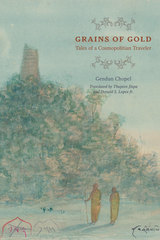 Grains of Gold: Tales of a Cosmopolitan Traveler
Gendun Chopel
University of Chicago Press, 2013 In 1941, philosopher and poet Gendun Chopel (1903–51) sent a large manuscript by ship, train, and yak across mountains and deserts to his homeland in the northeastern corner of Tibet. He would follow it five years later, returning to his native land after twelve years in India and Sri Lanka. But he did not receive the welcome he imagined: he was arrested by the government of the regent of the young Dalai Lama on trumped-up charges of treason. He emerged from prison three years later a broken man and died soon after. Gendun Chopel was a prolific writer during his short life. Yet he considered that manuscript, which he titled Grains of Gold, to be his life’s work, one to delight his compatriots with tales of an ancient Indian and Tibetan past, while alerting them to the wonders and dangers of the strikingly modern land abutting Tibet’s southern border, the British colony of India. Now available for the first time in English, Grains of Gold is a unique compendium of South Asian and Tibetan culture that combines travelogue, drawings, history, and ethnography. Gendun Chopel describes the world he discovered in South Asia, from the ruins of the sacred sites of Buddhism to the Sanskrit classics he learned to read in the original. He is also sharply, often humorously critical of the Tibetan love of the fantastic, bursting one myth after another and finding fault with the accounts of earlier Tibetan pilgrims. Exploring a wide range of cultures and religions central to the history of the region, Gendun Chopel is eager to describe all the new knowledge he gathered in his travels to his Buddhist audience in Tibet. At once the account of the experiences of a tragic figure in Tibetan history and the work of an extraordinary scholar, Grains of Gold is an accessible, compelling work animated by a sense of discovery of both a distant past and a strange present.
Grains of the Voice: Poems
Christina Pugh
Northwestern University Press, 2013 Christina Pugh’s Grains of the Voice exhibits a pervasive fascination with sound in all its manifestations. The human voice, musical instruments, the sounds produced by the natural and man-made worlds—all serve at one time or another as both the framework of poems and the occasion for their lightning-quick changes of direction, of tone, of point of reference. The poems are eclectic in their allusiveness, filled with echoes—and sometimes the words themselves—of other poets, but just as often of songs both popular and obscure, of the noise of pop culture, and of philosophers’ writings. But Pugh always wears her learning lightly. Beneath the jewellike surfaces of her poems is a strenuous investigation of the nature of and need for communication and a celebration of the endless variety of its forms.
 Gramática para la composición: Segunda edición
M. Stanley Whitley and Luis González
Georgetown University Press, 2007 Integrating grammar and composition, this comprehensive new edition guides the advanced student through progressively more complex types of writing by organizing the grammar lessons on a functionalist basis around the needs of composition. This innovative approach to teaching Spanish grammar and composition promotes systematic language development and enables students to strengthen their expressive and editing skills in the language in order to write more effectively and more confidently. Refined by years of classroom testing and analysis of the problems students encounter, this bestselling textbook has been substantially rewritten and incorporates current research in composition, pedagogy, second-language acquisition, and linguistics. Expanded self-correcting exercises are also available online, making Gramática para la composición one of the most valuable textbooks available for advanced students of Spanish. FEATURES: • Focuses on work in six level-appropriate types of composition: description, synopsis, personal narrative, creative narrative, exposition, and argumentation; • Based on ACTFL guidelines for students progressing from intermediate to advanced levels of proficiency; • Covers syntax, dictionary skills, problematic word distinctions, and rhetorical features of discourse structure; • Contains exercises on grammar practice, working with sentences and paragraphs, guided essays, and free composition. NEW TO THE SECOND EDITION: • Each lesson has been clearly divided into two distinct parts: Presentación (material that students prepare before class) and Aplicación (the activities they do in class or as homework); • Prácticas individuales have been expanded and recreated as self-checking exercises that provide immediate feedback and scoring. These prácticas are available for free online at www.gramaticaparalacomposicion.com; • Images from William Bull's Visual Grammar of Spanish help with distinctions that seem difficult; • An Instructor's Manual—available for free online—reviews teaching and grading methodology for writing-intensive courses, offers suggestions for syllabus organization and for teaching each lesson, and provides additional exercises and activities. To download this free PDF, visit www.press.georgetown.edu; • Free website created by authors contains self-checking exercises at www.gramaticaparalacomposicion.com.
 Gramática para la composición: tercera edición
M. Stanley Whitley y Luis González
Georgetown University Press, 2015 E-Textbooks are now available to purchase or rent through VitalSource.com! Please visit VitalSource for more information on pricing and availability. As of January 1, 2021, Smart Sparrow Companion Websites are no longer available for any of our textbook programs. New companion websites are coming soon, and will be hosted by Lingco. Instructors may sample the new companion websites now by visiting GUPTextbooks.com/companionwebsites. The full websites will be available for fall 2021 course adoption. Until the new companion websites become available, eBook Workbooks with exercises from the Smart Sparrow Electronic Workbook are available for purchase on the GUP website and VitalSource.com, as are Workbook Answer Keys. They will both be sold in eBook format only. About Gramática para la composición, tercera edición This best-selling textbook guides advanced students through progressively more complex types of writing by organizing the grammar lessons on a functionalist basis around the needs of composition. This innovative approach to teaching Spanish grammar and composition promotes systematic language development and enables students to strengthen their expressive and editing skills in the language in order to write more effectively and confidently. Refined by years of classroom testing and analysis of the problems students encounter, Gramática para la composición features the following: • A colorful design helps students navigate the book more easily and engage visual learning strategies• Readings for major composition exercises that stress authentic, connected discourse• A Workbook with all of the homework exercises needed for practice (sold separately)• Streamlined treatment of points of grammar, including an explanation for more than twelve functions of se with a rule of subject reflexivization For Teachers: Exam copies of the textbook, Workbook, and Workbook Answer Keys are available free of charge to instructors and must be requested separately. Textbook exam copies can be ordered on this page. To request digital exam copies of the Workbook and Workbook Answer Keys, please visit the pages for each of those products.
 Gramática para la composición with website: tercera edición
M. Stanley Whitley and Luis González
Georgetown University Press, 2021 This best-selling textbook guides advanced students through progressively more complex types of writing by organizing the grammar lessons on a functionalist basis around the needs of composition. This innovative approach to teaching Spanish grammar and composition promotes systematic language development and enables students to strengthen their expressive and editing skills in the language in order to write more effectively and confidently. The accompanying companion website–included with the book–offers fully integrated exercises to use alongside the text. Features: • A colorful design that helps students navigate the book more easily and engage visual learning strategies • Readings for major composition exercises that stress authentic, connected discourse • Streamlined treatment of points of grammar, including an explanation for more than twelve functions of se with a rule of subject reflexivization For Instructors: Separate print Teacher's Editions of Gramática para la compocisión are no longer available. Instead, instructors should submit exam and desk copy requests using ISBN 978-1-64712-215-7.
A Grammar and Dictionary of the Timucua Language
Julian Granberry
University of Alabama Press, 1993 Taken from the surviving contemporary documentary sources, Julian Granberry's volume describes the grammar and lexicon for the extinct 17th-century Timucua language of Central and North Florida and traces the origins of the 17th-century Timucua speakers and their language. Originally privately published in 1987, with limited circulation, this is the only available publication on the Timucuan language. It provides full grammatical analysis and complete lexical data, and it synthesizes both linguistic and archaeological data in order to provide a coherent picture of the Timucua peoples. Granberry traces the probable historical origins of Timucua speakers to a central Amazonian homeland at approximately 2,500 B.C. and proposes that Timucua speakers were responsible for introducing ceramic wares into North America.
 Grammar and Discourse Principles: Functional Syntax and GB Theory
Susumu Kuno and Ken-ichi Takami
University of Chicago Press, 1993 In Grammar and Discourse Principles, Susumu Kuno and Ken-ichi Takami critically examine recent work in the Government and Binding framework developed by Chomsky, Rizzi, Lasnik and Saito, Huang, Aoun, and others. They demonstrate that this work encounters a variety of empirical and theoretical difficulties when confronted by an expanded range of data. Alternatively, the authors offer independently motivated functional explanations that account for these data and that do not require postulation of concepts like "L-marking" and "blocking category."
Kuno and Takami begin by looking at extraction phenomena, including extraction from complement clauses, the overt subject requirement, and subjacency, and provide functional accounts that improve on the Barriers analysis. Next, they discuss multiple wh questions in English and Japanese, with special reference to why and naze. The authors also examine and ultimately reject the major arguments in support of Larson's "light predicate raising" analysis. Finally, Kuno and Takami discuss coreferentiality of picture noun reflexives and the relation of quantifier scope interpretations, particularly those in sentences involving psychological verbs such as bother, worry, and please.
In this subtly argued book, the authors raise questions of critical importance for theoretical linguists of all persuasions.
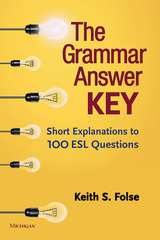 The Grammar Answer Key: Short Explanations to 100 ESL Questions
Keith S. Folse
University of Michigan Press, 2018 The Grammar Answer Key is a collection of 100 questions submitted by ESL teachers--both novice and experienced and both native and non-native speakers--from many different countries around the world. The questions are real questions that ESL/EFL students have asked teachers about English and are similar to the Hot Seat Questions presented in Keys to Teaching Grammar to English Language Learners, 2nd ed. (Folse, 2016). The 100 questions are organized into 12 chapters on topics that teachers and students can relate to well: adjectives, articles, clauses, connectors, gerunds and infinitives, prepositions, pronouns, pronunciation, subject-verb agreement, suffixes, verbs, and vocabulary-grammar connections. The number of questions in each chapter ranges from 3 to 13 and is based on the questions submitted. Each chapter begins with a short overview of the topic that features key terminology and a chart explaining three common ESL errors. Each question is presented in a box and is followed by an "answer" that can inform instruction, often in chart format. Examples of questions are: - How do you know if a word is an adjective?
- Can I say the Monday or the January?
- Do you say on July or in July?
- I received an email from someone that said “Greetings from my wife and I.” Is this right? Why?
- How do I know which way to pronounce the -ed at the end of a word?
- Which verb tenses are the most common in English? Which ones should I study?
- Why do you say turn on the light instead of turn the light?
- In my language, we have one word for make and do. In English, when should I use make and when should I use do?
The book is the ideal teacher resource and professional development tool.
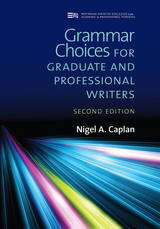 Grammar Choices for Graduate and Professional Writers, Second Edition
Nigel A. Caplan
University of Michigan Press, 2019 Grammar Choices is a different kind of grammar book: It is written for graduate students, including MBA, master’s, and doctoral candidates, as well as postdoctoral researchers and faculty. Additionally, it describes the language of advanced academic writing with more than 300 real examples from successful graduate students and from published texts, including corpora. Each of the eight units in Grammar Choices contains: an overview of the grammar topic; a preview test that allows students to assess their control of the target grammar and teachers to diagnose areas of difficulty; an authentic example of graduate-student writing showing the unit grammar in use; clear descriptions of essential grammar structures using the framework of functional grammar, cutting-edge research in applied linguistics, and corpus studies; vocabulary relevant to the grammar point is introduced—for example, common verbs in the passive voice, summary nouns used with this/these, and irregular plural nouns; authentic examples for every grammar point from corpora and published texts; exercises for every grammar point that help writers develop grammatical awareness and use, including completing sentences, writing, revising, paraphrasing, and editing; and a section inviting writers to investigate discipline-specific language use and apply it to an academic genre. Among the changes in the Second Edition are: - new sections on parallel form (Unit 2) and possessives (Unit 5)
- revised and expanded explanations, but particularly regarding verb complementation, complement noun clauses, passive voice, and stance/engagement
- a restructured Unit 2 and significantly revised/updated Unit 7
- new Grammar Awareness tasks in Units 3, 5, and 6
- new exercises plus revision/updating of many others
- self-editing checklists in the Grammar in Your Discipline sections at the end of each unit
- representation of additional academic disciplines (e.g., engineering, management) in example sentences and texts and in exercises.
Grammar Crammer: How to Write Perfect Sentences
Judi Kesselman-Turkel and Franklynn Peterson
University of Wisconsin Press, 2003 The Grammar Crammer is a concise, sensible grammar handbook that explains lucidly how to remember correct word forms and sentence structures. Useful as a reference tool for high school and beyond, it packs an entire grammar encyclopedia into just over a hundred pages.
Grammar, Geometry, and Brain
Jens Erik Fenstad
CSLI, 2010 This original study considers the effects of language and meaning on the brain. Jens Erik Fenstad—an expert in the fields of recursion theory, nonstandard analysis, and natural language semantics—combines current formal semantics with a geometric structure in order to trace how common nouns, properties, natural kinds, and attractors link with brain dynamics.
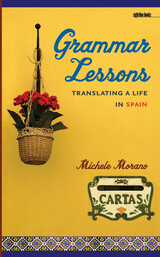 Grammar Lessons: Translating a Life in Spain
Michele Morano
University of Iowa Press, 2007 In the thirteen personal essays in Grammar Lessons, Michele Morano connects the rules of grammar to the stories we tell to help us understand our worlds. Living and traveling in Spain during a year of teaching English to university students, she learned to translate and interpret her past and present worlds—to study the surprising moments of communication—as a way to make sense of language and meaning, longing and memory.
Morano focuses first on her year of living in Oviedo, in the early 1990s, a time spent immersing herself in a new culture and language while working through the relationship she had left behind with an emotionally dependent and suicidal man. Next, after subsequent trips to Spain, she explores the ways that travel sparks us to reconsider our personal histories in the context of larger historical legacies. Finally, she turns to the aftereffects of travel, to the constant negotiations involved in retelling and understanding the stories of our lives. Throughout she details one woman’s journey through vocabulary and verb tense toward a greater sense of her place in the world.
Grammar Lessons illustrates the difficulty and delight, humor and humility of living in a new language and of carrying that pivotal experience forward. Michele Morano’s beautifully constructed essays reveal the many grammars and many voices that we collect, and learn from, as we travel.
A Grammar of Akajeru: Fragments of a Traditional North Andamanese Dialect
Raoul Zamponi and Bernard Comrie
University College London, 2021 A definitive guide to an almost extinct North Andamanese language.
Originally spoken across the northern Andamanese Islands in the Bay of Bengal, the Akajeru language is spoken today by only three people. A Grammar of Akajeru describes this unique grammatical system as it was reported at the turn of the twentieth century. Based primarily on research conducted by Victorian anthropologists Alfred R. Radcliffe-Brown and Edward Horace Man, this book offers a linguistic analysis of all extant Akajeru material as well as the scant documentation of adjacent dialects Akabo and Akakhora. This volume includes a grammatical sketch of Akajeru, an English-Akajeru lexicon, and a comparison between Akajeru and present-day Andamanese.
 A Grammar of Boumaa Fijian
R. M. W. Dixon
University of Chicago Press, 1988 The people who live in the Boumaa region of the Fijian island of Taveuni speak a dialect of Fijian that is mutually intelligible with Standard Fijian, the two differing as much perhaps as do the American and British varieties of English. During 1985, R. M. W. Dixon—one of the most insightful of linguists engaged in descriptive studies today—lived in the village of Waitabu and studied the language spoken there. He found in Boumaa Fijian a wealth of striking features unknown in commonly studied languages and on the basis of his fieldwork prepared this grammar.
Fijian is an agglutinating language, one in which words are formed by the profligate combining of morphemes. There are no case inflections, and tense and aspect as shown by independent clitics or words within a predicate complex. Most verbs come in both transitive and intransitive forms, and nouns can be build up regularly from verbal parts and verbs from nouns. The language is also marked by a highly developed pronoun system and by a vocabulary rich in areas of social significance.
In the opening chapters, Dixon describes the Islands' political, social, and linguistic organization, outlines the main points of Fijian phonology, and presents an overview of the grammar. In succeeding chapters, he examines a number of grammatical topics in greater detail, including clause and phrase structure, verbal syntax, deictics, and anaphora. The volume also includes a full vocabulary of all forms treated in discussion and three of the fifteen texts recorded from monolingual village elders on which the grammar is based.
 A Grammar of Elfdalian
Yair Sapir and Olof Lundgren
University College London, 2024 A comprehensive account of an endangered Scandinavian language, with an introduction to its history, sociolinguistics, and status.
Elfdalian is the language traditionally spoken in Älvdalen, central Sweden. Due to its linguistic difference from Swedish, several attempts have been made in Sweden to acquire official recognition of it as a minority language. However, despite the growing interest in documenting and revitalizing Elfdalian, it is still regarded as a dialect.
As one of the best-preserved members of a larger but lesser-known sub-branch of the Scandinavian languages called Dalecarlian (or Dalmål), Elfdalian is a unique language to study. The purpose of this grammar is to account for Late Classical, or Preserved Elfdalian from linguistic, historical, and sociolinguistic angles, and to make the language, including both its archaic and innovative features, accessible to a wider audience.
Grammar of Elfdalian serves as a valuable resource for Ölvdan locals who wish to revitalize or retake their language, for those who wish to transmit the language to others through preschool, school, or adult instruction, and for people who wish to study a North Germanic language for the first time. Linguists may find Elfdalian interesting from the angle of its language structure, as well as from the perspectives of sociolinguistics and language policy.
A Grammar of Epigraphic Hebrew
Sandra Landis Gogel
SBL Press, 1998 This book provides a grammar of the extrabiblical Hebrew inscriptions of Palestine that have been attributed by various archaeological, historical, and paleographic analyses to the period between the tenth and the sixth century B.C.E. These pre-Persian inscriptions constitute a corpus of epigraphic Hebrew inscriptions (including ostraca, graffiti, and seals) that has never been studied comprehensively. While studies of the better-known epigraphic Hebrew inscriptions have been attempted, this book covers the entire corpus. In addition, the seal inscriptions and the personal names have been systematically compared with the longer inscriptions for the first time.
 A Grammar of Khowar: Descriptive and Comparative Analysis
Elena Bashir
University College London, 2025 A pioneering linguistic study documenting Khowar’s complex structure and historic oral tradition, shaped by centuries of cultural exchange in northern Pakistan.
Grammar of Khowar is the first comprehensive English-language study of Khowar, a unique Indo-Aryan language spoken in northern Pakistan. Drawing on over thirty years of field research, Elena Bashir provides a detailed snapshot of the language at a critical moment in its evolution, as increasing cultural and economic pressures accelerate linguistic change.
The book presents Khowar’s phonology, morphology, and syntax, alongside an in-depth analysis of how its grammatical structures shape the way speakers conceptualize the world. Rife with original example sentences—many sourced from oral texts recorded in multiple villages—this work preserves linguistic data that might otherwise be lost. A special appendix includes a thirty-page sample text in Khowar’s Perso-Arabic script, followed by a romanized transcription and English translation, offering an invaluable resource for scholars.
A critical contribution to South Asian linguistics, this book underscores the urgency of studying and preserving endangered mountain languages before they fade from use.
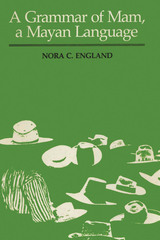 A Grammar of Mam, A Mayan Language
By Nora C. England
University of Texas Press, 1983 This is the first full-length reference grammar of Mam, a Mayan language spoken today by over 400,000 people in the western highlands of Guatemala and the state of Chiapas, Mexico. The result of over three years of extensive fieldwork in Guatemala, A Grammar of Mam, a Mayan Language is based on the dialect of Mam spoken by 12,000 people in San Ildefonso Ixtahuacan in the department of Huehuetenango, Guatemala. England organizes A Grammar of Mam according to two complementary principles: to analyze Mam following basically traditional levels of grammatical description and to present material in such a way that the background information necessary for understanding each topic of discussion shall have been previously provided. Accordingly, England's analysis of the sound system and morphophonemic processes of Mam is followed by a description of the characteristics of root, inflectional, and derivational morphology. Chapters on phrase structure precede two chapters on sentence-level syntax. A Grammar of Mam is of particular interest in analyzing a Mayan language that is both syntactically and morphologically ergative and that is innovative in the direction of strengthening the ergative system. Indeed at all levels of linguistic organization Mam is innovative, and for this reason it is uniquely interesting both historically and theoretically.
 A Grammar of Murder: Violent Scenes and Film Form
Karla Oeler
University of Chicago Press, 2009 The dark shadows and offscreen space that force us to imagine violence we cannot see. The real slaughter of animals spliced with the fictional killing of men. The missing countershot from the murder victim’s point of view. Such images, or absent images, Karla Oeler contends, distill how the murder scene challenges and changes film. Reexamining works by such filmmakers as Renoir, Hitchcock, Kubrick, Jarmusch, and Eisenstein, Oeler traces the murder scene’s intricate connections to the great breakthroughs in the theory and practice of montage and the formulation of the rules and syntax of Hollywood genre. She argues that murder plays such a central role in film because it mirrors, on multiple levels, the act of cinematic representation. Death and murder at once eradicate life and call attention to its former existence, just as cinema conveys both the reality and the absence of the objects it depicts. But murder shares with cinema not only this interplay between presence and absence, movement and stillness: unlike death, killing entails the deliberate reduction of a singular subject to a disposable object. Like cinema, it involves a crucial choice about what to cut and what to keep.
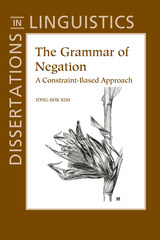 The Grammar of Negation
Jong-Bok Kim
CSLI, 2000 This book addresses three fundamental questions in the study of negation: What are the main ways of expressing sentential negation? What are the distributional properties of lexically-encoded negative elements? And, what implications do the answers to these two questions have for the theory of grammar? In answering these questions, Jong-Bok Kim investigates various aspects of negation in Korean, English, French and Italian. Addressing both empirical and theoretical issues relating to negation in these languages, he develops a nonderivational, lexicalist analysis within the constraint-based framework of Head-driven Phrase Structure Grammar. This work demonstrates that a constraint-based approach can capture the distributional possibilities of negative elements and explain related phenomena simply through their lexical properties and the interaction of the elementary morphosyntactic and valence properties of syntactic heads. The resulting constraint-based theory allows a conservative division of labor between morphology and syntax.
A Grammar of Paraguayan Guarani,
Bruno Estigarribia
University College London, 2020 The history of Guarani is a history of resilience. Paraguayan Guarani is a vibrant, modern language, mother tongue to millions of people in South America. It is the only indigenous language in the Americas spoken by a non-ethnically-indigenous majority, and since 1992, it is also an official language of Paraguay alongside Spanish. This book provides the first comprehensive reference grammar of Modern Paraguayan Guarani written for an English-language audience. It is an accessible yet thorough and carefully substantiated description of the language’s phonology, morphosyntax, and semantics. It also includes information about its centuries of documented history and its current sociolinguistic situation.
A Grammar of Ugaritic
John Screnock
SBL Press, 2022 A Grammar of Ugaritic is an accessible yet academically rigorous textbook for first-year students of Ugaritic. Eight digestible lessons include more than 150 exercises to strengthen readers’ understanding through translation and composition of not only vocalized Ugaritic but also transcribed texts and cuneiform script—strategies that develop language skills and provide a sound basis for classroom teaching. Short stories interspersed among the lessons help students consolidate their knowledge and bolster recognition of forms. An introduction to the language and its historical context, glossaries, paradigms, and a bibliography and guide for further learning supplement the lessons. Students who work through the grammar in the classroom or individually will be rewarded with the ability to read real Ugaritic texts in cuneiform.
A Grammar Writer's Cookbook
Edited by Miriam Butt, Tracy Holloway King, María-Eugenia Niño, and Frédérique S
CSLI, 1999 A Grammar Writer's Cookbook is an introduction to the issues involved in the writing and design of computational grammars, reporting on experiences and analyses within the ParGram parallel grammar development project. Using the Lexical Functional Grammar (LFG) framework, this project implemented grammars for German, French, and English to cover parallel corpora.
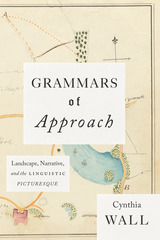 Grammars of Approach: Landscape, Narrative, and the Linguistic Picturesque
Cynthia Wall
University of Chicago Press, 2019 In Grammars of Approach, Cynthia Wall offers a close look at changes in perspective in spatial design, language, and narrative across the late eighteenth and early nineteenth centuries that involve, literally and psychologically, the concept of “approach.” In architecture, the term “approach” changed in that period from a verb to a noun, coming to denote the drive from the lodge at the entrance of an estate “through the most interesting part of the grounds,” as landscape designer Humphrey Repton put it. The shift from the long straight avenue to the winding approach, Wall shows, swung the perceptual balance away from the great house onto the personal experience of the visitor. At the same time, the grammatical and typographical landscape was shifting in tandem, away from objects and Things (and capitalized common Nouns) to the spaces in between, like punctuation and the “lesser parts of speech”. The implications for narrative included new patterns of syntactical architecture and the phenomenon of free indirect discourse. Wall examines the work of landscape theorists such as Repton, John Claudius Loudon, and Thomas Whately alongside travel narratives, topographical views, printers’ manuals, dictionaries, encyclopedias, grammars, and the novels of Defoe, Richardson, Burney, Radcliffe, and Austen to reveal a new landscaping across disciplines—new grammars of approach in ways of perceiving and representing the world in both word and image.
 Grammars of the Urban Ground
Ash Amin and Michele Lancione, editors
Duke University Press, 2022 The contributors to Grammars of the Urban Ground develop a new conceptual framework and vocabulary for capturing the complex, ever-shifting, and interactive processes that shape contemporary cities. Building on Marxist, feminist, queer, and critical race theory as well as the ontological turn in urban studies, they propose a mode of analysis that resists the staple of siloed categories such as urban “economy,” “society,” and “politics.” In addition to addressing key concepts of urban studies such as dispossession and scale, the contributors examine the infrastructures of plutocratic life in London, reconfigure notions of gentrification as a process of racial banishment, and seek out alternative archives for knowledge about urban density. They also present case studies of city life in the margins and peripheries of São Paulo, Kinshasa, Nairobi, and Jakarta. In so doing, they offer a foundation for better understanding the connective and aggregative forces of city-making and the entanglements and relations that constitute cities and their everyday politics.
Contributors. Ash Amin, Teresa Caldeira, Filip De Boeck, Suzanne Hall, Caroline Knowles, Michele Lancione, Colin McFarlane, Natalie Oswin, Edgar Pieterse, Ananya Roy, AbdouMaliq Simone, Tatiana Thieme, Nigel Thrift, Mariana Valverde
 Grammatical Competence and Parsing Performance
Bradley L. Pritchett
University of Chicago Press, 1992 How does a parser, a device that imposes an analysis on a string of symbols so that they can be interpreted, work? More specifically, how does the parser in the human cognitive mechanism operate? Using a wide range of empirical data concerning human natural language processing, Bradley Pritchett demonstrates that parsing performance depends on grammatical competence, not, as many have thought, on perception, computation, or semantics.
Pritchett critiques the major performance-based parsing models to argue that the principles of grammar drive the parser; the parser, furthermore, is the apparatus that tries to enforce the conditions of the grammar at every point in the processing of a sentence. In comparing garden path phenomena, those instances when the parser fails on the first reading of a sentence and must reanalyze it, with occasions when the parser successfully functions the first time around, Pritchett makes a convincing case for a grammar-derived parsing theory.
Grammatical Framework: Programming with Multilingual Grammars
Aarne Ranta
CSLI, 2011 Grammatical Framework is a programming language designed for writing grammars, which has the capability of addressing several languages in parallel. This thorough introduction demonstrates how to write grammars in Grammatical Framework and use them in applications such as tourist phrasebooks, spoken dialogue systems, and natural language interfaces. The examples and exercises presented here address several languages, and the readers are shown how to look at their own languages from the computational perspective.
Grammatical Interfaces in HPSG
Edited by Ronnie Cann, Claire Grover, and Philip H. Miller
CSLI, 2001 This collection of recent work in Head-Driven Phrase Structure Grammar focuses on interfaces between different grammatical components; its fifteen papers explore interface phenomena such as auxiliary contraction in English, analysis of illocutionary force in HPSG, syntactic and semantic aspects of Korean relative clause formation, negation in Welsh, and several others.
The Grammatical Structures of English and Spanish
Robert P. Stockwell, J. Donald Bowen, and John W. Martin
University of Chicago Press, 1965 This series is designed to provide a detailed account of one of the major problems in the teaching of a second language—the interference caused by structural differences between the native language of the learner and the foreign language he is studying. The similarities and differences between English and the language being taught are described in two volumes, one on the sound systems and one on the grammatical systems, for some of the foreign languages most in demand in the United States today.
Grammatical Theory: Its Limits and Its Possibilities
Frederick J. Newmeyer
University of Chicago Press, 1983 Newmeyer persuasively defends the controversial theory of transformational generative grammar. Grammatical Theory is for every linguist, philosopher, or psychologist who is skeptical of generative grammar and wants to learn more about it.
Newmeyer's formidable scholarship raises the level of debate on transformational generative grammar. He stresses the central importance of an autonomous formal grammar, discusses the limitations of "discourse-based" approaches to syntax, cites support for generativist theory in recent research, and clarifies misunderstood concepts associated with generative grammar.
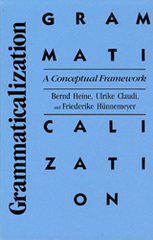 Grammaticalization: A Conceptual Framework
Bernd Heine, Ulrike Claudi, and Friederike Hünnemeyer
University of Chicago Press, 1991 Grammaticalization, the process of converting regular lexical items and structures into conventionally interpreted grammatical morphemes, has traditionally been perceived as a syntactic or morphological process. Presenting a wealth of evidence from African languages, the authors argue that the development of grammatical categories is in fact strongly influenced by pragmatic and cognitive forces, factors that are located outside the confines of language structure. They discuss previous models and relate grammaticalization studies to alternative approaches such as localism and natural grammar theory.
This volume challenges theories which describe language as a static system, as well as those which assume that linguistic categorization is based on discrete morpheme types, word classes, or sentence constituents. In contrast, the book's central argument is that both language structure and language use are dynamic phenomena and that linguistic behavior is essentially a creative activity. That creativity manifests itself, for example, in conceptual transfer leading to the encoding of more abstract concepts and of grammatical categories. Another key element of this theory is captured in the term "grammaticalization chain," which refers to a specific kind of linguistic category which cuts across morpheme types and word classes and has both a synchronic and diachronic dimension.
Gramsci at Sea
Sharad Chari
University of Minnesota Press, 2023 How might an oceanic Gramsci speak to Black aquafuturism and other forms of oceanic critique? This succinct work reads Antonio Gramsci’s writings on the sea, focused in his prison notes on waves of imperial power in the inter-war oceans of his time. Sharad Chari argues that the imprisoned militant’s method is oceanic in form, and that this oceanic Marxism can attend to the roil of sociocultural dynamics, to waves of imperial power, as well as to the capacity of Black, Drexciyan, and other forms of oceanic critique to “storm” us on different shores.
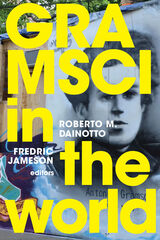 Gramsci in the World
Roberto M. Dainotto and Fredric Jameson, editors
Duke University Press, 2020 Antonio Gramsci's Prison Notebooks have offered concepts, categories, and political solutions that have been applied in a variety of social and political contexts, from postwar Italy to the insurgencies of the Arab Spring. The contributors to Gramsci in the World examine the diverse receptions and uses of Gramscian thought, highlighting its possibilities and limits for understanding and changing the world. Among other topics, they explore Gramsci's importance to Caribbean anticolonial thinkers like Stuart Hall, his presence in decolonial indigenous movements in the Andes, and his relevance to understanding the Chinese Left. The contributors consider why Gramsci has had relatively little impact in the United States while also showing how he was a major force in pushing Marxism beyond Europe—especially into the Arab world and other regions of the Global South. Rather than taking one interpretive position on Gramsci, the contributors demonstrate the ongoing relevance of his ideas to revolutionary theory and praxis.
Contributors. Alberto Burgio, Cesare Casarino, Maria Elisa Cevasco, Kate Crehan, Roberto M. Dainotto, Michael Denning, Harry Harootunian, Fredric Jameson, R. A. Judy, Patrizia Manduchi, Andrea Scapolo, Peter D. Thomas, Catherine Walsh, Pu Wang, Cosimo Zene
 Gramsci is Dead: Anarchist Currents in the Newest Social Movements
Richard J. F. Day
Pluto Press, 2005 Gramsci and the concept of hegemony cast a long shadow over radical political theory. Yet how far has this theory got us? Is it still central to feminism, anti-capitalism, anti-racism, anarchism, and other radical social movements today?
Unlike previous revolutionary movements, Day argues, most contemporary radical social movements do not strive to take control of the state. Instead, they attempt to develop new forms of self-organisation that can run in parallel with---or as alternatives to---existing forms of social, political, and economic organization. This is to say that they follow a logic of affinity rather than one of hegemony.
This book draws together a variety of different strands in political theory to weave together an innovative new approach to politics today. Rigorous and wide-ranging, Day introduces and interrogates key concepts. From Hegel's concept of recognition, through theories of hegemony and affinity to Hardt and Negri's reflections on Empire, Day maps academia's theoretical and philosophical concerns onto today's politics of the street.
Ideal for all students of political theory, Day's fresh approach combines Marxist, Anarchist and Post-structuralist theory to shed new light on the politics and practice of contemporary social movements.
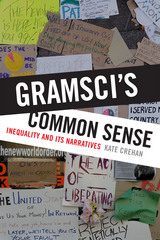 Gramsci's Common Sense: Inequality and Its Narratives
Kate Crehan
Duke University Press, 2016 Acknowledged as one of the classics of twentieth-century Marxism, Antonio Gramsci's Prison Notebooks contains a rich and nuanced theorization of class that provides insights that extend far beyond economic inequality. In Gramsci's Common Sense Kate Crehan offers new ways to understand the many forms that structural inequality can take, including in regards to race, gender, sexual orientation, and religion. Presupposing no previous knowledge of Gramsci on the part of the reader, she introduces the Prison Notebooks and provides an overview of Gramsci’s notions of subalternity, intellectuals, and common sense, putting them in relation to the work of thinkers such as Bourdieu, Arendt, Spivak, and Said. In the case studies of the Tea Party and Occupy Wall Street movements, Crehan theorizes the complex relationships between the experience of inequality, exploitation, and oppression, as well as the construction of political narratives. Gramsci's Common Sense is an accessible and concise introduction to a key Marxist thinker whose works illuminate the increasing inequality in the twenty-first century.
 Gramsci’s Fall
Nora Bossong
Seagull Books, 2019 Is it possible to fight for social justice if you’ve never really loved another person? Can you save a country if you’re in love?
Forty-six-year-old Anton Stöver’s marriage is broken. His affairs are a thing of the past, and his career at the university has reached a dead end. One day he is offered the chance to go to Rome to conduct research on Antonio Gramsci, who was, at one time, the leading figure of Italian communism. Once there, he falls obsessively in love with a young woman. His attention now torn between past and present, he tries to stay focused on Gramsci’s story: frail, feverish, and recovering in a Soviet sanatorium. Though Gramsci is supposed to save Italy from Mussolini’s seizure of power, he falls in love with a Russian comrade instead. Moving backward and forward in time, the story is told from the alternating perspectives of Stover’s conversational first-person narrative and lyrical third-person prose that recreates Gramsci’s inner life. With a subtle sense of the absurd, Nora Bossong explores the conflicts between having intense feelings for another and fighting for great ideals.
 Grand & Arsenal
Kerri Webster
University of Iowa Press, 2012 From the intersection of public and private fear, Kerri Webster’s award-winning collection speaks of anxiety and awe, vanishings and reappearances. A city both rises and falls; worlds are simultaneously spoken into being and torn down by words. “This is how time sounds,” Webster writes; this is the hum and click of bodies “desirous of believing we’re all vehicle, every wet atom of us,” even as the saved seeds root in the fallen brickwork and the artifacts pile up: wisdom teeth, hummingbird skulls, plumb bobs, icons, antlers, incandescent bulbs. Grand & Arsenal begins “Bless me I am not myself,” but it is not long before the probability of being blessed is revealed to be as remote as the concept of a whole self. Thus begins the book’s defining struggle, enacted by a multitude of voices which move from rush to stumble and back again—meanwhile using all the tools we as a culture use to hold fear at arm’s length. We hear a familiar irony, as in “On a trip West, porn in the hotel room. I can take or leave it. The climax that puts me in the seats? World’s end.” We hear humor, as in “I believed in . . . / . . . a certain apocalypse not so much foretold as crafted / by large-brained monkeys.” We hear understatement, as in “knowing it does not matter / in the grand—she would say scheme, I would say / mishap—.” Most importantly, though, these poems allow for the fleeting triumph of an undefended voice, which appears often to emerge tentatively from a sort of exhausted collapse.
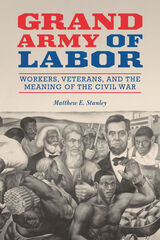 Grand Army of Labor: Workers, Veterans, and the Meaning of the Civil War
Matthew E. Stanley
University of Illinois Press, 2021 Enlisting memory in a new fight for freedom From the Gilded Age through the Progressive era, labor movements reinterpreted Abraham Lincoln as a liberator of working people while workers equated activism with their own service fighting for freedom during the war. Matthew E. Stanley explores the wide-ranging meanings and diverse imagery used by Civil War veterans within the sprawling radical politics of the time. As he shows, a rich world of rituals, songs, speeches, and newspapers emerged among the many strains of working class cultural politics within the labor movement. Yet tensions arose even among allies. Some people rooted Civil War commemoration in nationalism and reform, and in time, these conservative currents marginalized radical workers who tied their remembering to revolution, internationalism, and socialism. An original consideration of meaning and memory, Grand Army of Labor reveals the complex ways workers drew on themes of emancipation and equality in the long battle for workers’ rights.
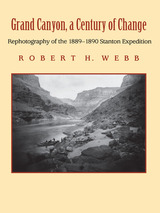 Grand Canyon, A Century of Change: Rephotography of the 1889-1890 Stanton Expedition
Robert H. Webb
University of Arizona Press, 1996 Photographs made in Grand Canyon a century ago may provide us today with a sense of history; photographs made a century later from the same vantage points give us a more precise picture of change in this seemingly timeless place. Between 1889 and 1890, Robert Brewster Stanton made photographs every 1-2 miles through the river corridor for the purpose of planning a water-level railroad route and produced the largest collection of photographs of the Colorado River at one point in time. Robert Webb, a USGS hydrologist conducting research on debris flows in the Canyon, obtained the photographs and from 1989 to 1995 replicated all 445 of the views captured by Stanton, matching as closely as possible the original camera positions and lighting conditions.
Grand Canyon, a Century of Change assembles the most dramatic of these paired photographs to demonstrate both the persistence of nature and the presence of humanity. Unexpected longevity of some plant species, effects of animal grazing, and expansion of cacti are all captured by the replicate photographs. More telling is evidence of the impact of Glen Canyon Dam: increased riparian vegetation, new marshes, aggraded debris fans, and eroded sand bars. In the accompanying text, Webb provides a thorough analysis of what each pair of photographs shows and places the project in its historical context. Complementing his narrative are six sidebar articles by authorities on Canyon natural history that further attest to a century of change. The level of detail obtained from the photographs represents one of the most extensive long-term monitoring efforts ever conducted in a national park; it is the most detailed documentation effort ever performed using repeat photography.
Much more than simply a picture book, Grand Canyon, a Century of Change is an environmental history of the river corridor, a fascinating book that clearly shows the impact of human influence on Grand Canyon and warns us that its future is very much in our hands.
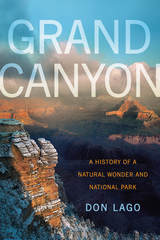 Grand Canyon: A History of a Natural Wonder and National Park
Don Lago
University of Nevada Press, 2015 The Grand Canyon has long inspired deep emotions and responses. For the Native Americans who lived there, the canyon was home, full of sacred meanings. For the first European settlers to see it, the canyon drove them to great exploration adventures and Wild West dreams of wealth. The canyon also held deep importance for America’s pioneer conservationists such as Teddy Roosevelt, John Muir, and Aldo Leopold, and it played a central role in the emerging environmental movement.
The Grand Canyon became a microcosm of the history and evolving values of the
National Park Service, long conflicted between encouraging tourism and protecting nature. Many vivid characters shaped the canyon’s past. Its largest story is one of cultural history and changing American visions of the land.
Grand Canyon: A History of a Natural Wonder and National Park is a mixture of great storytelling, unlikely characters, and important ideas. The book will appeal to both general readers and scholars interested in seeking a broader understanding of the canyon.
Grand Canyon Birds: Historical Notes, Natural History and Ecology
Bryan T. Brown
University of Arizona Press, 1987 An essential book for all bird and wildlife buffs visiting the Grand Canyon. —Wildlife Book Review
"Will benefit all amateur naturalists because of its survey of the life zone patterns in [the] southwestern United States." —Science Books & Films
"The subtitle accurately reflects the contents of this excellent book on the birds of a unique natural wonder and national treasure. . . . An annotated checklist discusses the status and abundance of each of the over 300 species of birds known to have occurred in the Grand Canyon region, which is defined here as the river between Glen Canyon Dam and Lake Mead and the contiguous plateaus to the north and south." —Journal of Arizona History
The Grand Canyon: Intimate Views
Edited by Robert C. Euler and Frank Tikalsky; Foreword by Ann H. Zwinger
University of Arizona Press, 1992 Your personal tour of the Grand Canyon by the folks who know it best! Geology and biology, Indians and explorers, rafting and hiking—it's all here in this one handy guide written by five people whose years of hiking, river running, studying, and simply contemplating the Canyon have given them an intimate knowledge of its wonders that few others can match.
Contents
Foreword, by Ann H. Zwinger
1. The Geologic Record, by Stanley S. Beus
2. The Living Canyon, by Steven W. Carothers
3. Grand Canyon Indians, by Robert C. Euler
4. Historical Explorations, by Robert C. Euler
5. The Canyon by River, by Kim Crumbo
6. Hiking the Canyon, by Frank Tikalsky
Grand Canyon Place Names
Byrd H. Granger
University of Arizona Press, 1960 This handy guidebook for Canyon visitors gives elevation, location, and name derivations for more than 200 locales, from The Abyss to Zuni Point. Originally published in 1976.
Grand Concourse: A Play
Heidi Schreck
Northwestern University Press, 2015 Shelley spends her days running a soup kitchen in the Bronx, her sense of purpose inseparable from her religious faith, though both have begun to waver. Emma, a college dropout looking for direction, arrives at the kitchen hoping to find it there. She brings a needed jolt to the place, helping a long-time client toward a new job, but her energy also proves unsettling. Even as her behavior grows steadily more erratic, Shelley still wants to believe in her, despite the mounting evidence that she shouldn’t. Shelley must finally ask herself how well she really knows the people she sees everyday, how much she can trust them, and what she can and cannot forgive.
The Grand Continuum: Reflections on Joyce and Metaphysics
David A. White
University of Pittsburgh Press, 1983
The assumptions that literary criticism and philosophy are closely linked—and that both disciplines can learn much from each other—lead David White to examine key passages in James Joyce’s novels both as a philosopher and as literary critic. In so doing, he develops a thesis that Joyce’s attempt to capture the mysterious process whereby perception and consciousness are translated into language entails a fundamental challenge to everyday notions of reality. Joyce’s stylistic brilliance and virtuosity, his destruction of normal syntax and meaning, “shock one into a new reality.” In the book’s final section, White examines the subtle relation between literary language and human consciousness and traces parallels between Joyce’s stylistic experimentation and Wittgenstein’s and Husserl’s ideas about language.
 Grand Designs: Labor, Empire, and the Museum in Victorian Culture
Lara Kriegel
Duke University Press, 2007 With this richly illustrated history of industrial design reform in nineteenth-century Britain, Lara Kriegel demonstrates that preoccupations with trade, labor, and manufacture lay at the heart of debates about cultural institutions during the Victorian era. Through aesthetic reform, Victorians sought to redress the inferiority of British crafts in comparison to those made on the continent and in the colonies. Declaring a crisis of design and workmanship among the British laboring classes, reformers pioneered schools of design, copyright protections, and spectacular displays of industrial and imperial wares, most notably the Great Exhibition of 1851. Their efforts culminated with the establishment of the South Kensington Museum, predecessor to the Victoria and Albert Museum, which stands today as home to the world’s foremost collection of the decorative and applied arts. Kriegel’s identification of the significant links between markets and museums, and between economics and aesthetics, amounts to a rethinking of Victorian cultural formation. Drawing on a wide range of sources, including museum guidebooks, design manuals, illustrated newspapers, pattern books, and government reports, Kriegel brings to life the many Victorians who claimed a stake in aesthetic reform during the middle years of the nineteenth century. The aspiring artists who attended the Government School of Design, the embattled provincial printers who sought a strengthened industrial copyright, the exhibition-going millions who visited the Crystal Palace, the lower-middle-class consumers who learned new principles of taste in metropolitan museums, and the working men of London who critiqued the city’s art and design collections—all are cast by Kriegel as leading cultural actors of their day. Grand Designs shows how these Victorians vied to upend aesthetic hierarchies in an imperial age and, in the process, to refashion London’s public culture.
 Grand Duke Nikolai Nikolaevich: Supreme Commander of the Russian Army
Paul Robinson
Northern Illinois University Press, 2015 Grand Duke Nikolai Nikolaevich Romanov (1856–1929) was a key figure in late Imperial Russia, and one of its foremost soldiers. At the outbreak of World War I, his cousin, Tsar Nicholas II, appointed him Supreme Commander of the Russian Army. From 1914 to 1915, and then again briefly in 1917, he was commander of the largest army in the world in the greatest war the world had ever seen. His appointment reflected the fact that he was perhaps the man the last Emperor of Russia trusted the most. At six foot six, the Grand Duke towered over those around him. His fierce temper was a matter of legend. However, as Robinson’s vivid account shows, he had a more complex personality than either his supporters or detractors believed.
In a career spanning 50 years, the Grand Duke played a vital role in transforming Russia’s political system. In 1905, the Tsar assigned him the duty of coordinating defense and security planning for the entire Russian empire. When the Tsar asked him to assume the mantle of military dictator, the Grand Duke, instead of accepting, persuaded the Tsar to sign a manifesto promising political reforms. Less opportunely, he also had a role in introducing the Tsar and Tsarina to the infamous Rasputin. A few years after the revolution in 1917, the Grand Duke became de facto leader of the Russian émigré community.
Despite his importance, the only other biography of the Grand Duke was written by one of his former generals in 1930, a year after his death, and it is only available in Russian. The result of research in the archives of seven countries, this groundbreaking biography—the first to appear in English—covers the Grand Duke’s entire life, examining both his private life and his professional career. Paul Robinson’s engaging account will be of great value to those interested in World War I and military history, Russian history, and biographies of notable figures.
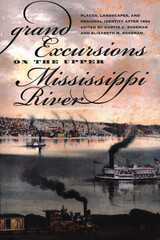 Grand Excursions on the Upper Mississippi River: Places, Landscapes, and Regional Identity after 1854
Curtis C. & Elizabeth M. Roseman & Roseman
University of Iowa Press, 2004 In June 1854 the Grand Excursion celebrated in festive style the completion of the Chicago and Rock Island Railroad to the Mississippi River. Hundreds of dignitaries including newspaper editors and other journalists; politicians; academics, writers and artists; business and industry leaders; and railroad officials were among those who traveled by rail from Chicago to Rock Island, Illinois, then by steamboat to St. Paul in Minnesota Territory. The travelers were shown a region undergoing rapid settlement by Europeans—an area of great natural beauty offering many promises for additional development.
One hundred and fifty years later, the thirteen essays in this volume examine the activities and environments of the 1854 Grand Excursion and place them in the context of an evolving regional identity for the Upper Mississippi River Valley based on the economy, culture, geography, and history of the area. In a series of “excursions,” the contributors explore the building of the Chicago and Rock Island Railroad, eastern newspaper accounts of the 1854 excursion, steamboating, the area’s pictorial landscape, passenger trains along the scenic river, the genesis and features of river towns, the control of the river for navigation, the development of preserves, parks, and recreation areas, the lumber industry, and commercial fishing. The book concludes by examining the resurgence of river-oriented development, as river towns are once again embracing the Mississippi.
Generously illustrated with maps, engravings, ephemera, and historic and present-day photographs, Grand Excursions on the Upper Mississippi River will be of interest to tourists and residents of the area, river aficionados, railroad and steamboat history buffs, as well as academics interested in the history, geography, and regional development of the area.
 The Grand Food Bargain: and the Mindless Drive for More
Kevin D. Walker
Island Press, 2019 When it comes to food, Americans seem to have a pretty great deal. Our grocery stores are overflowing with countless varieties of convenient products. But like most bargains that are too good to be true, the modern food system relies on an illusion. It depends on endless abundance, but the planet has its limits. So too does a healthcare system that must absorb rising rates of diabetes and obesity. So too do the workers who must labor harder and faster for less pay.
Through beautifully-told stories from around the world, Kevin Walker reveals the unintended consequences of our myopic focus on quantity over quality. A trip to a Costa Rica plantation shows how the Cavendish banana became the most common fruit in the world and also one of the most vulnerable to disease. Walker’s early career in agribusiness taught him how pressure to sell more and more fertilizer obscured what that growth did to waterways. His family farm illustrates how an unquestioning belief in “free markets” undercut opportunity in his hometown.
By the end of the journey, we not only understand how the drive to produce ever more food became hardwired into the American psyche, but why shifting our mindset is essential. It starts, Walker argues, with remembering that what we eat affects the wider world. If each of us decides that bigger isn’t always better, we can renegotiate the grand food bargain, one individual decision at a time.
 Grand Forage 1778: The Battleground Around New York City
Todd W. Braisted
Westholme Publishing, 2016 The British Surprise Attack into New Jersey and New York to Support Their Planned Invasion of the Southern Colonies
After two years of defeats and reverses, 1778 had been a year of success for George Washington and the Continental Army. France had entered the war as the ally of the United States, the British had evacuated Philadelphia, and the redcoats had been fought to a standstill at the Battle of Monmouth. While the combined French-American effort to capture Newport was unsuccessful, it lead to intelligence from British-held New York that indicated a massive troop movement was imminent. British officers were selling their horses and laying in supplies for their men. Scores of empty naval transports were arriving in the city. British commissioners from London were offering peace, granting a redress of every grievance expressed in 1775. Spies repeatedly reported conversations of officers talking of leaving. To George Washington, and many others, it appeared the British would evacuate New York City, and the Revolutionary War might be nearing a successful conclusion. Then, on September 23, 1778, six thousand British troops erupted into neighboring Bergen County, New Jersey, followed the next day by three thousand others surging northward into Westchester County, New York. Washington now faced a British Army stronger than Burgoyne’s at Saratoga the previous year. What, in the face of all intelligence to the contrary, had changed with the British?
Through period letters, reports, newspapers, journals, pension applications, and other manuscripts from archives in the United States, Canada, United Kingdom, and Germany, the complete picture of Britain’s last great push around New York City can now be told. The strategic situation of Britain’s tenuous hold in America is intermixed with the tactical views of the soldiers in the field and the local inhabitants, who only saw events through their narrow vantage points. This is the first publication to properly narrate the events of this period as one campaign. Grand Forage 1778: The Battleground Around New York City by historian Todd W. Braisted explores the battles, skirmishes, and maneuvers that left George Washington and Sir Henry Clinton playing a deadly game of chess in the lower Hudson Valley as a prelude to the British invasion of the Southern colonies.
|
|


